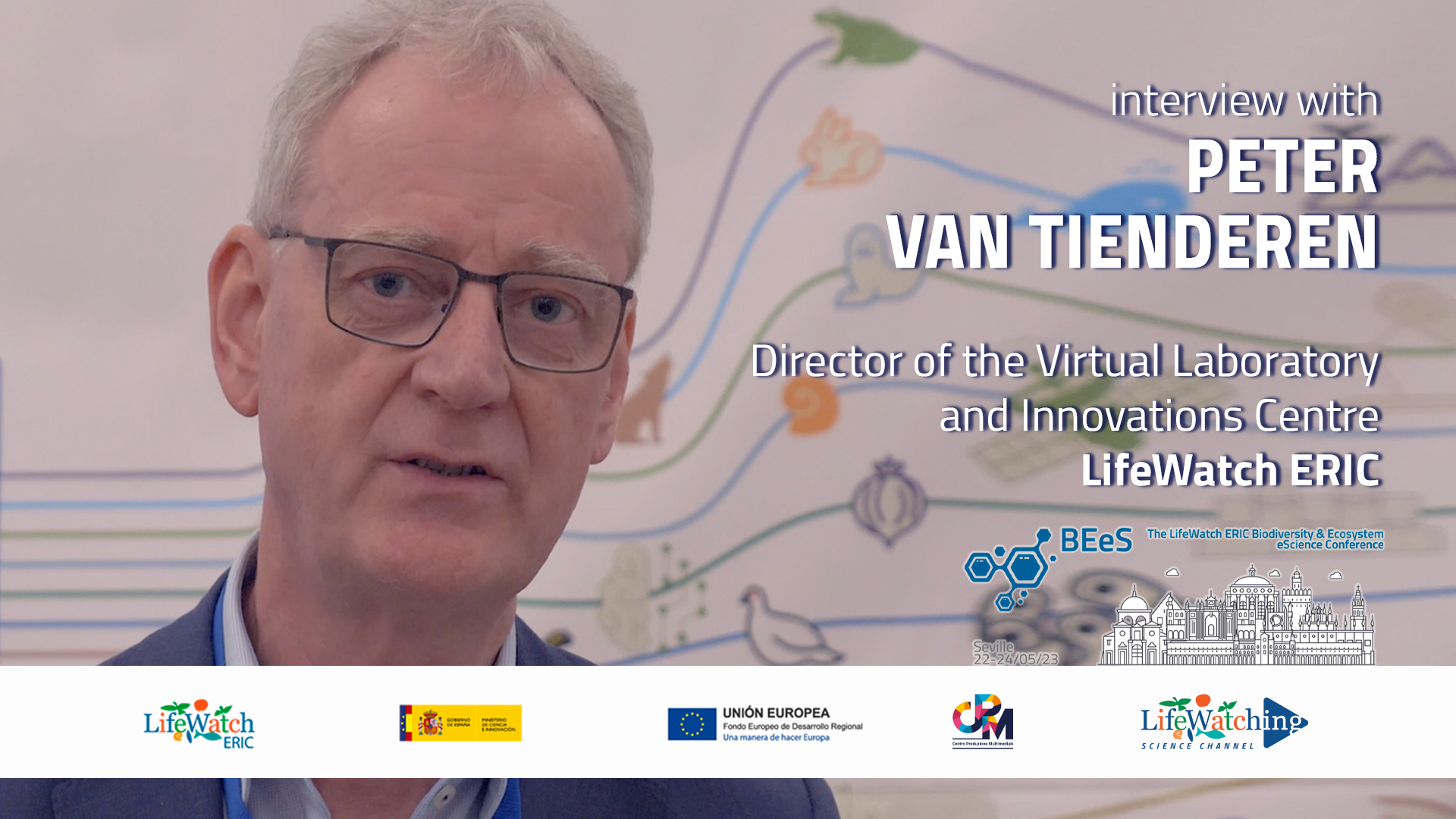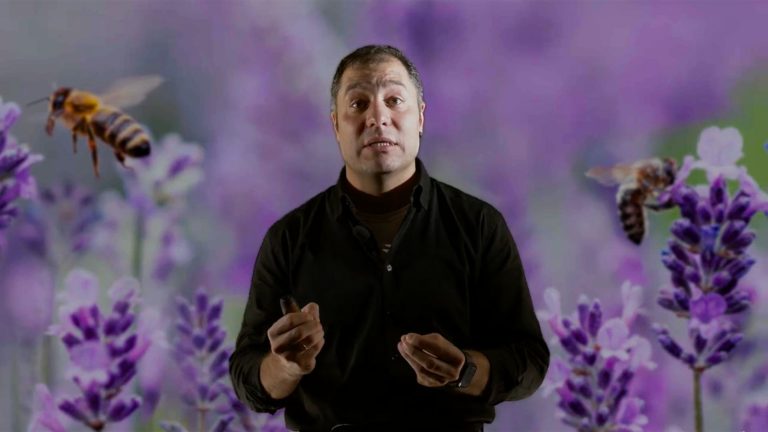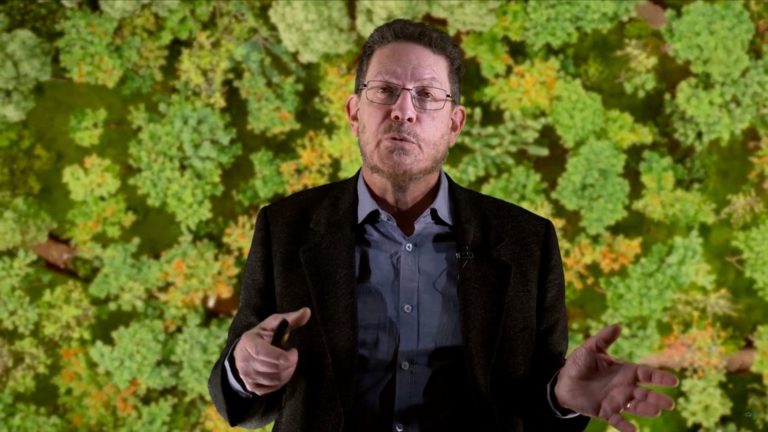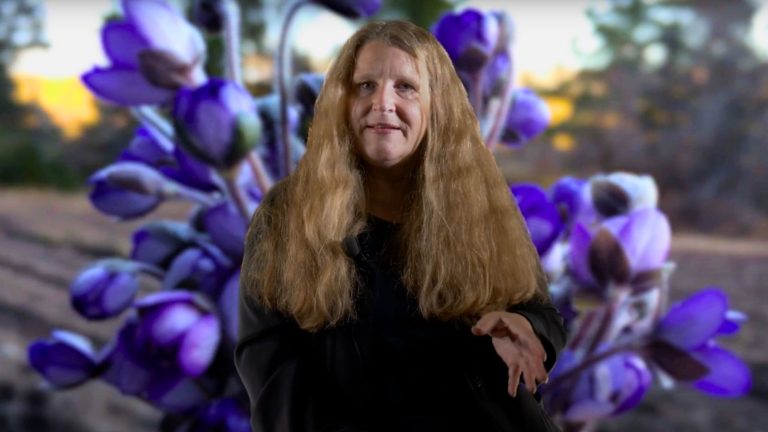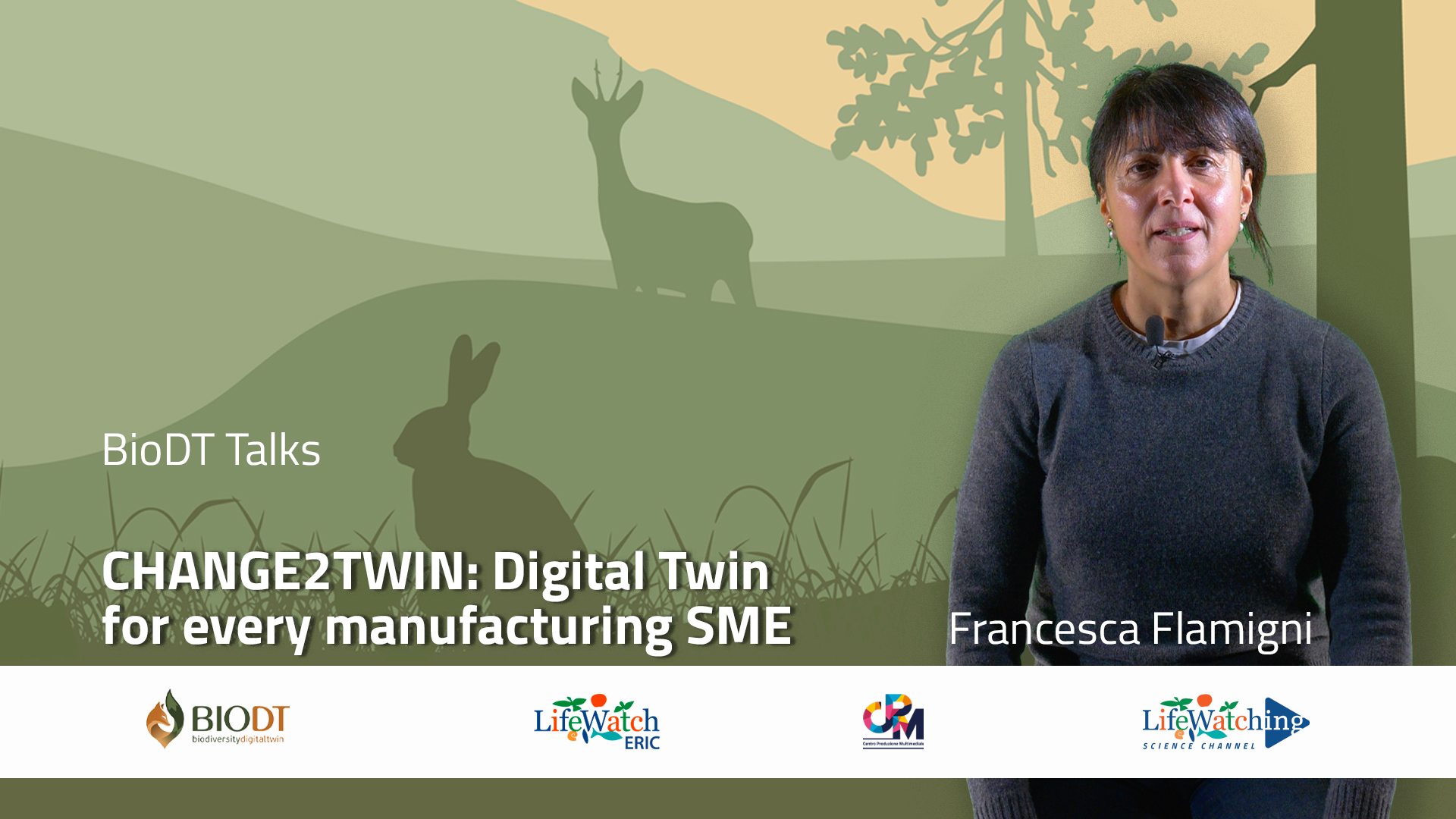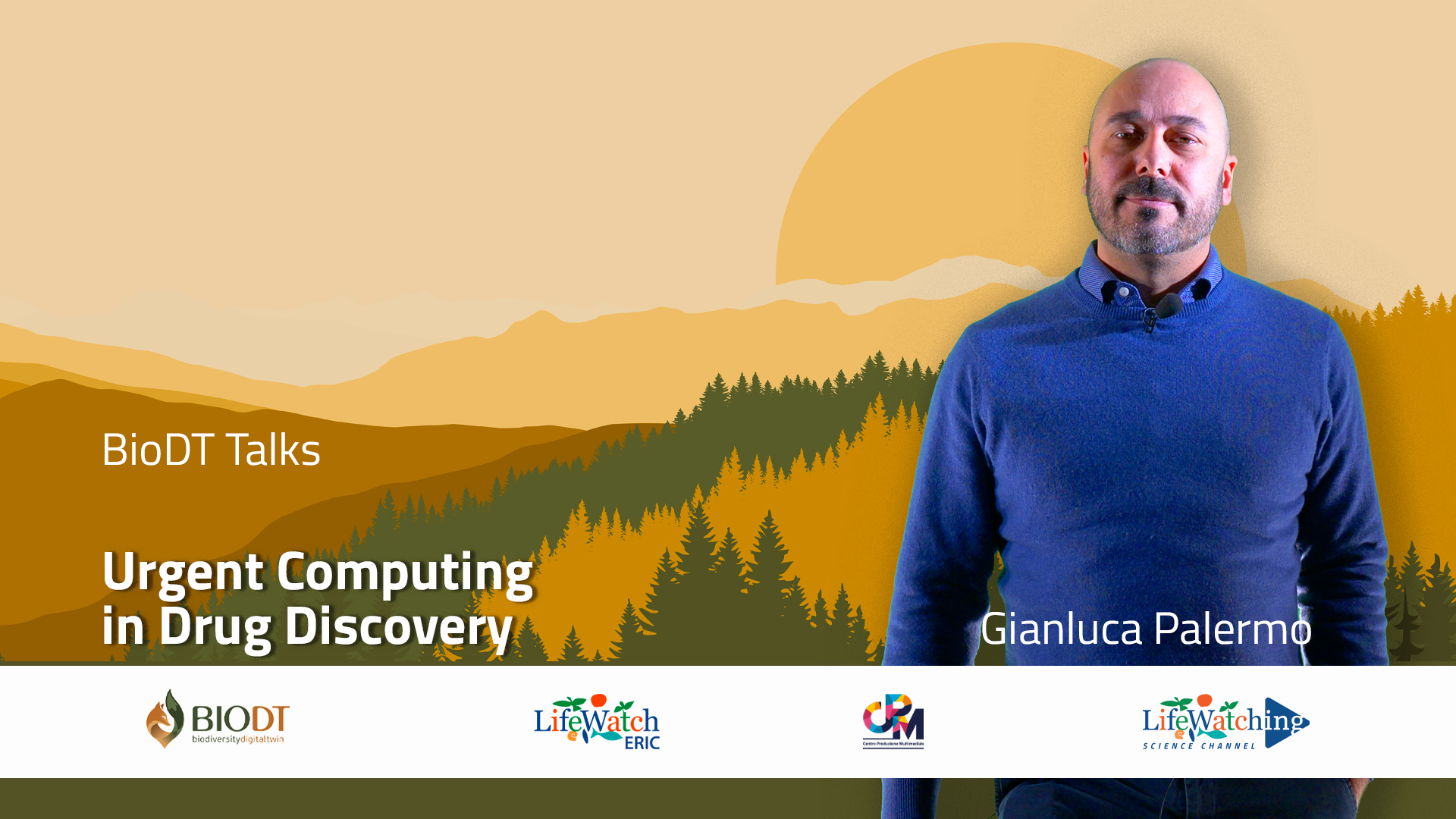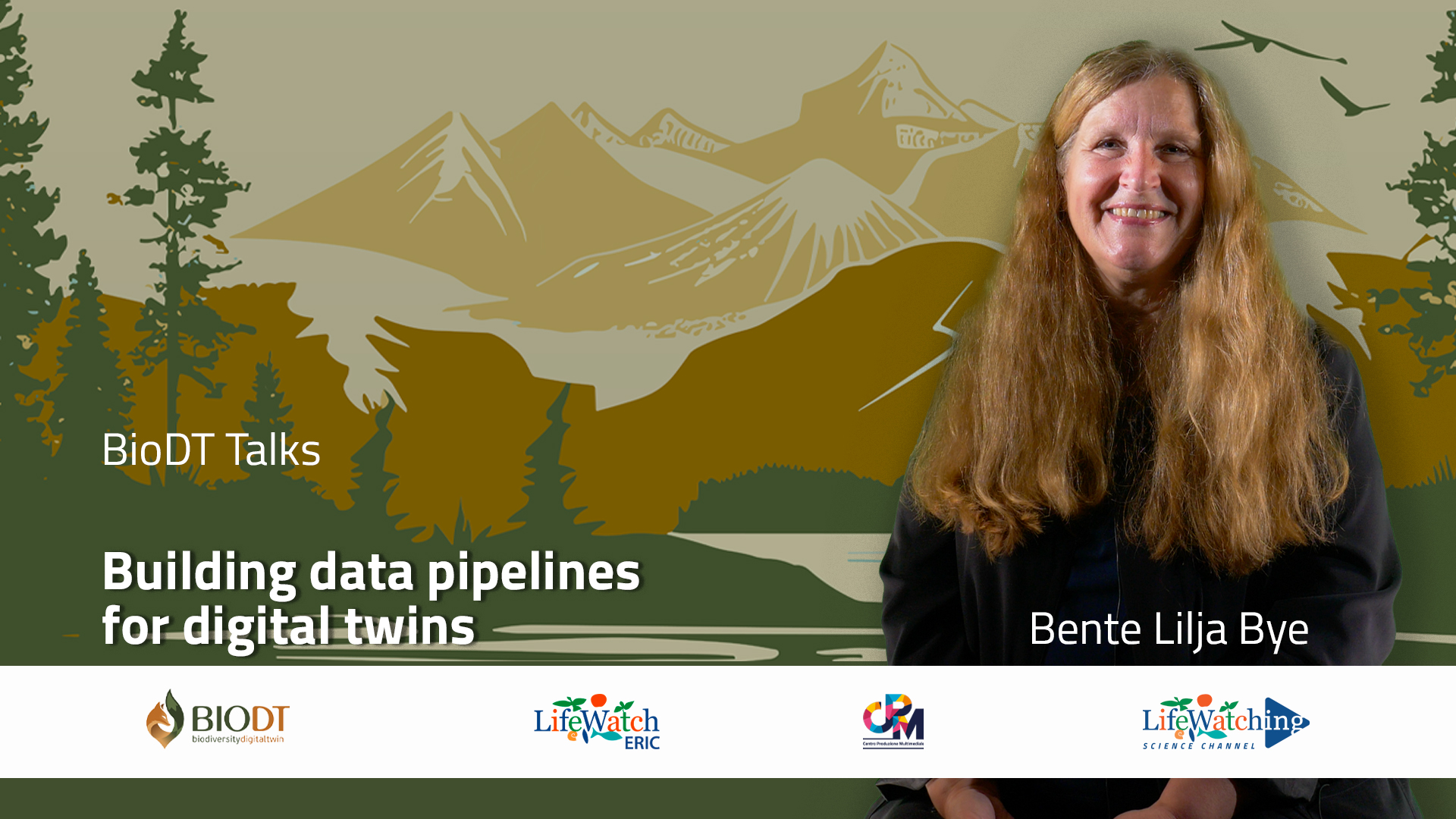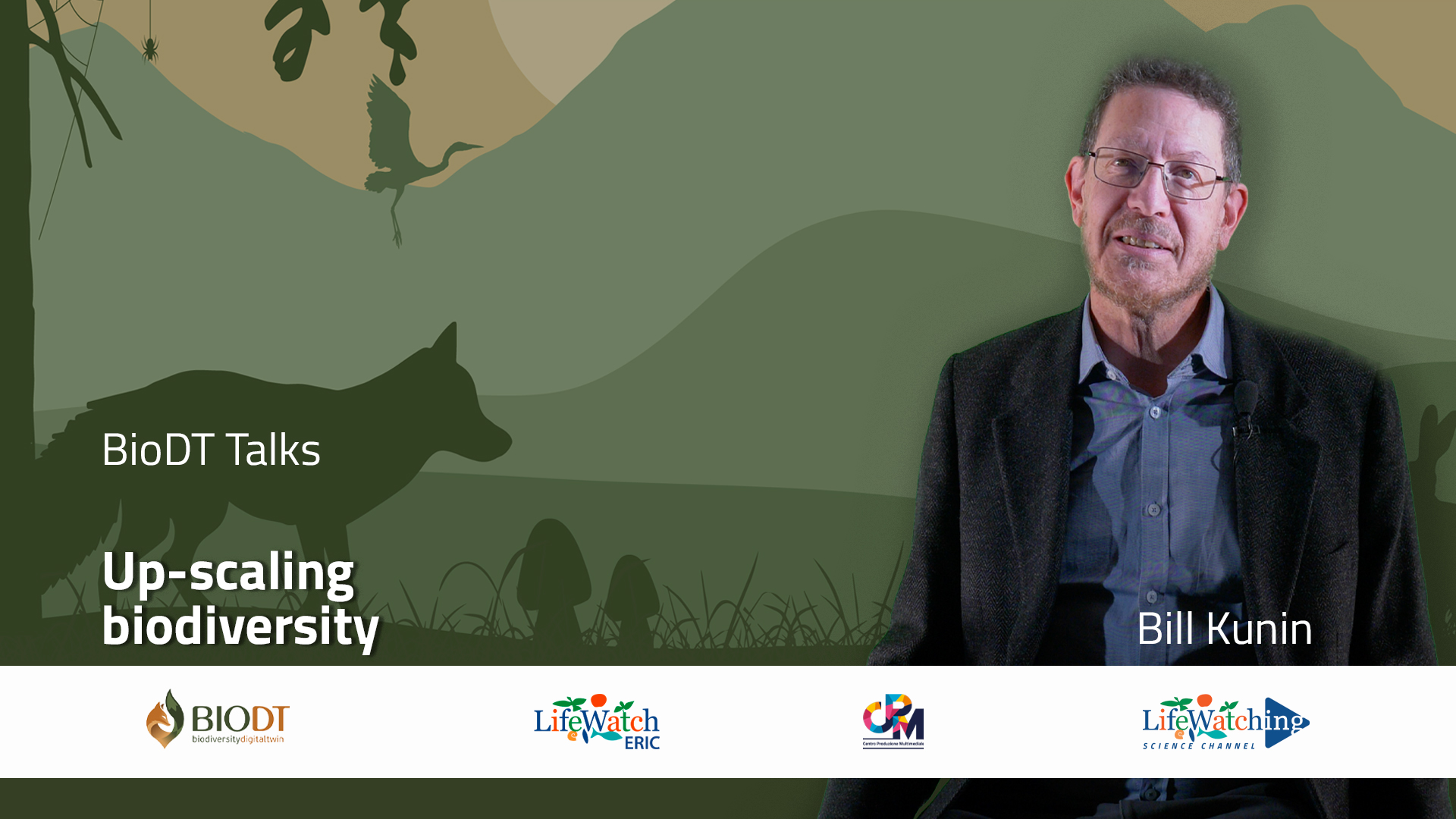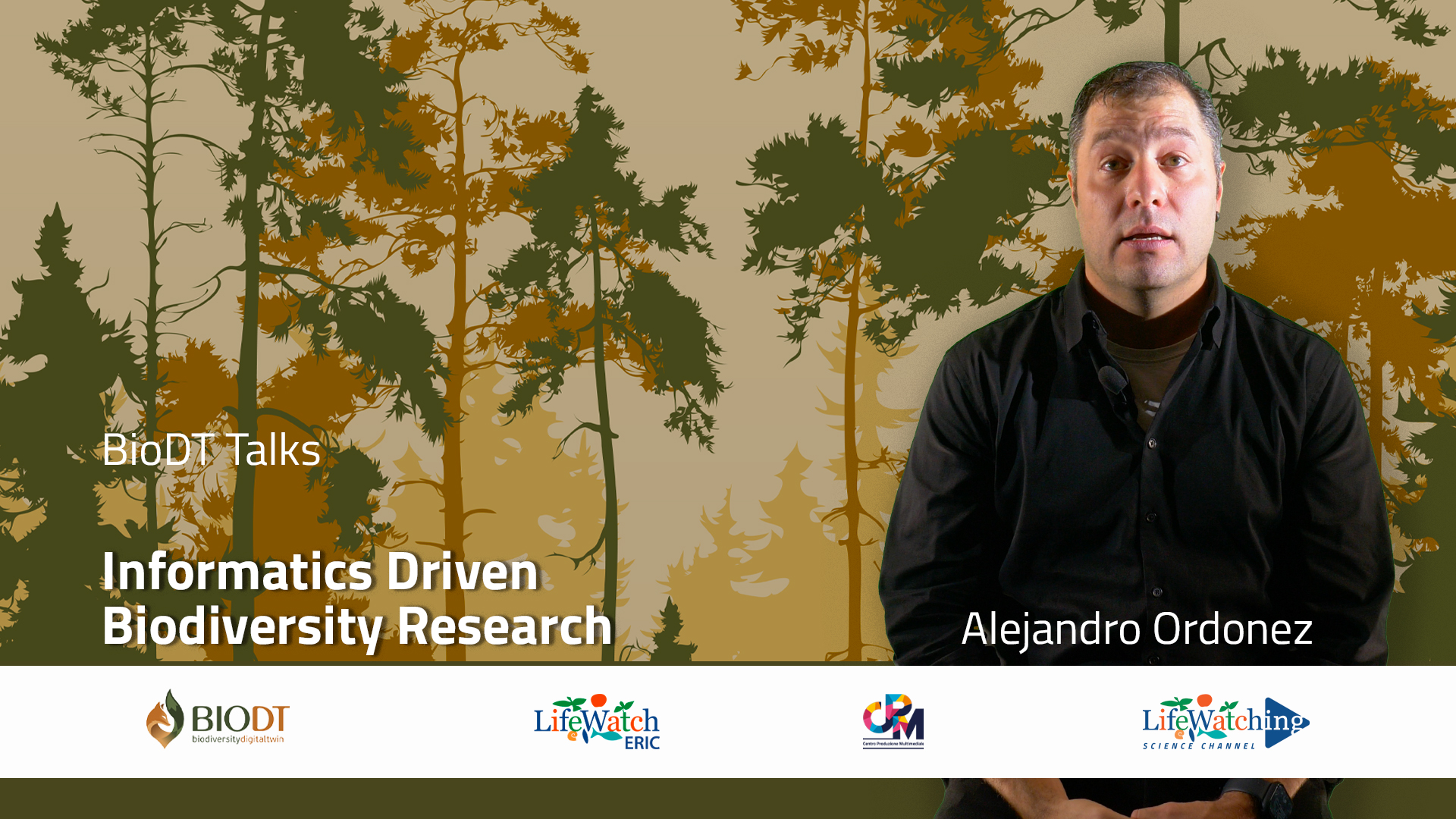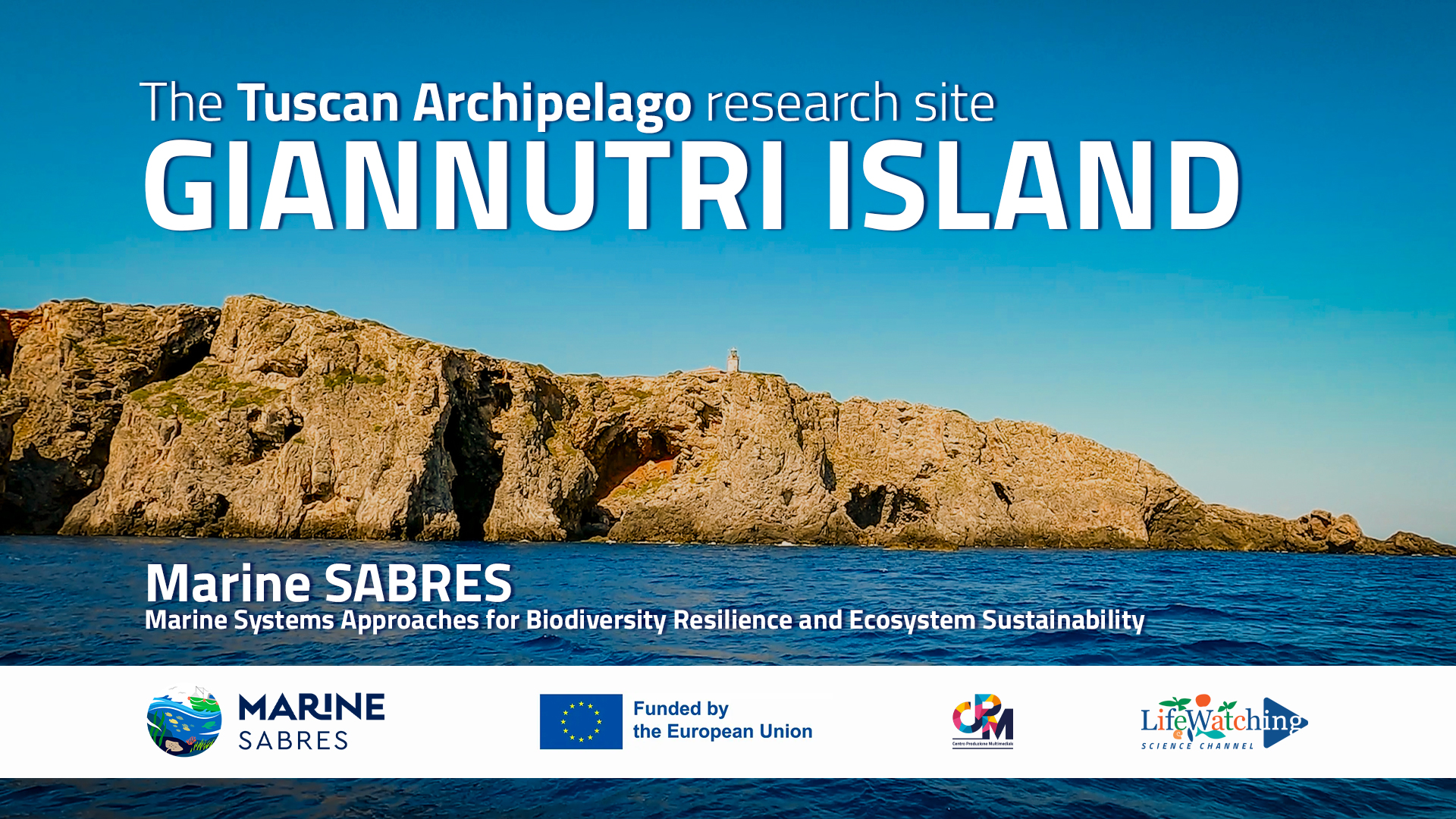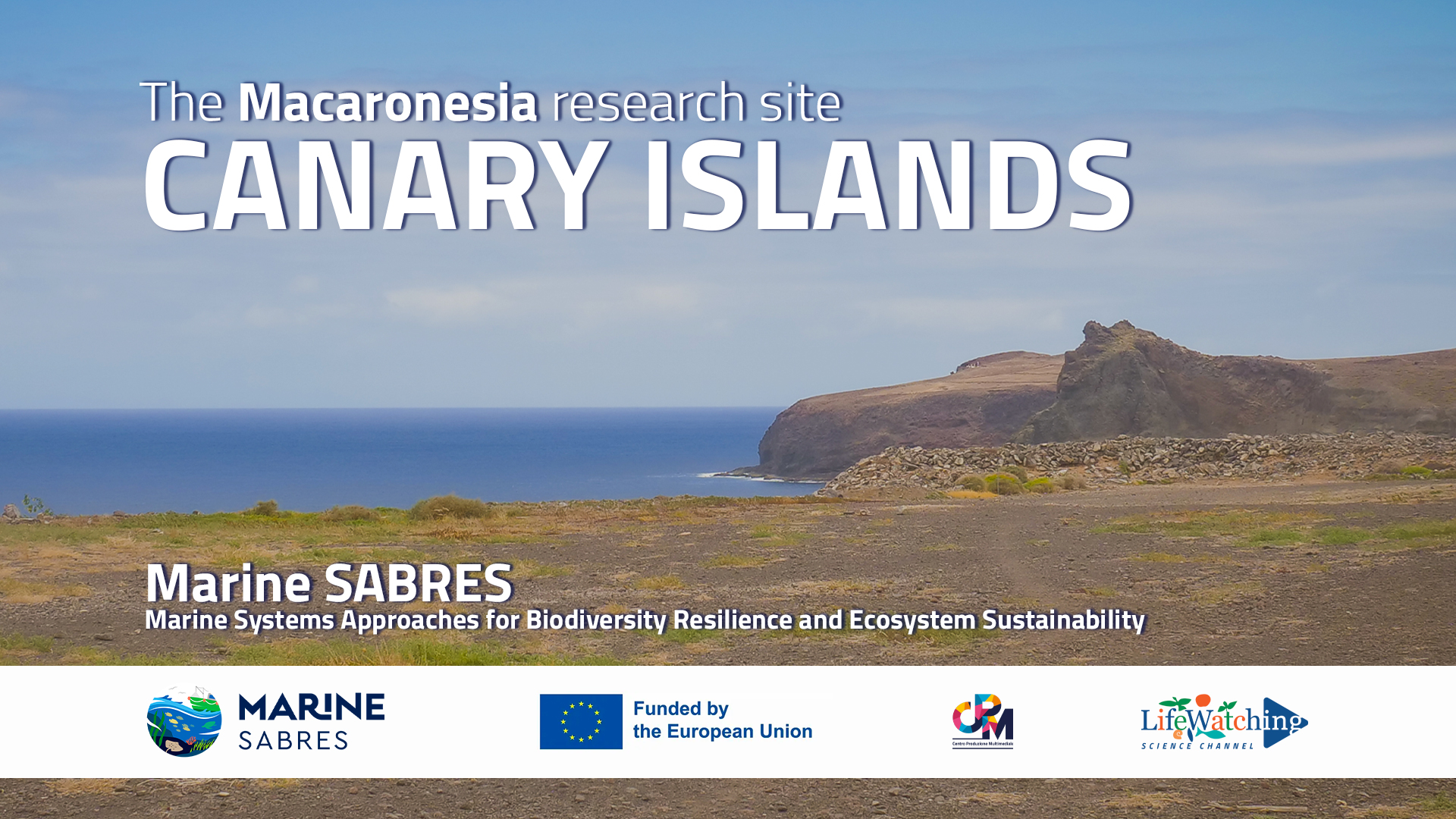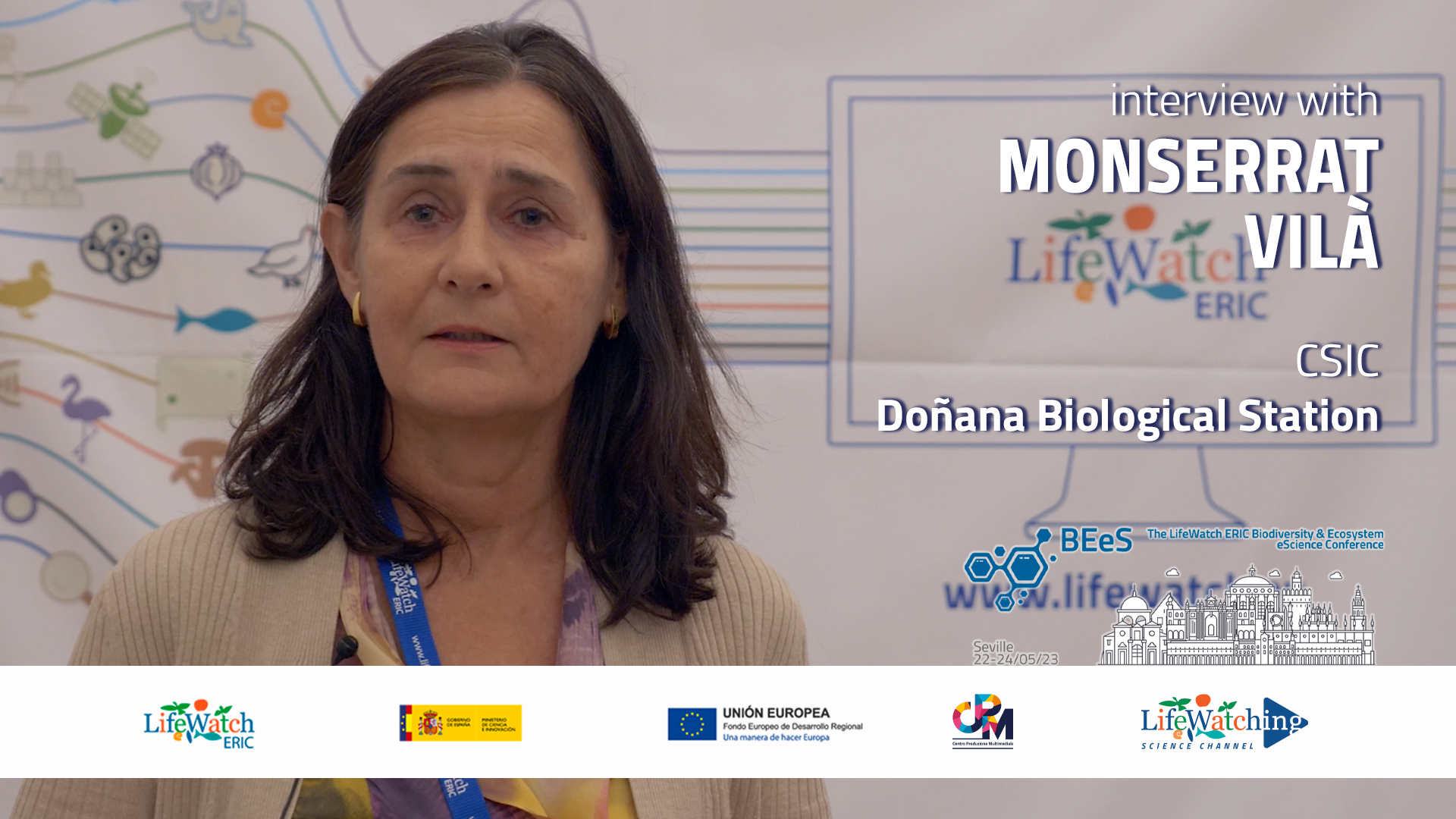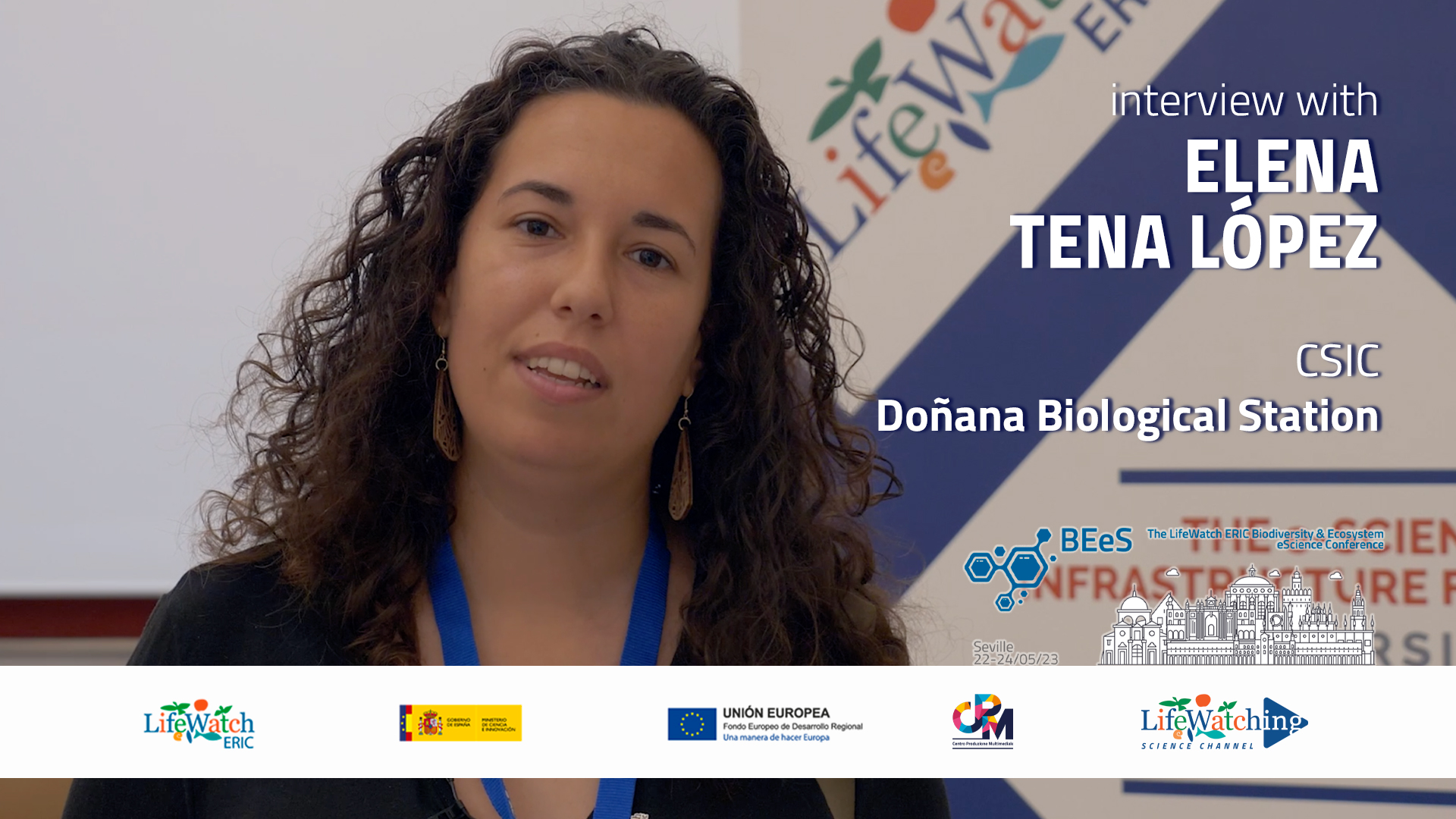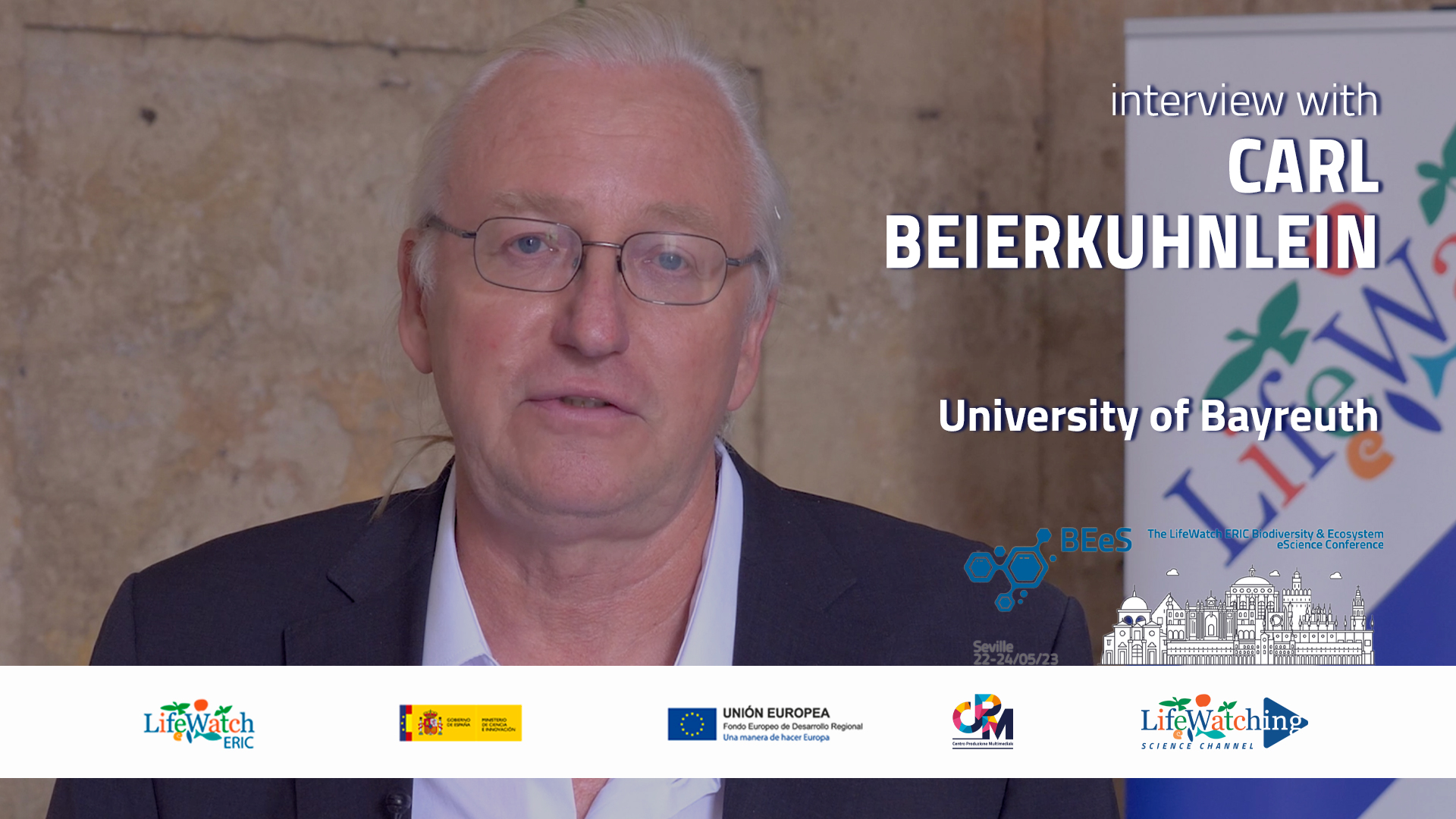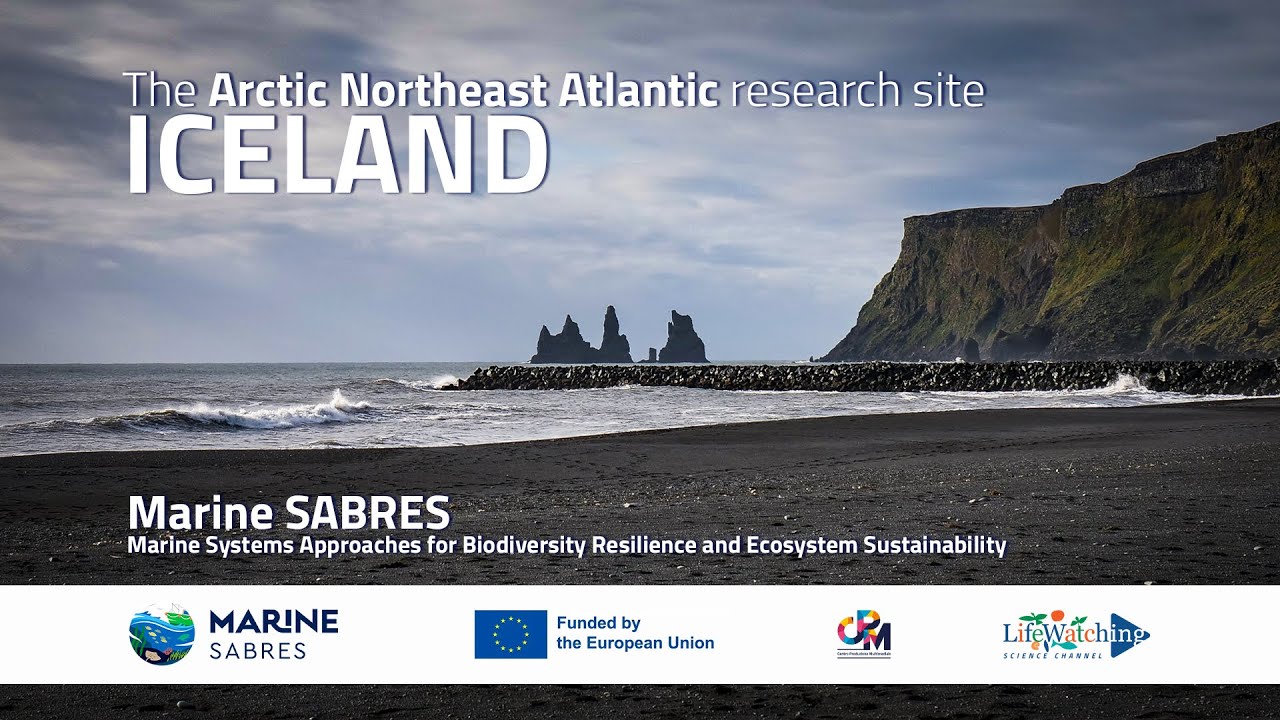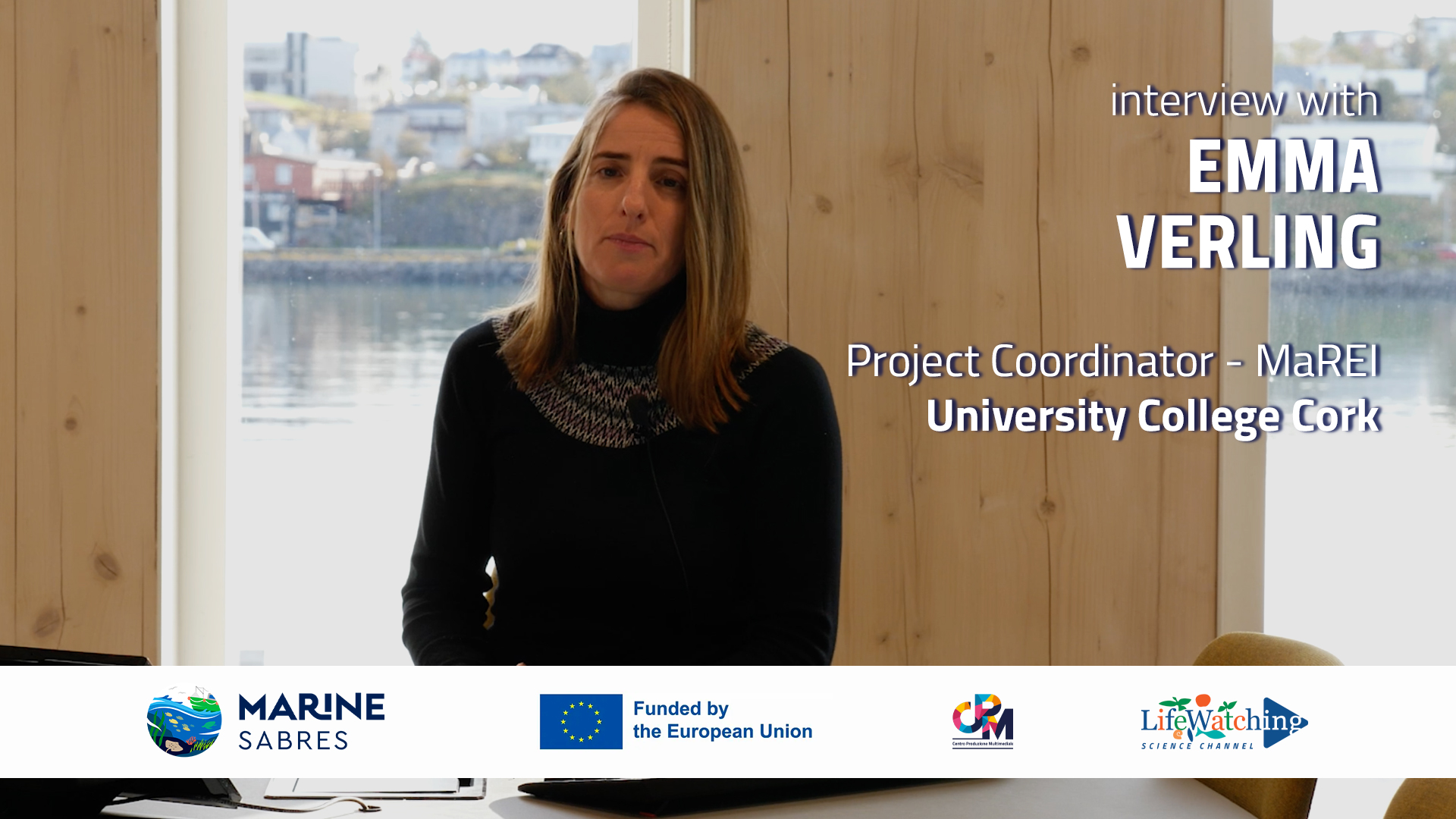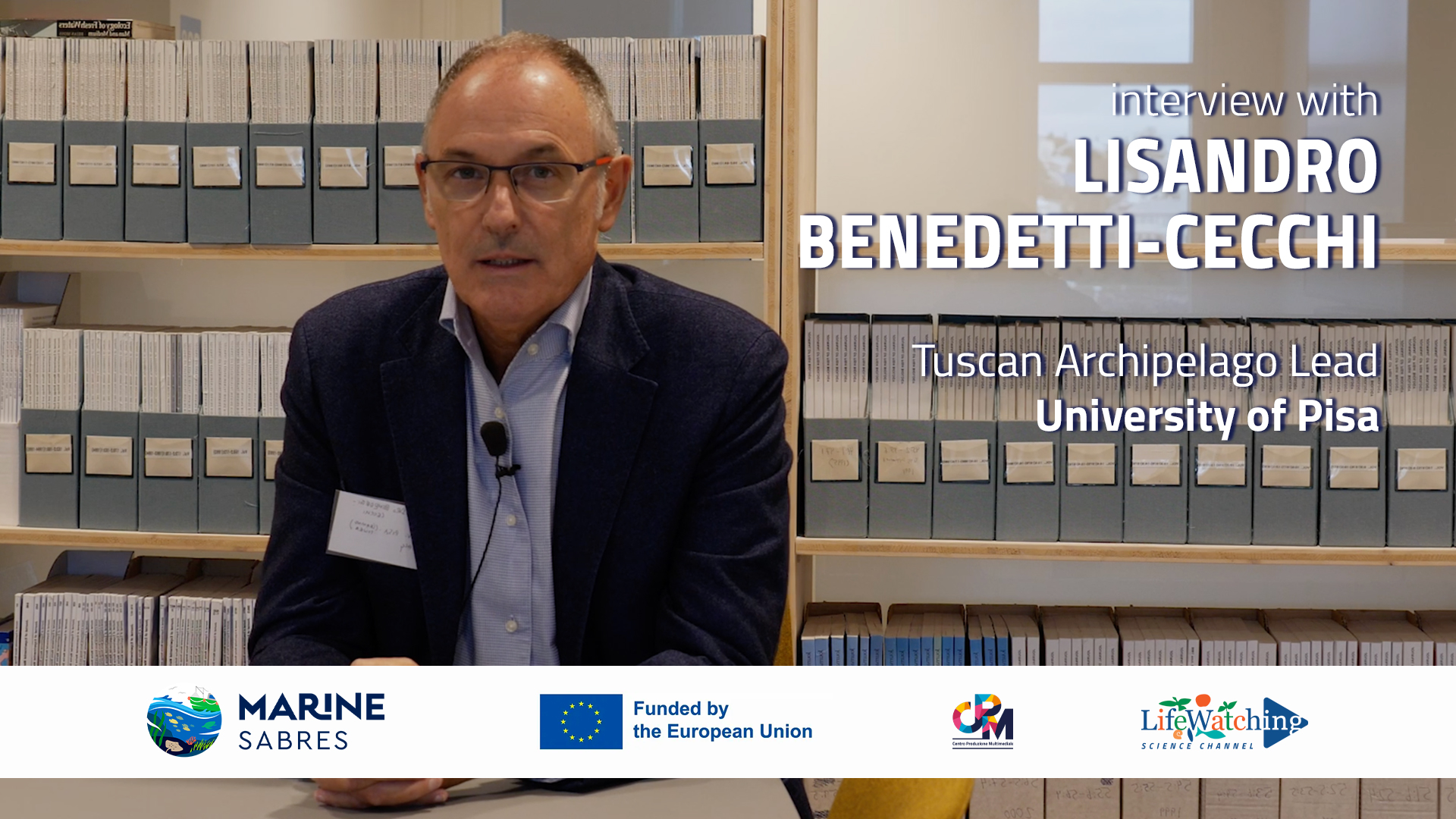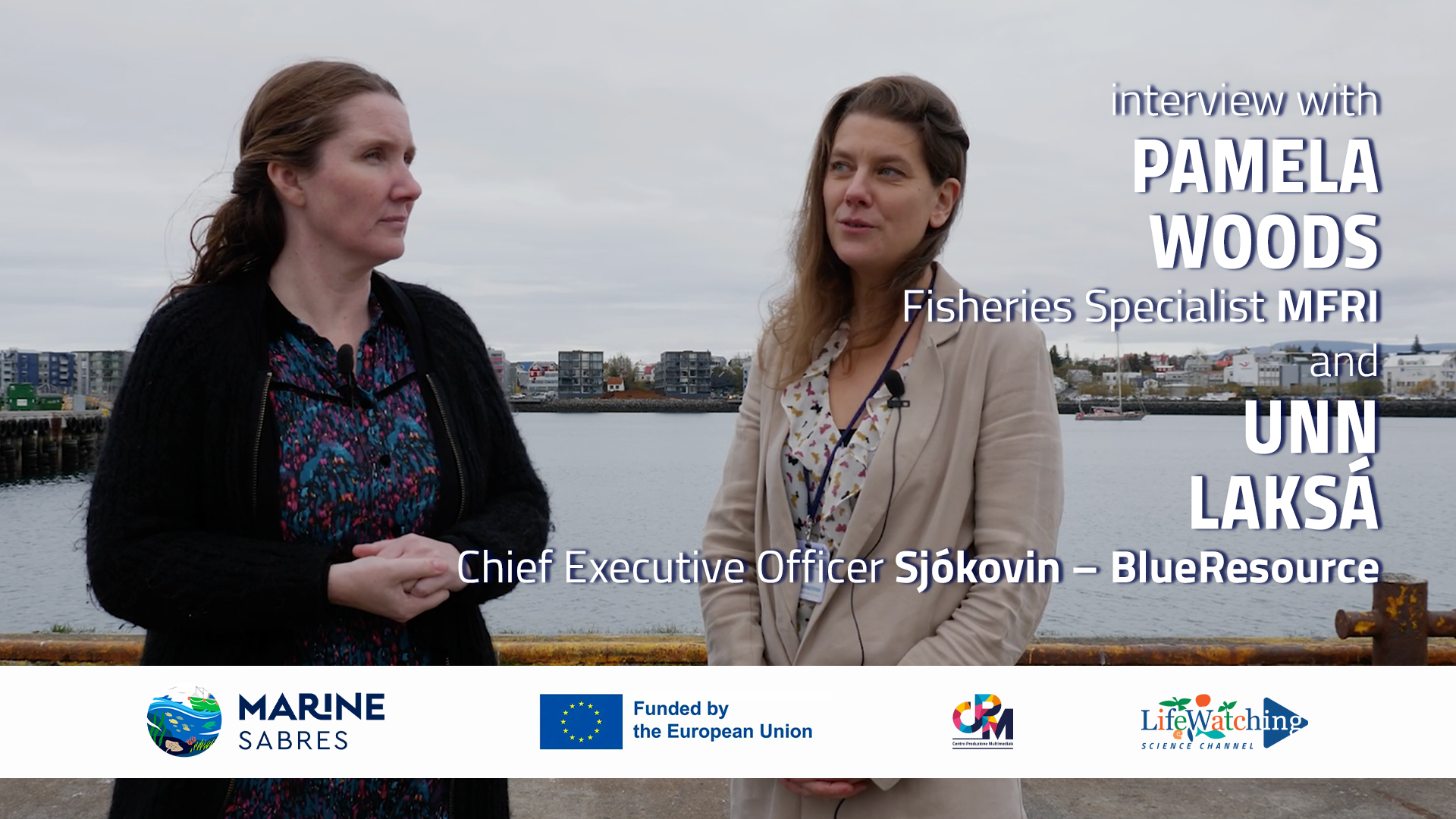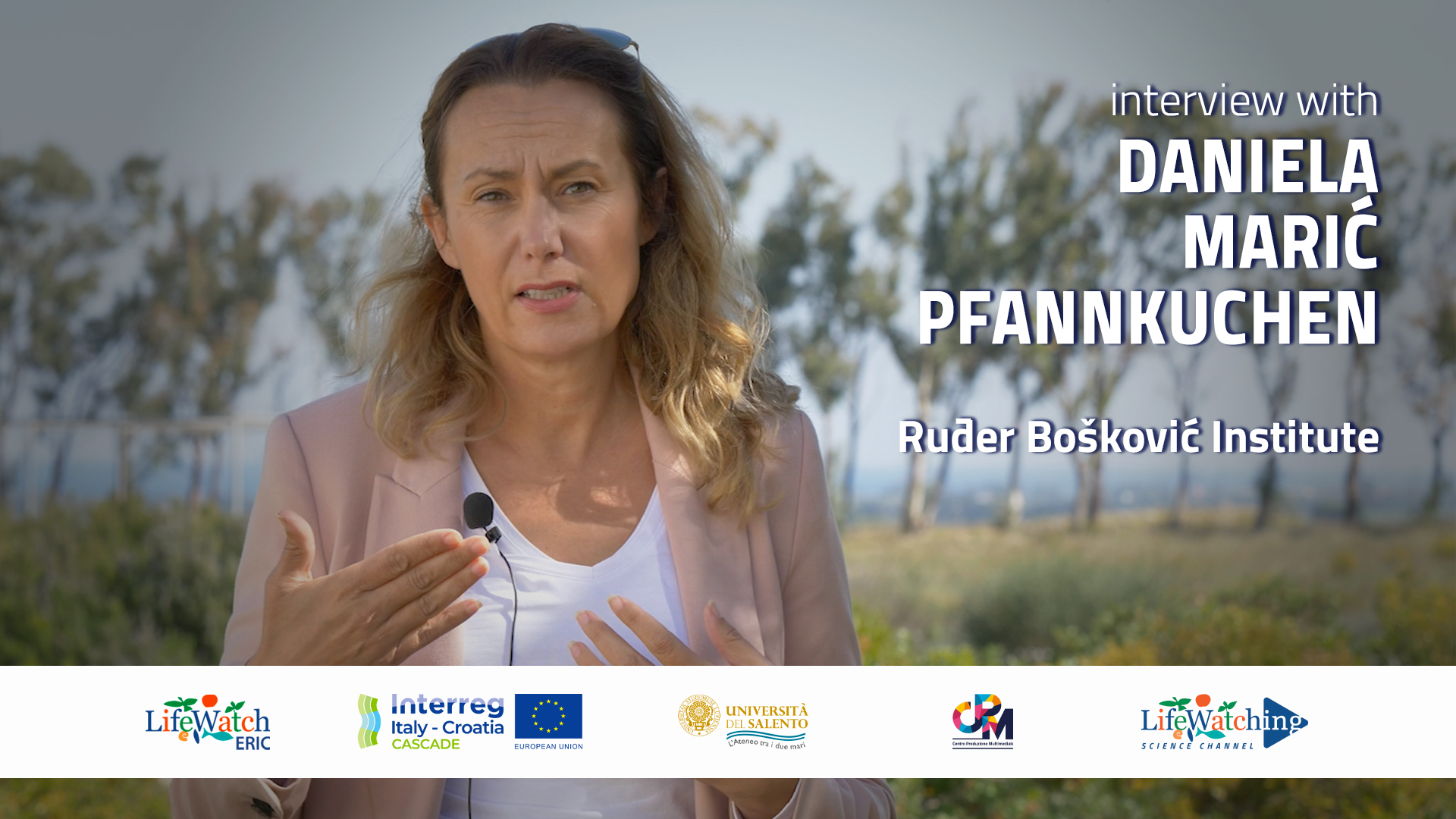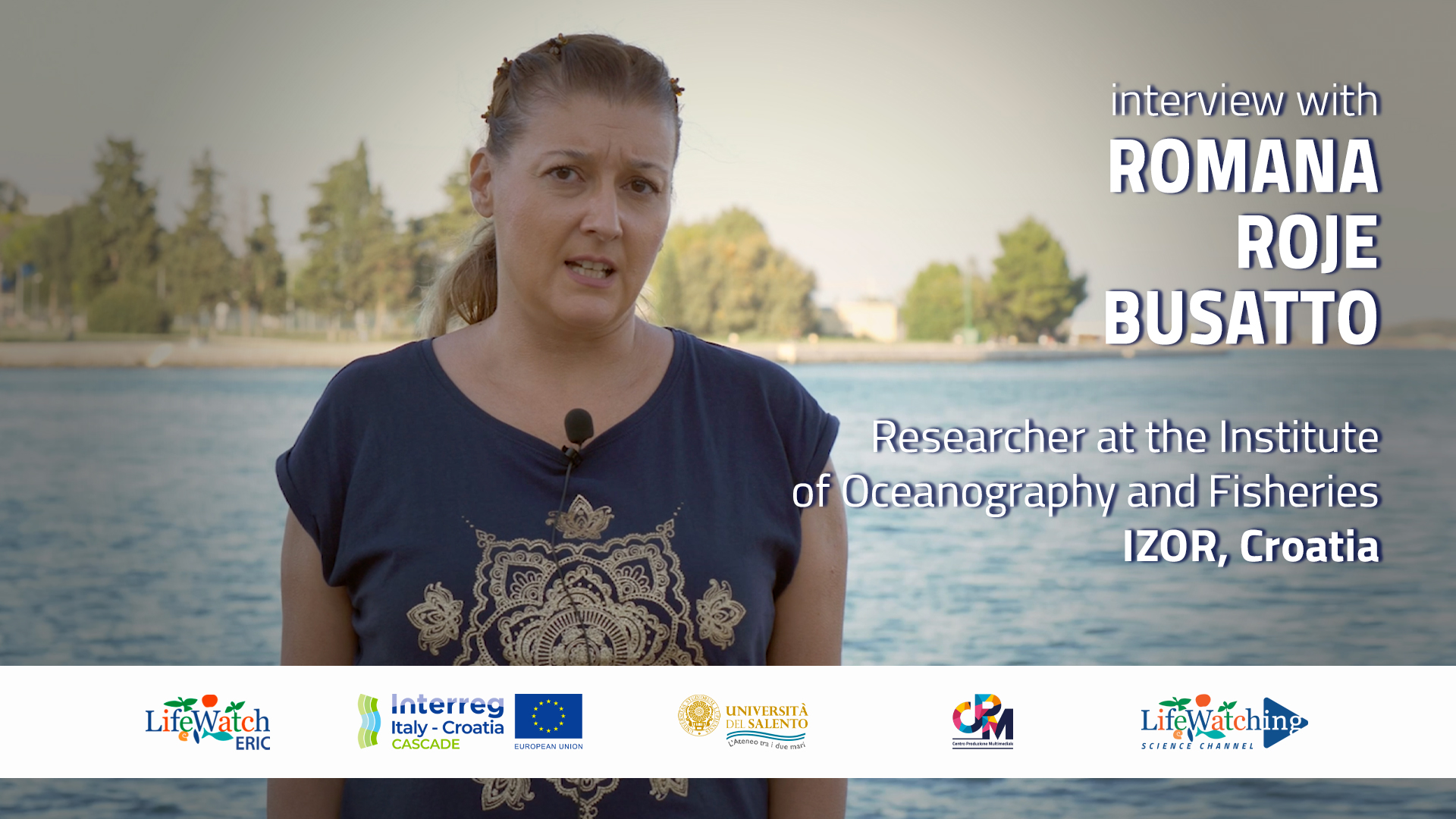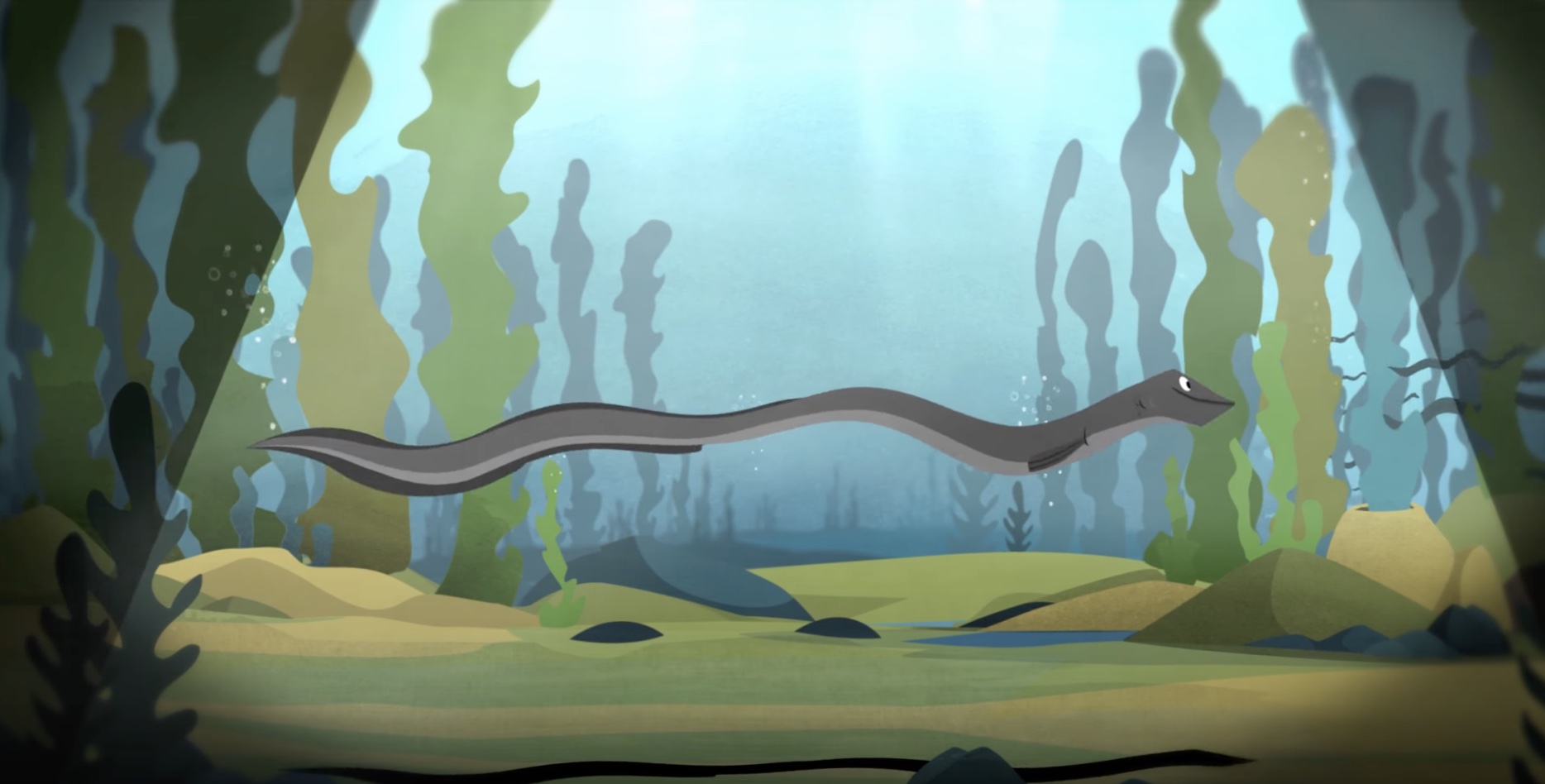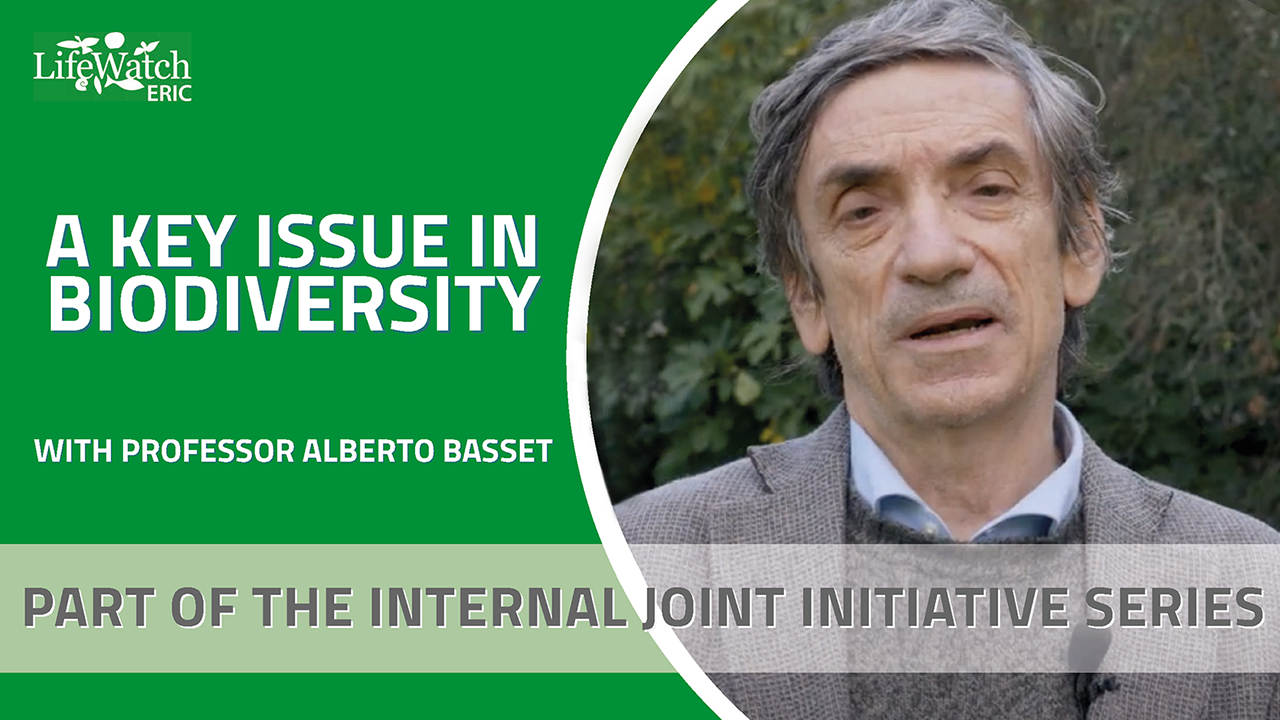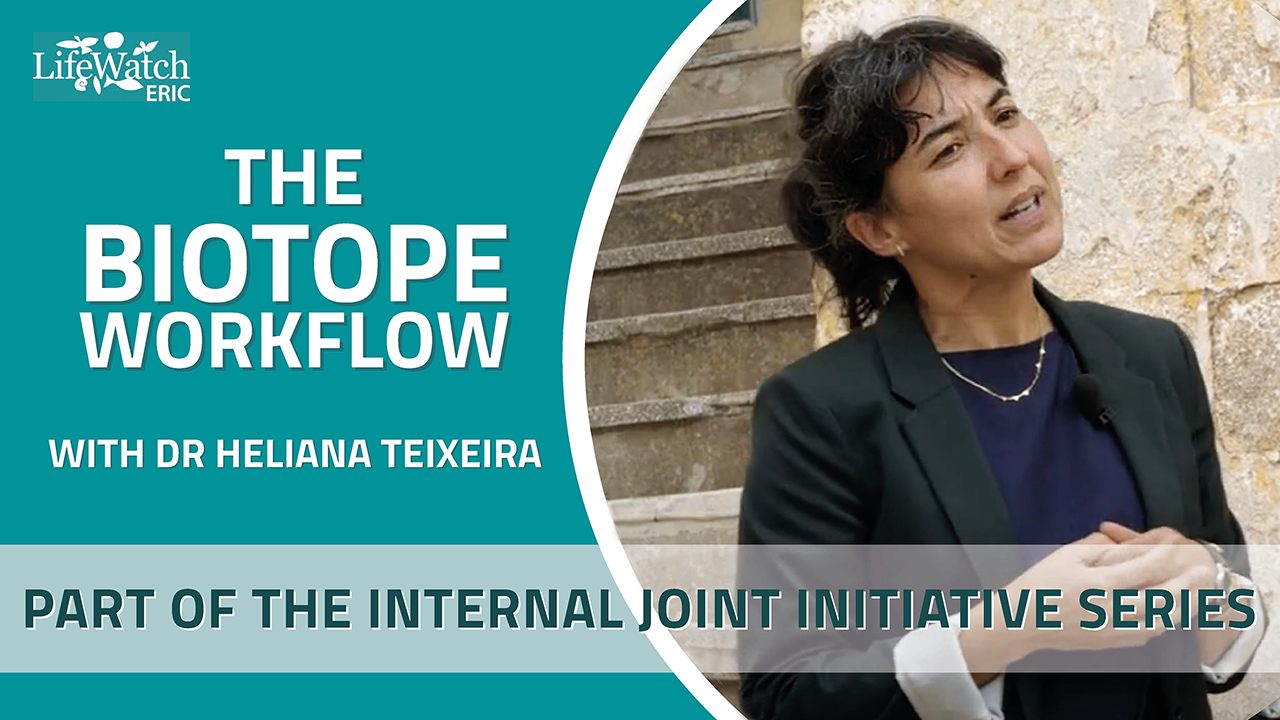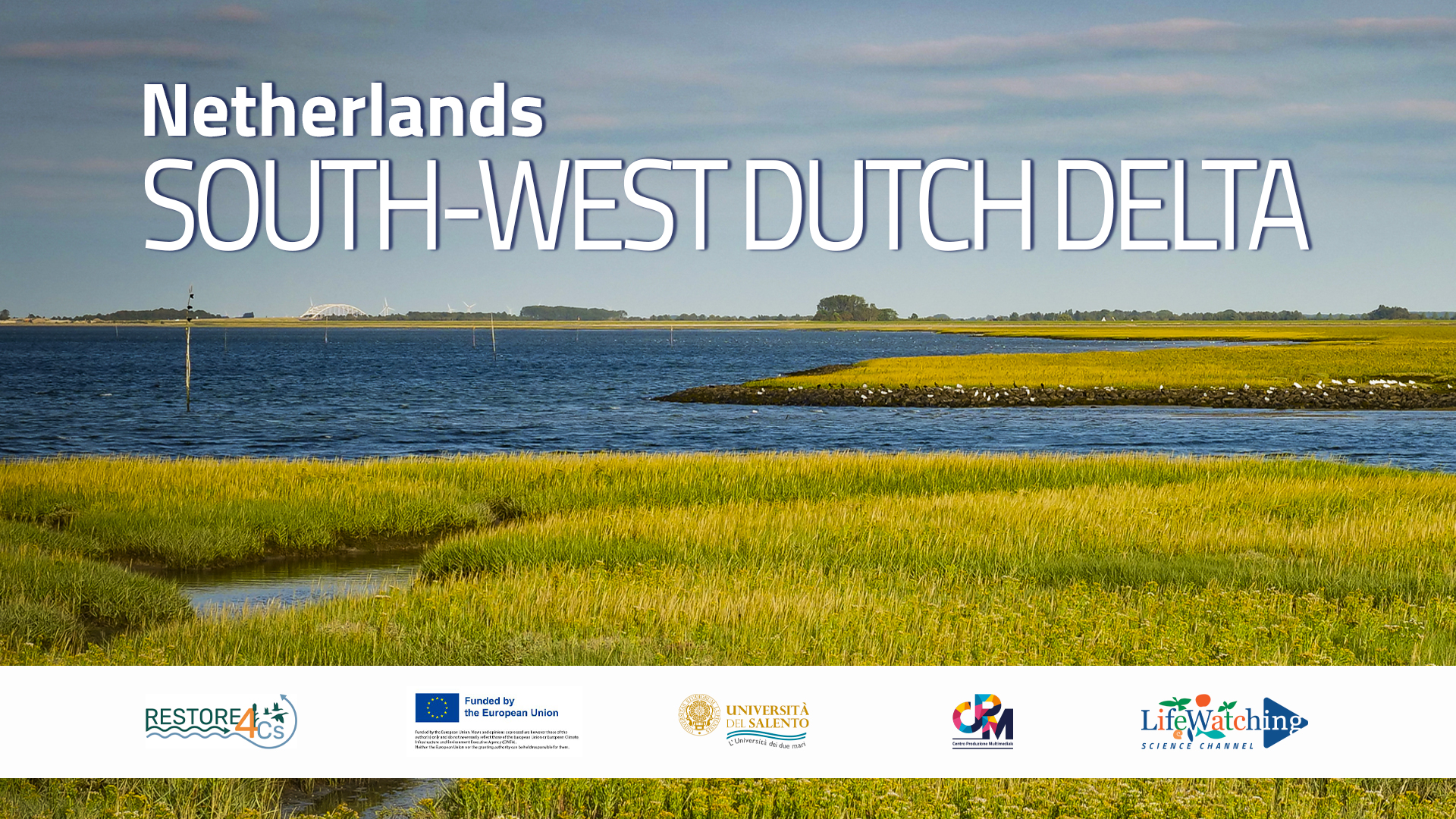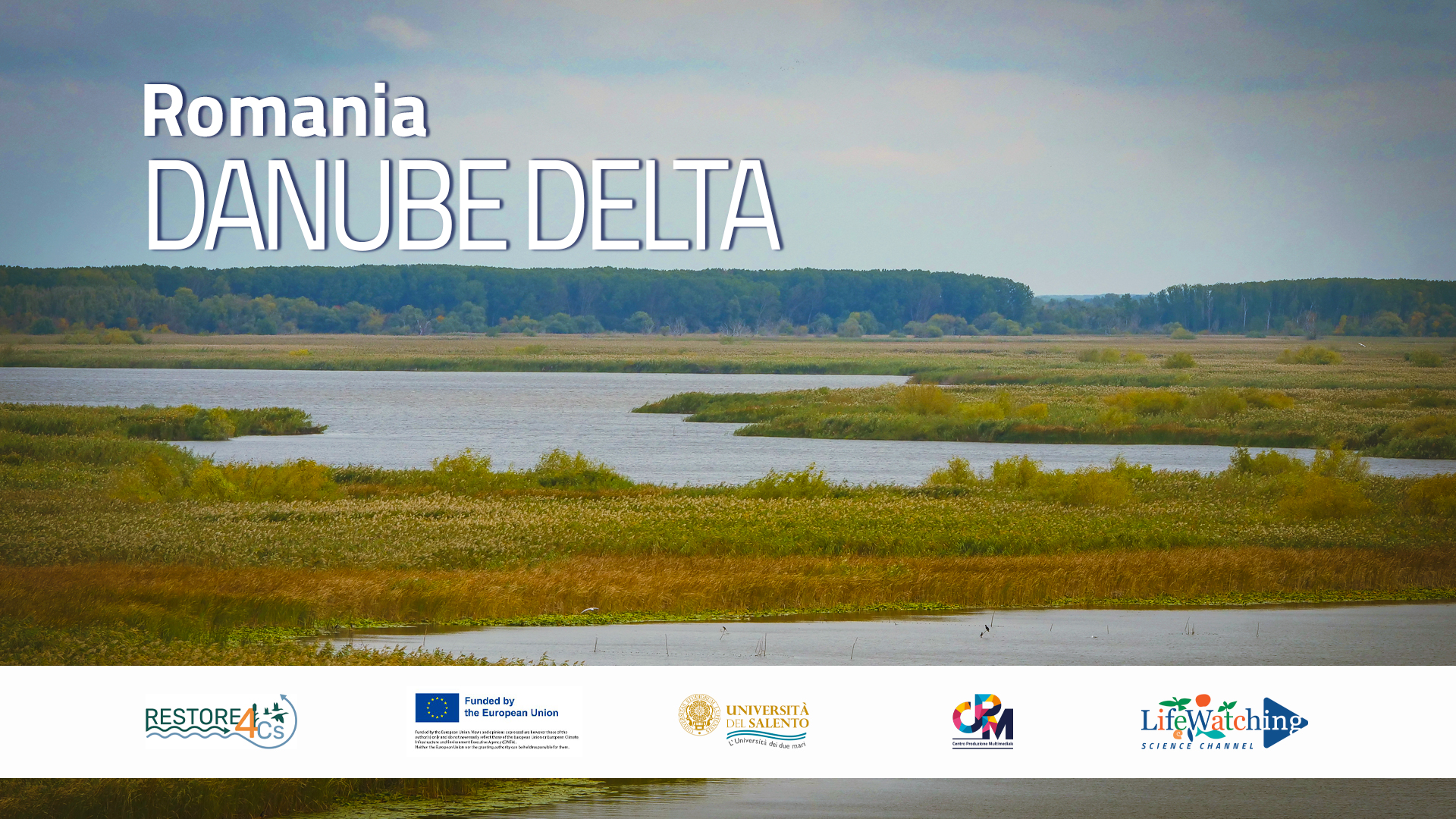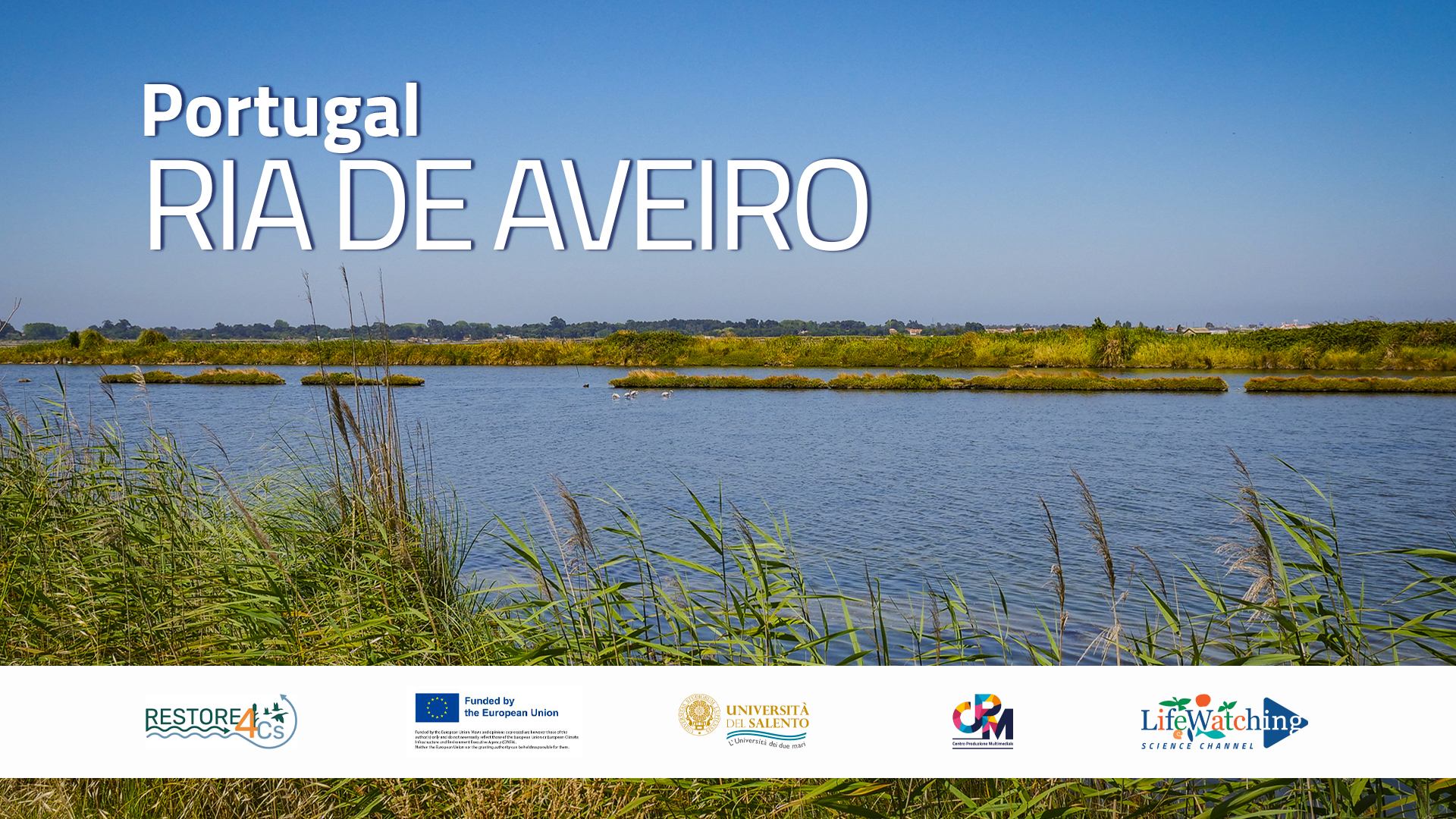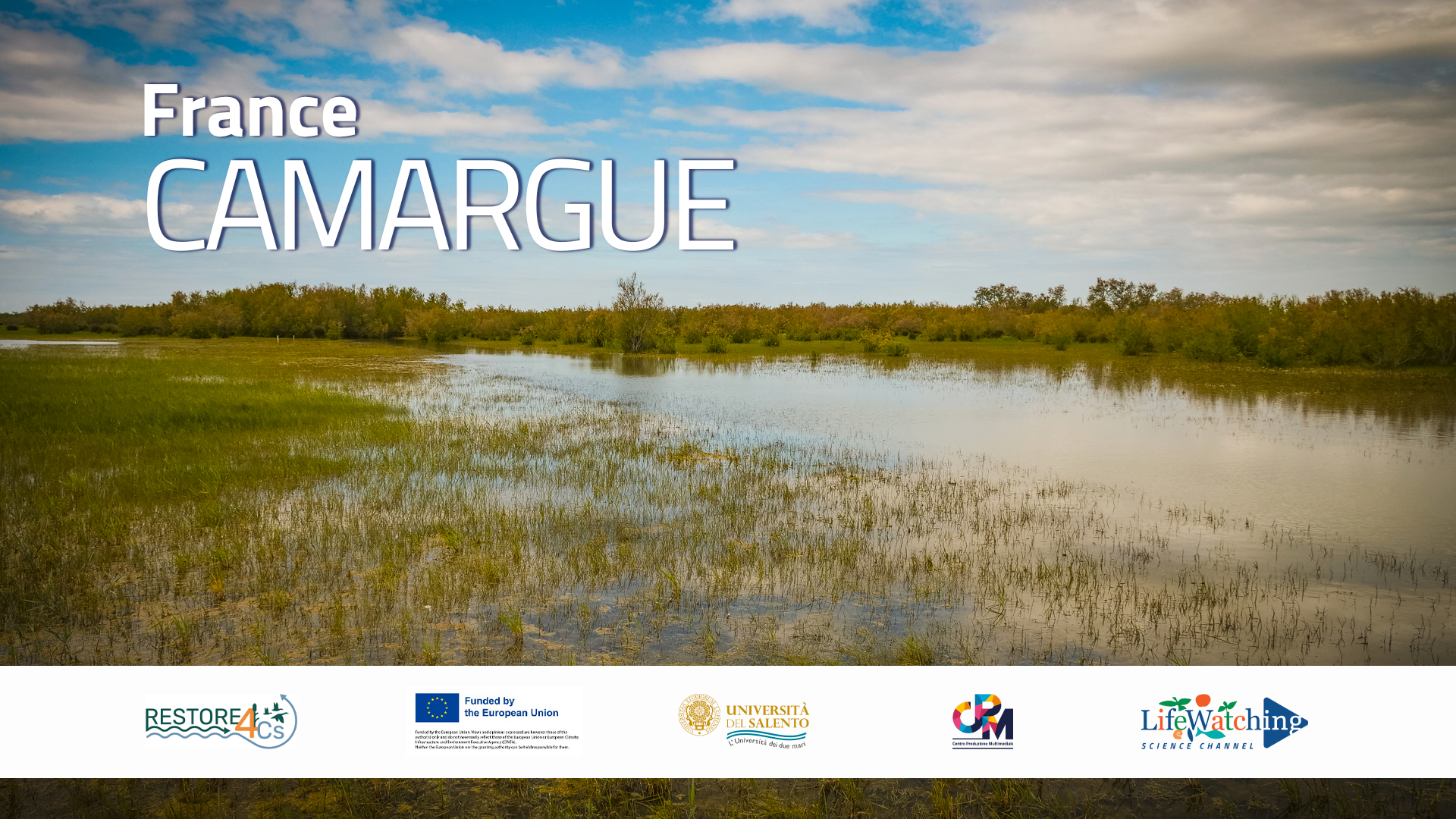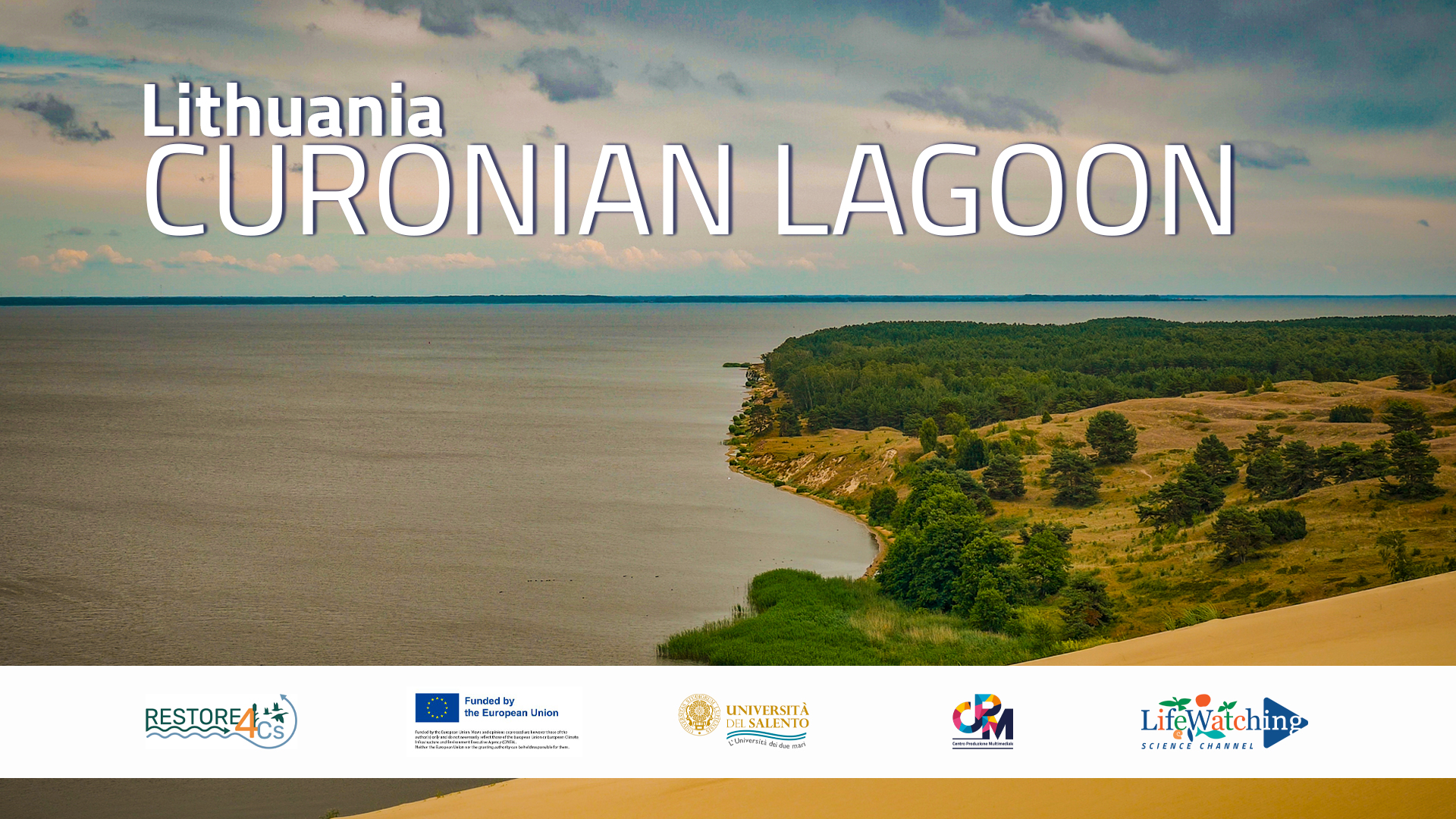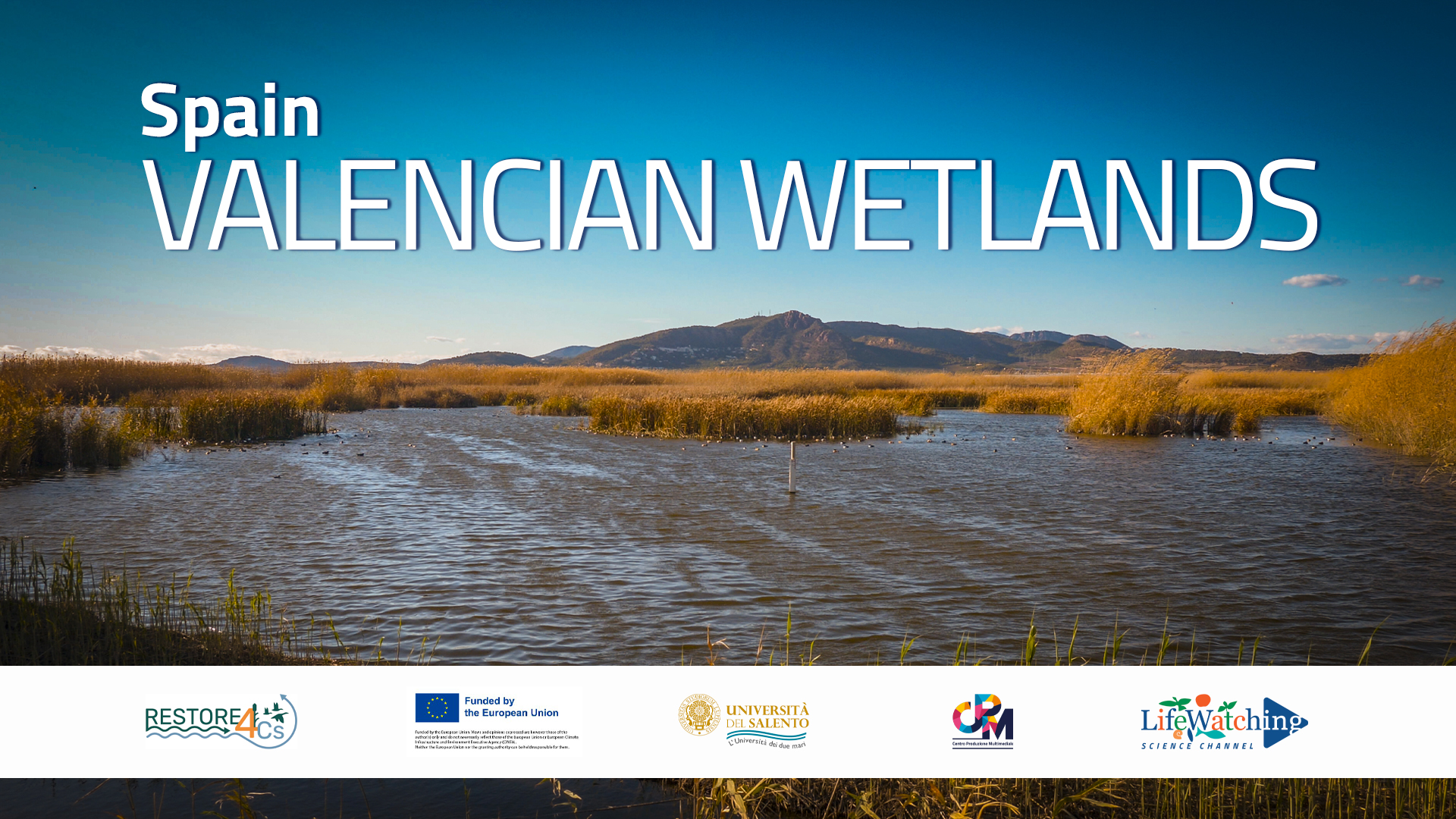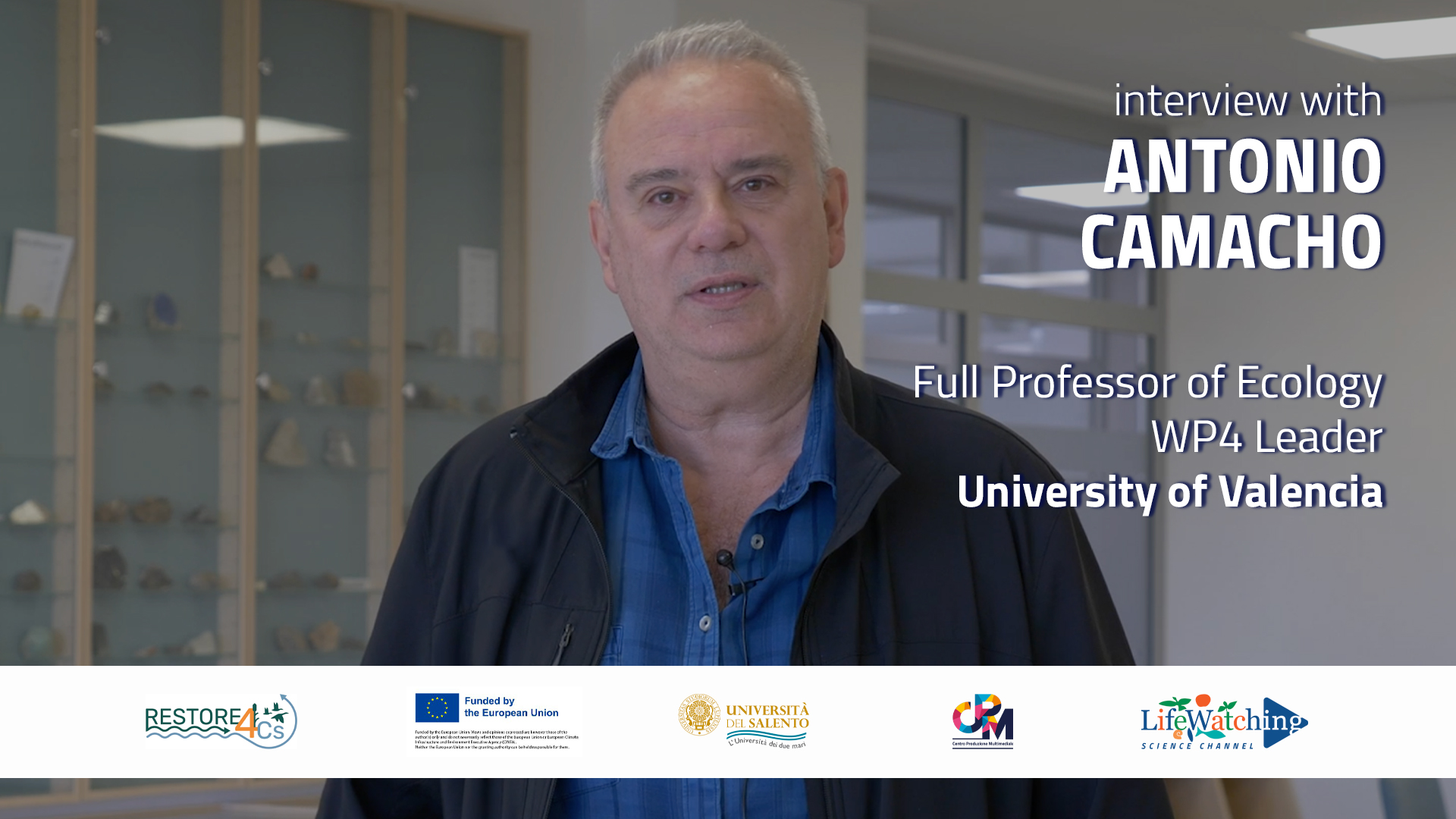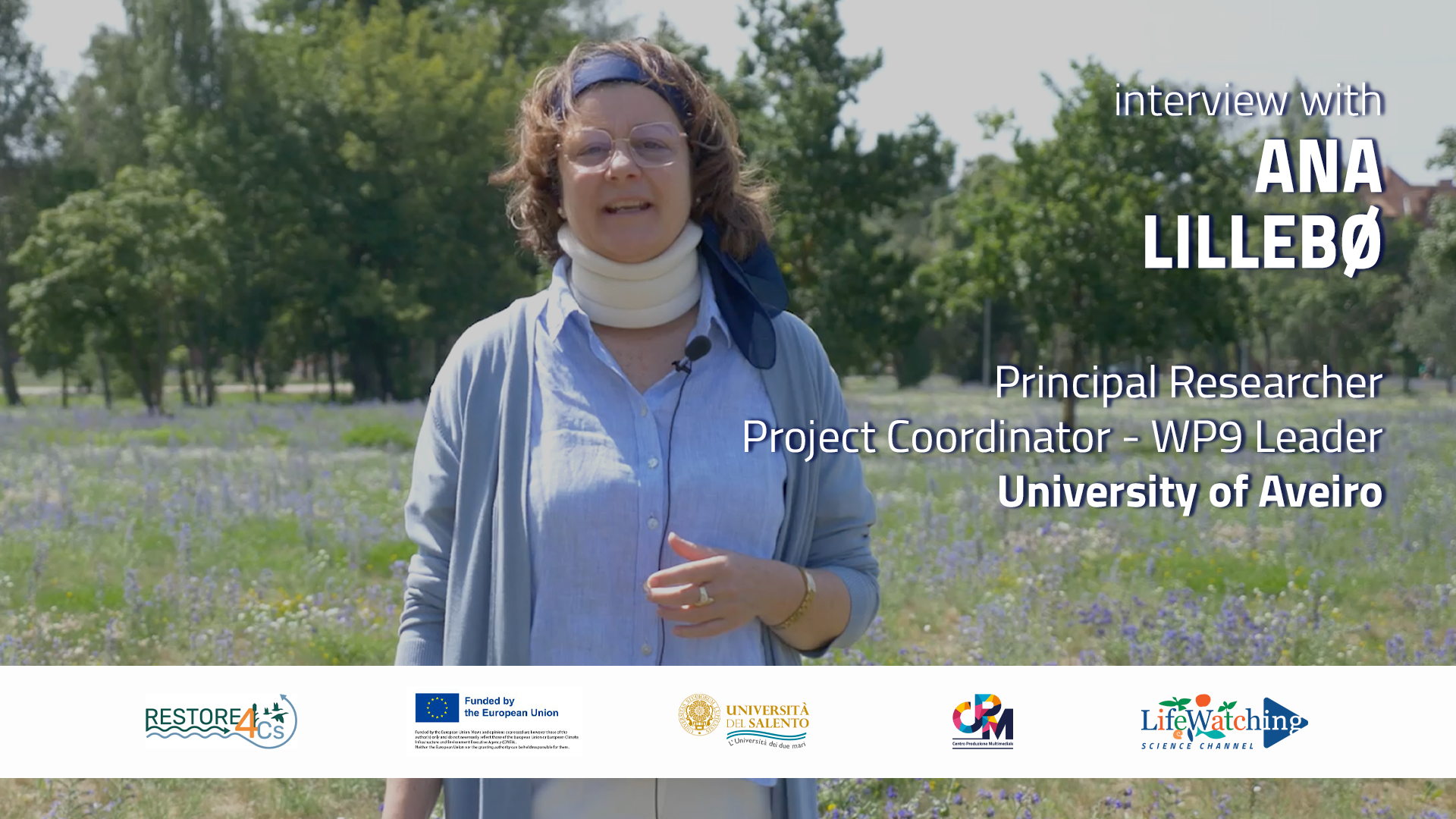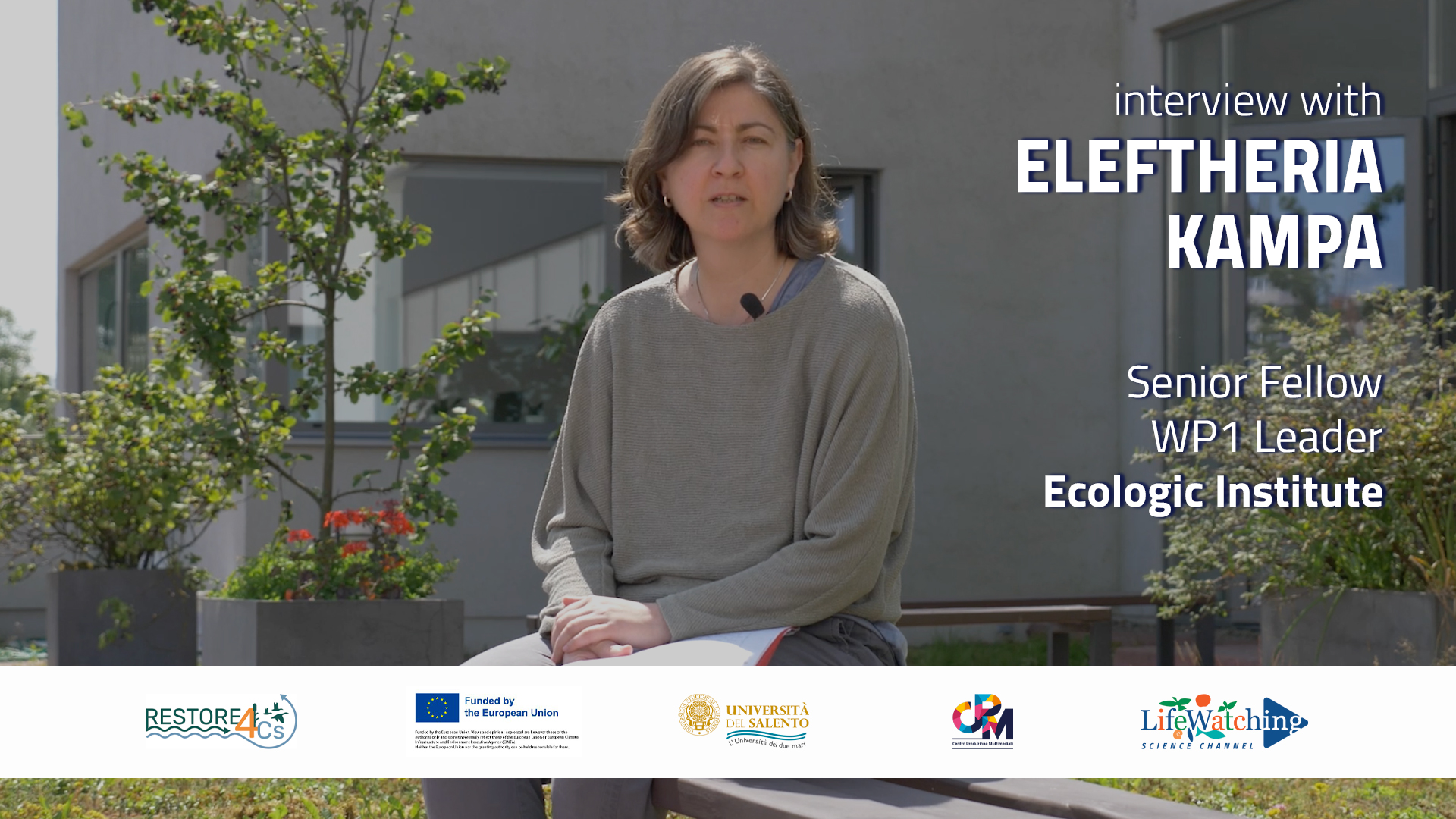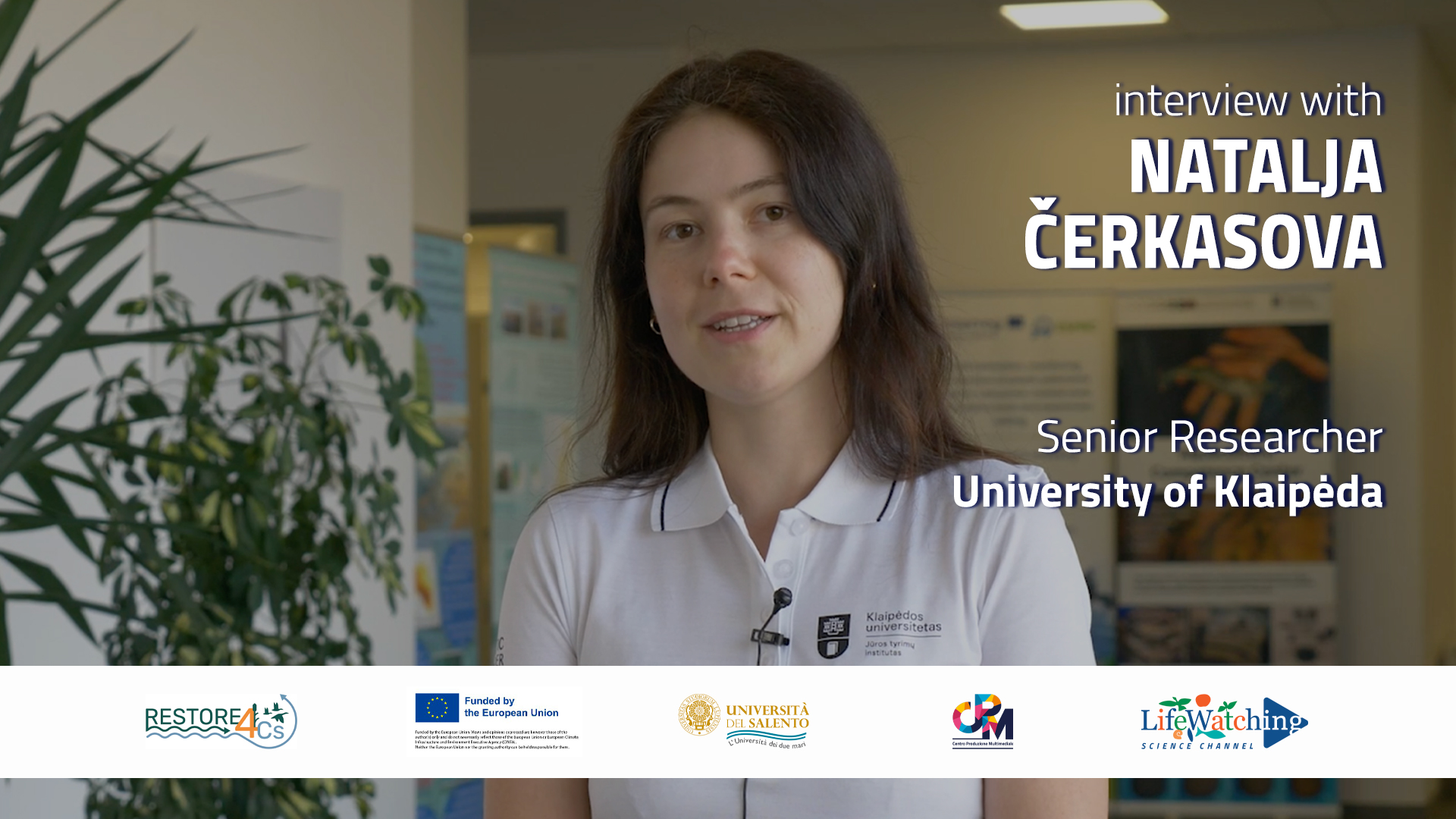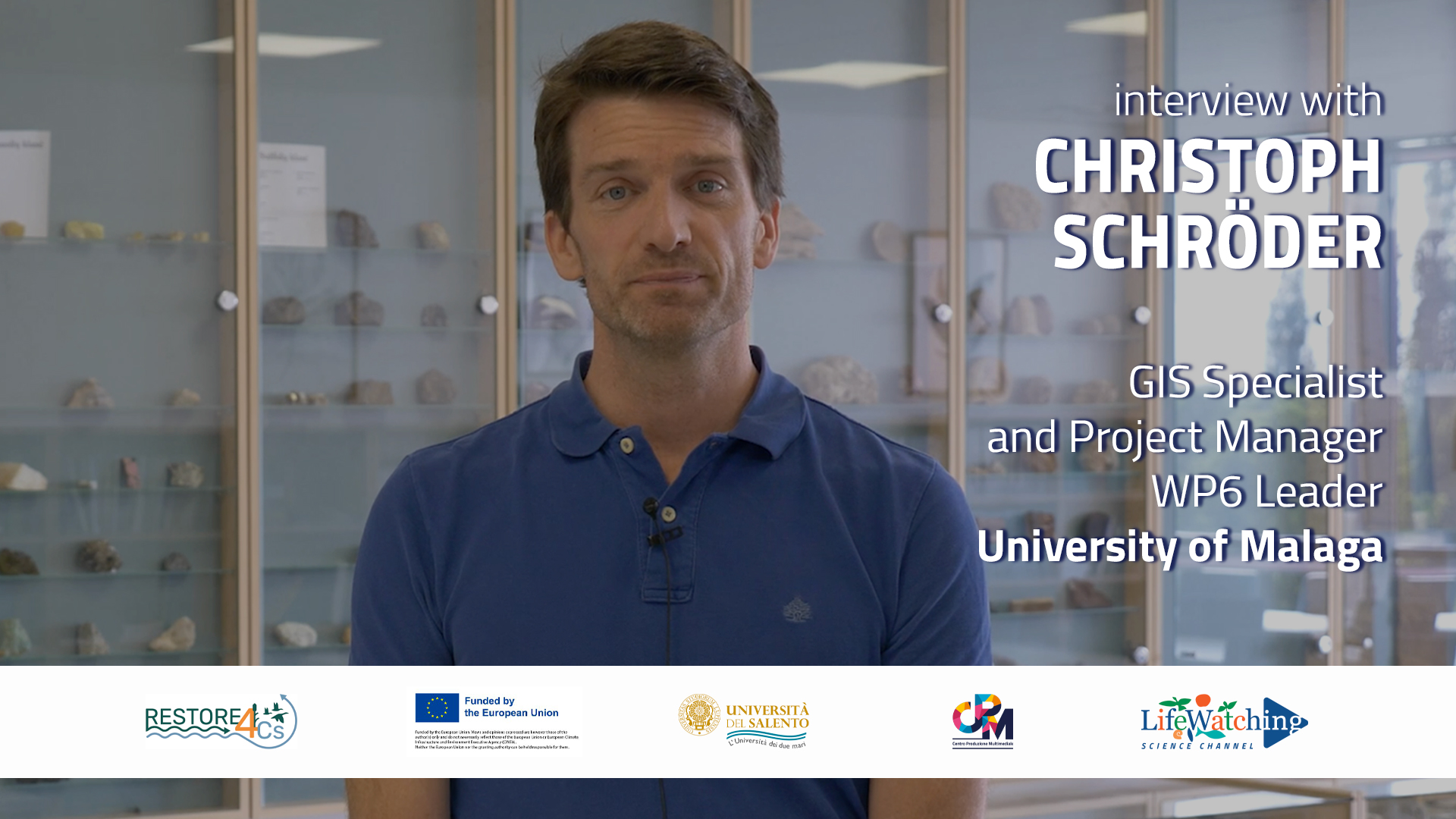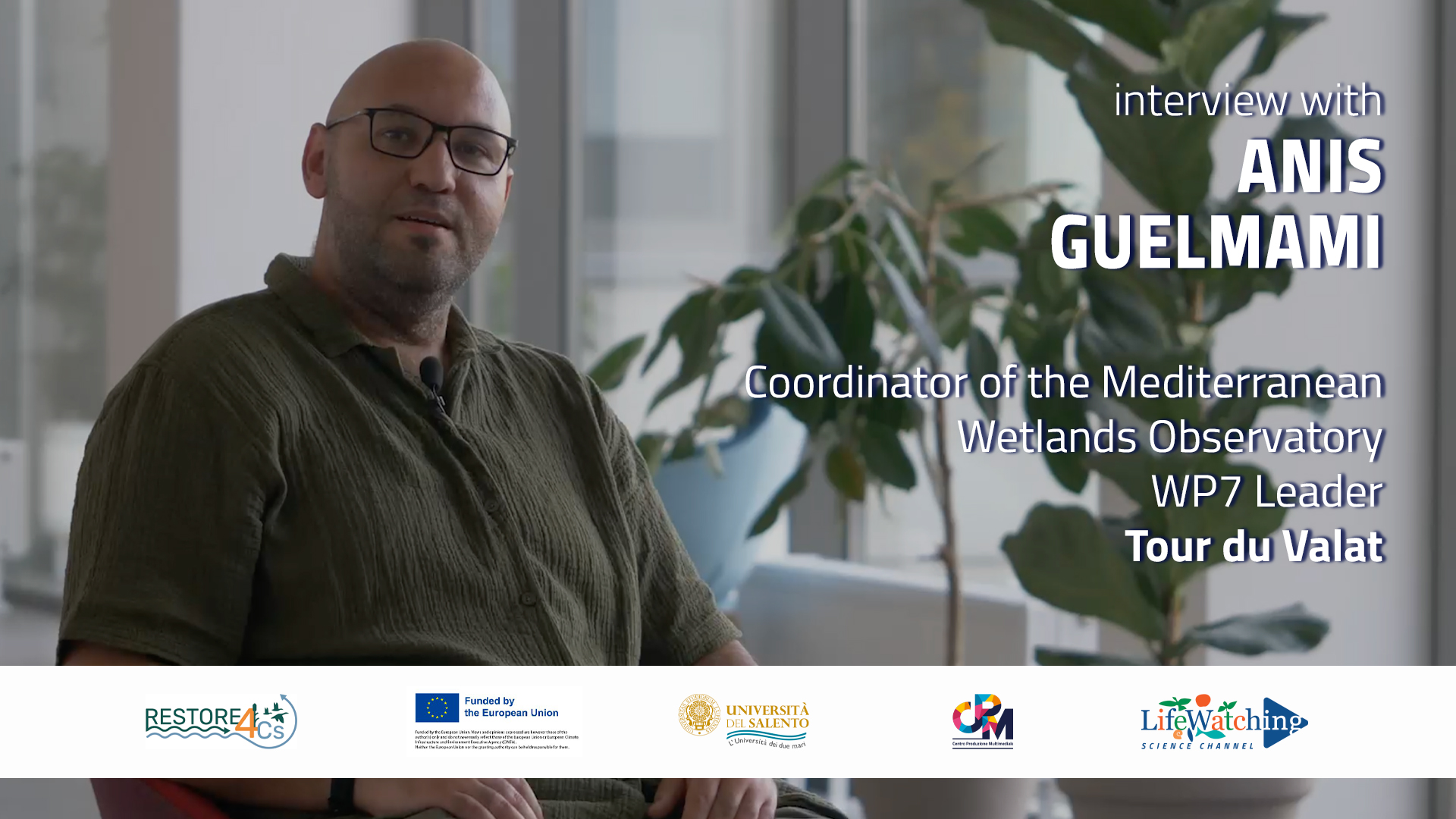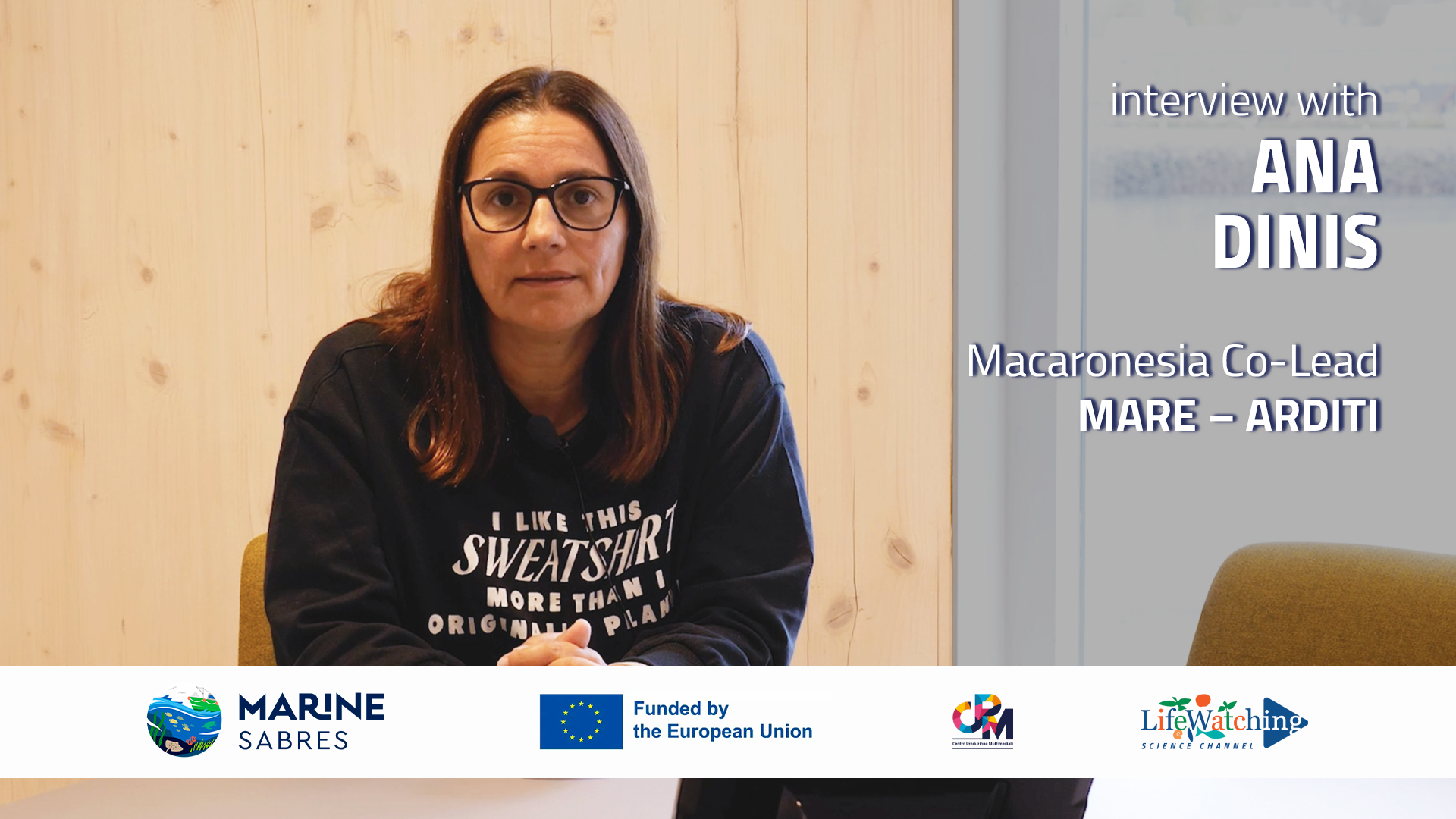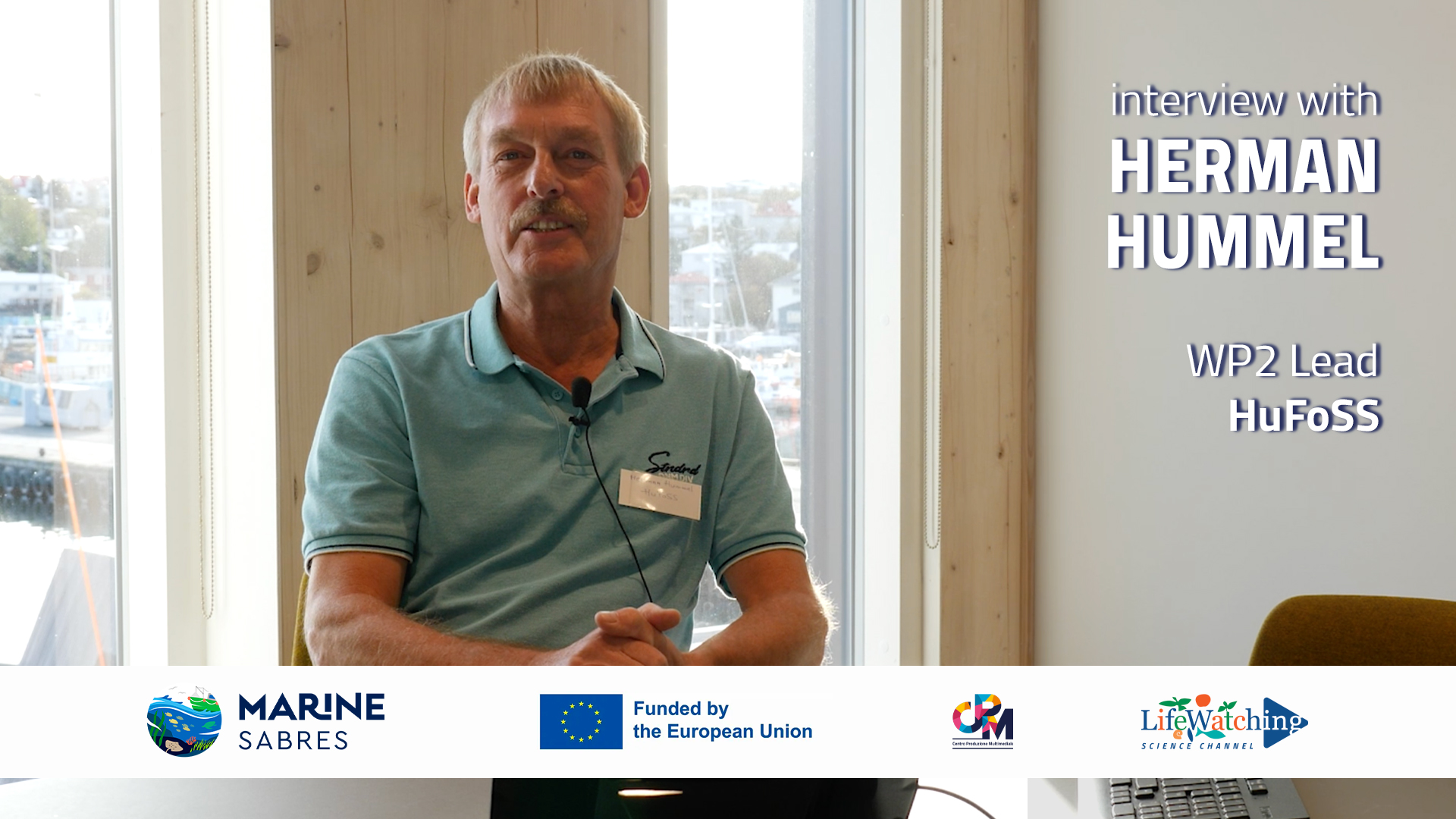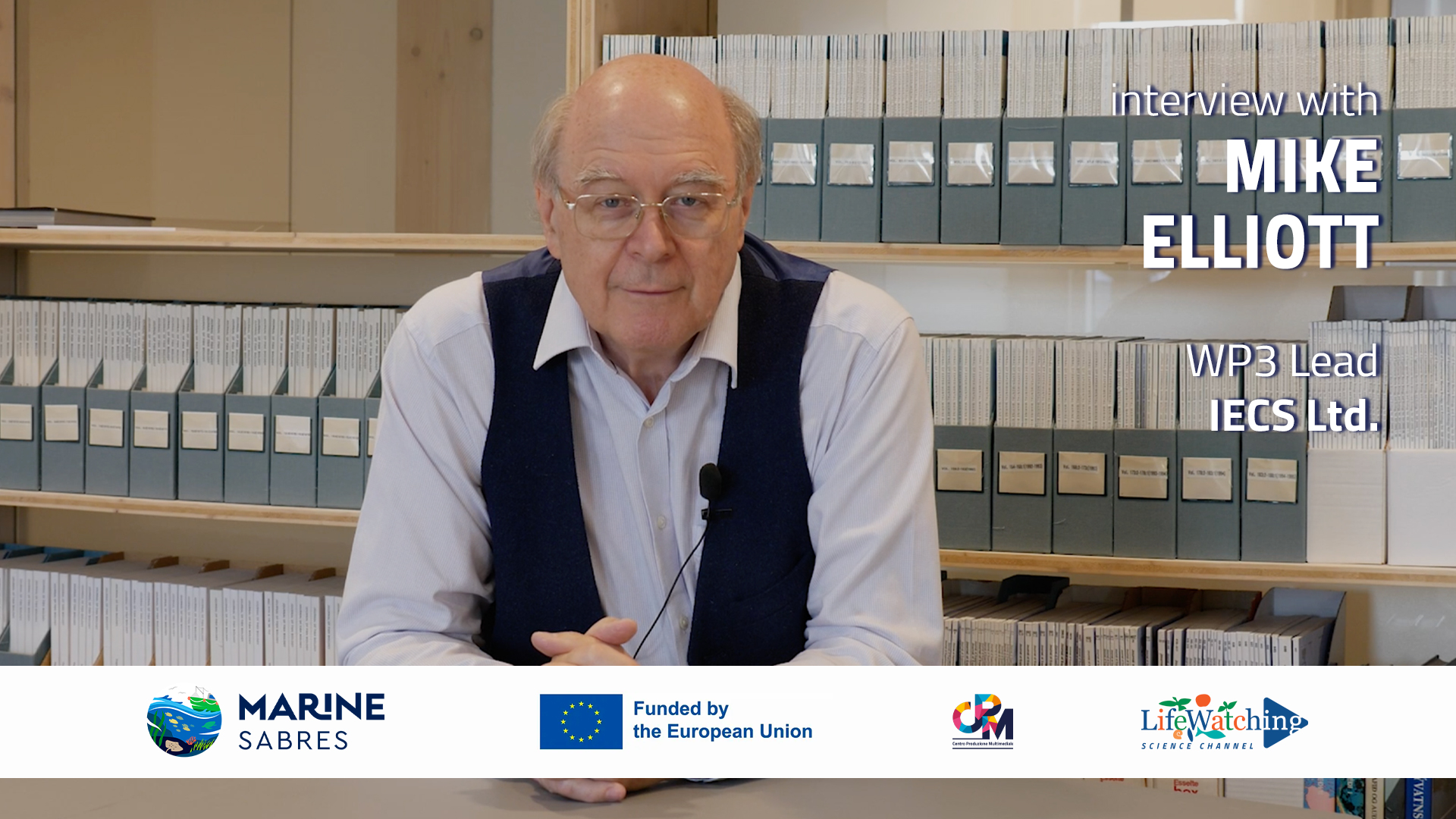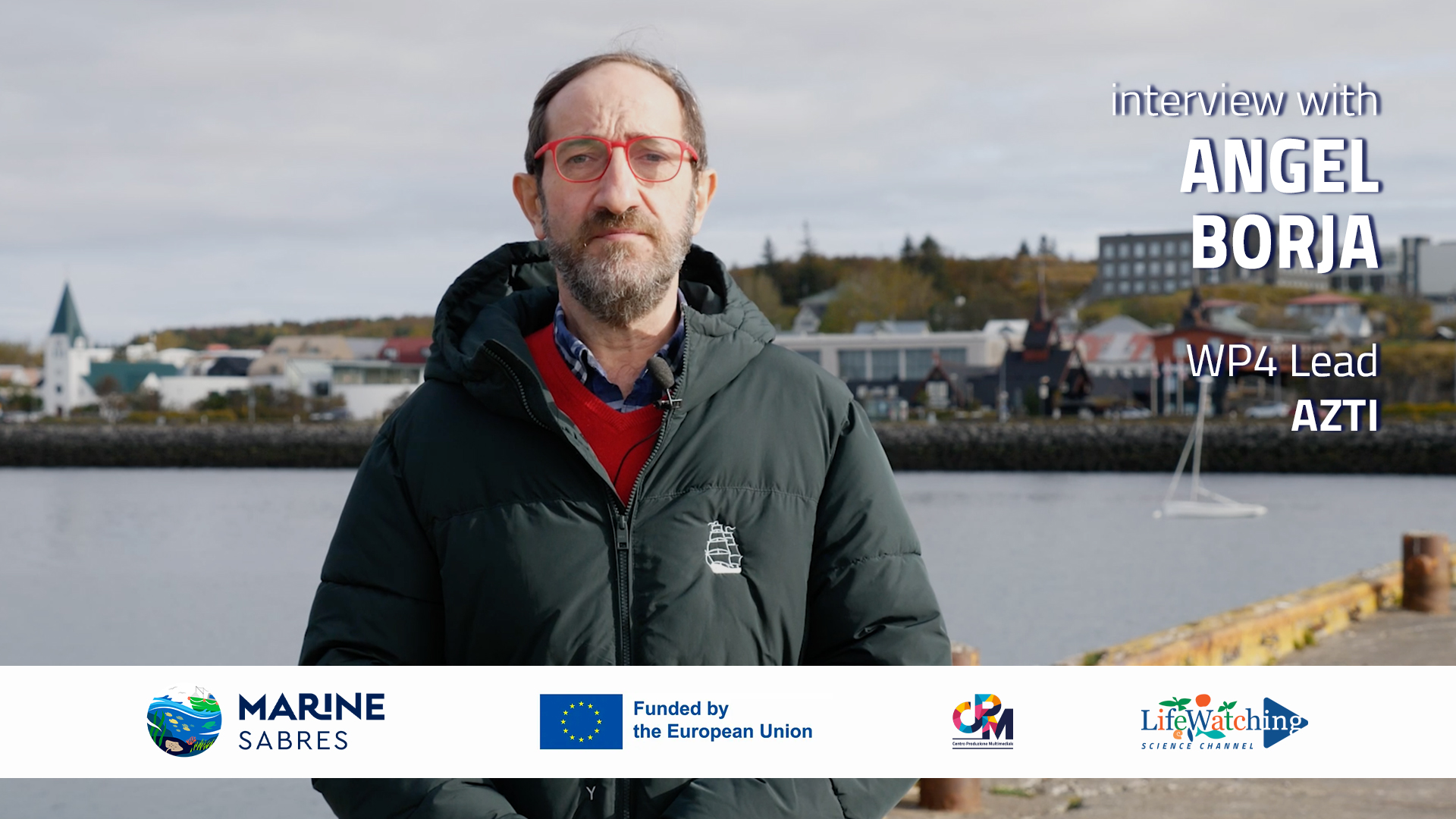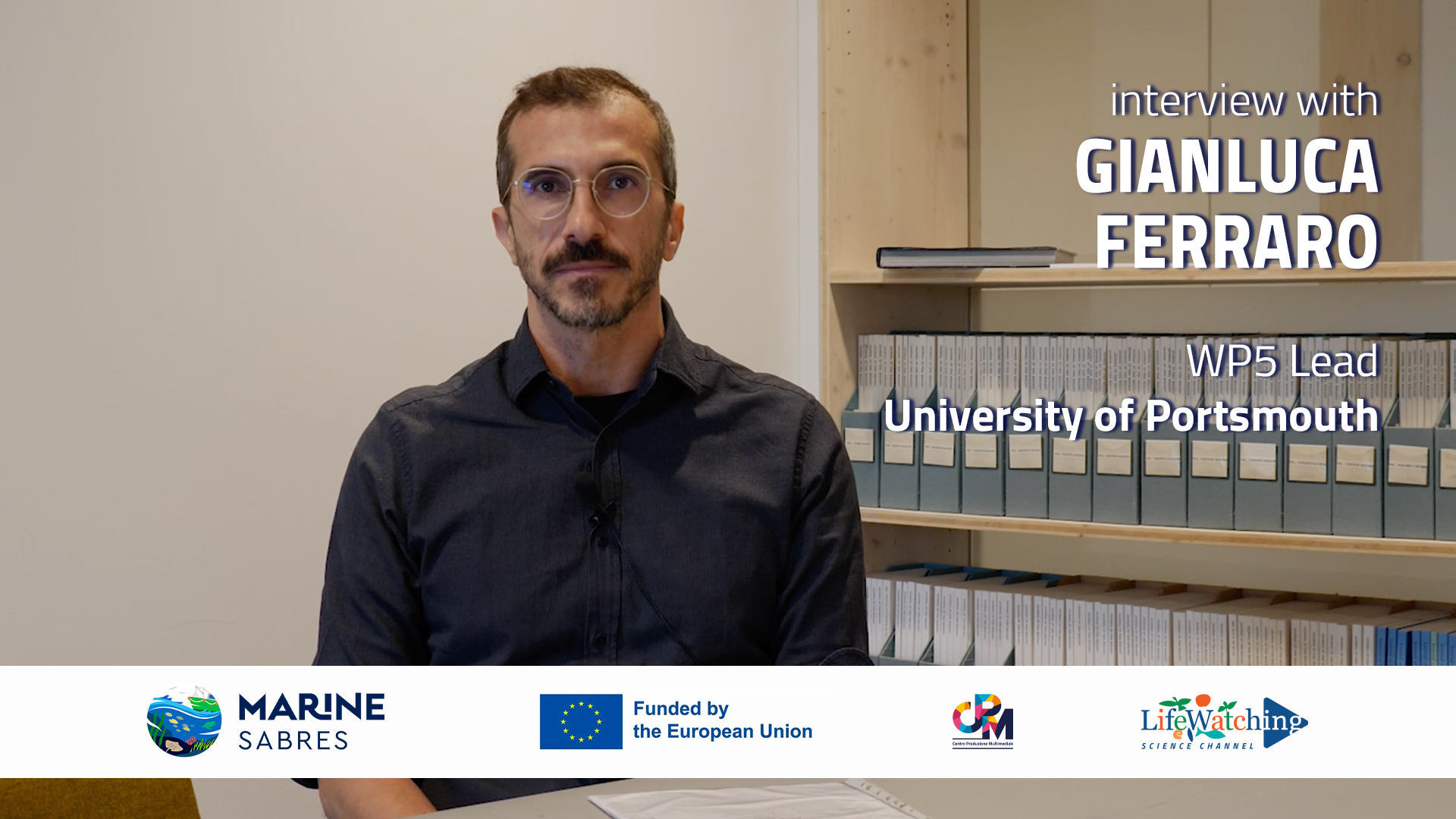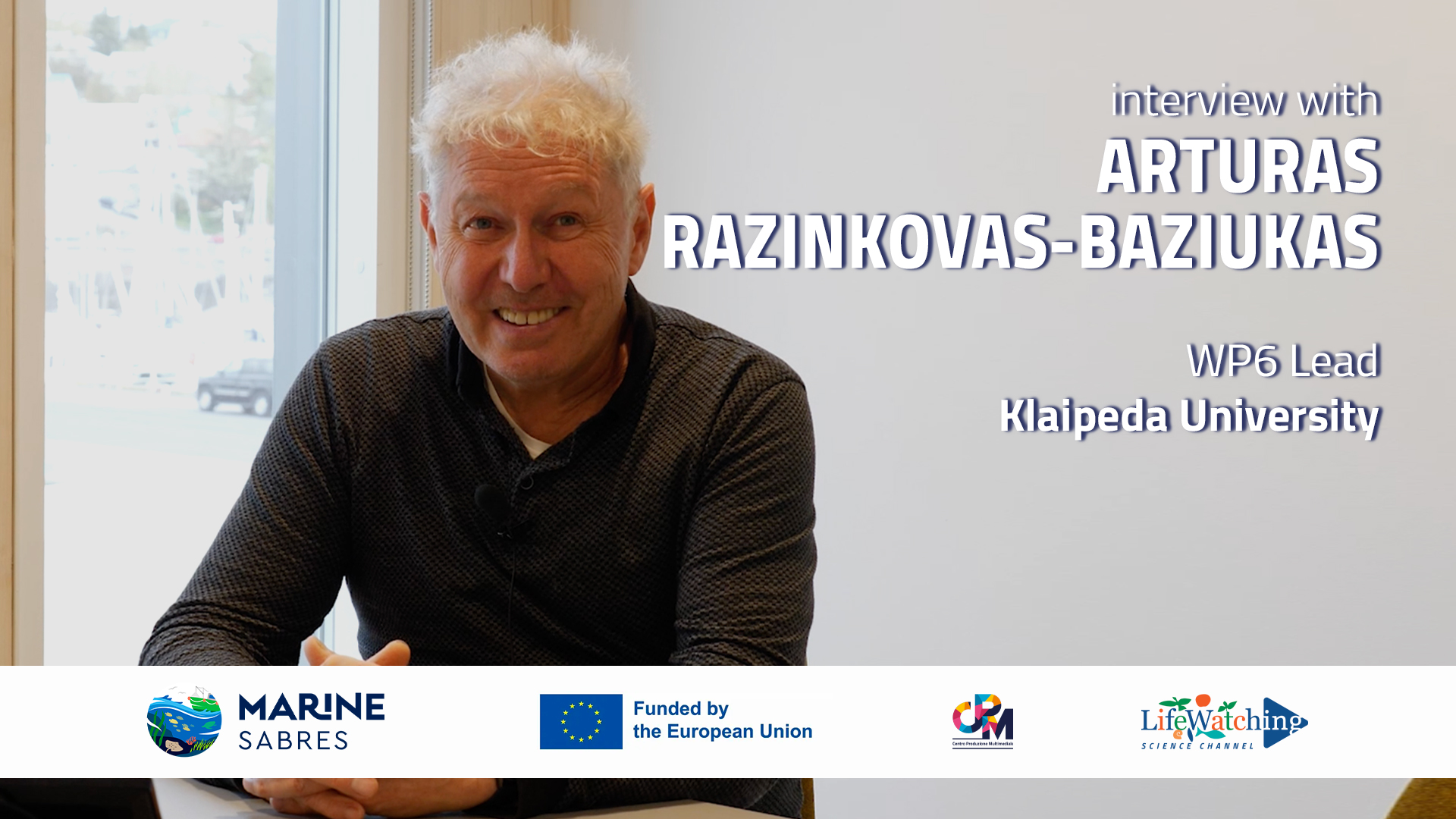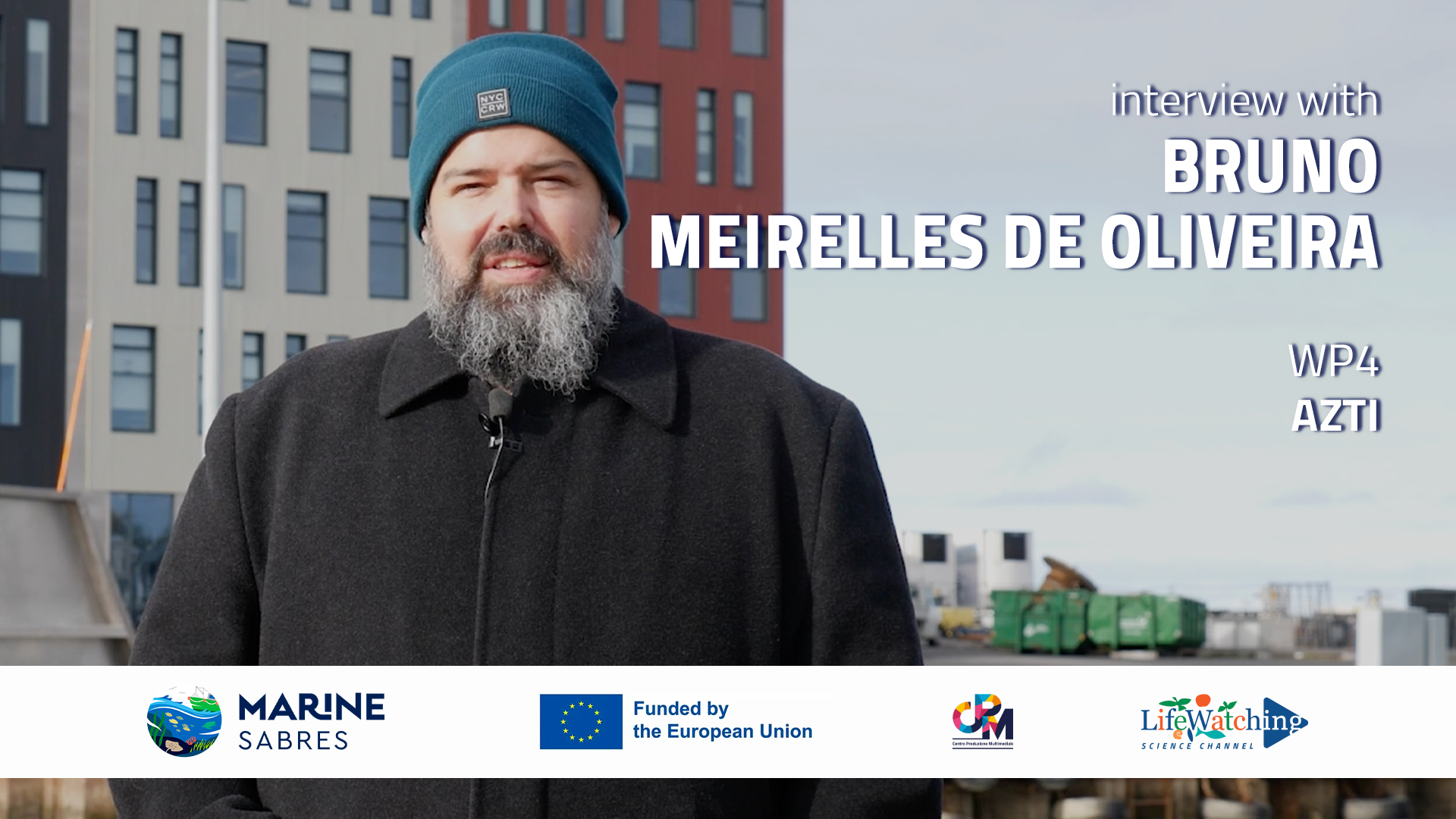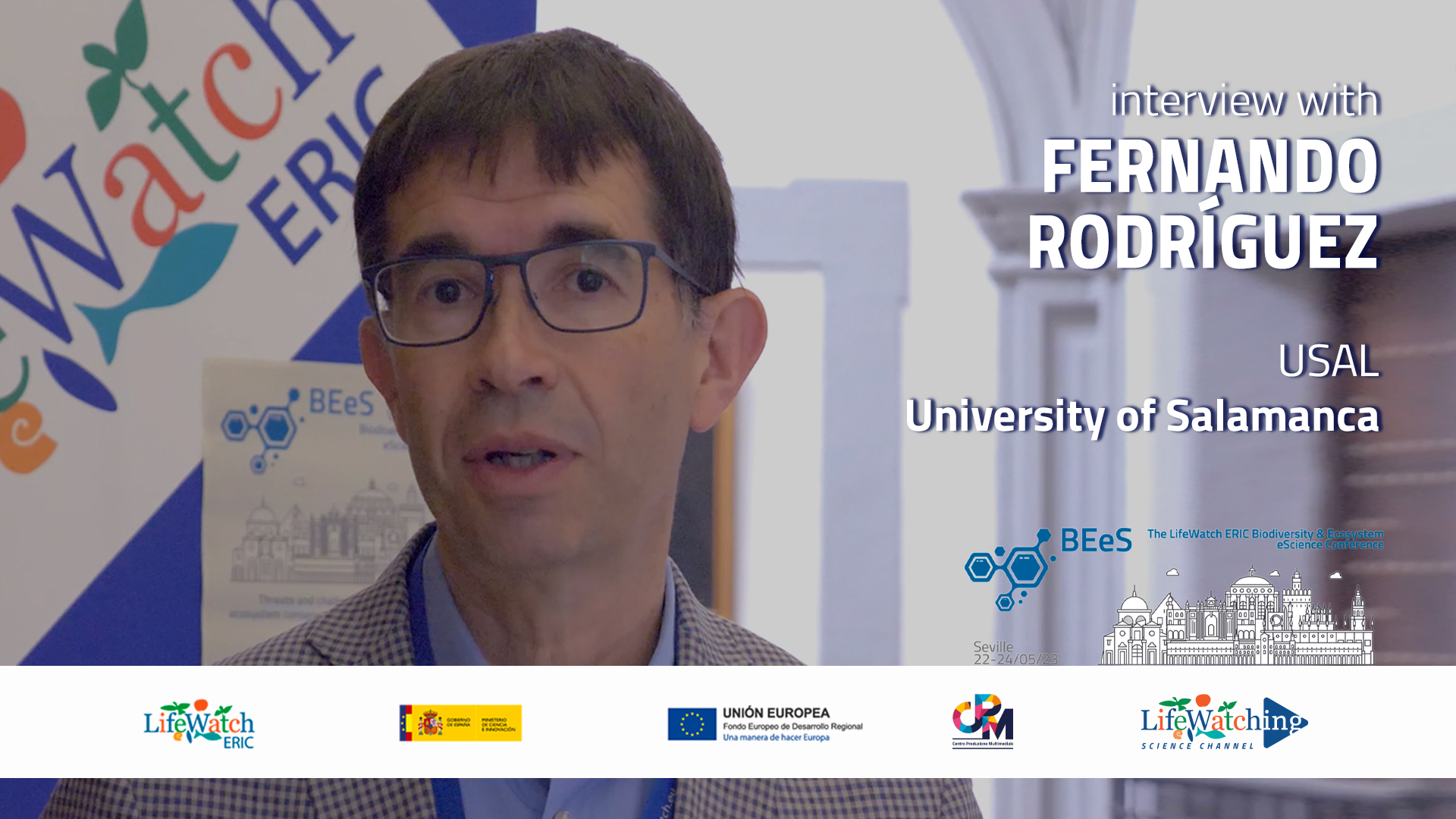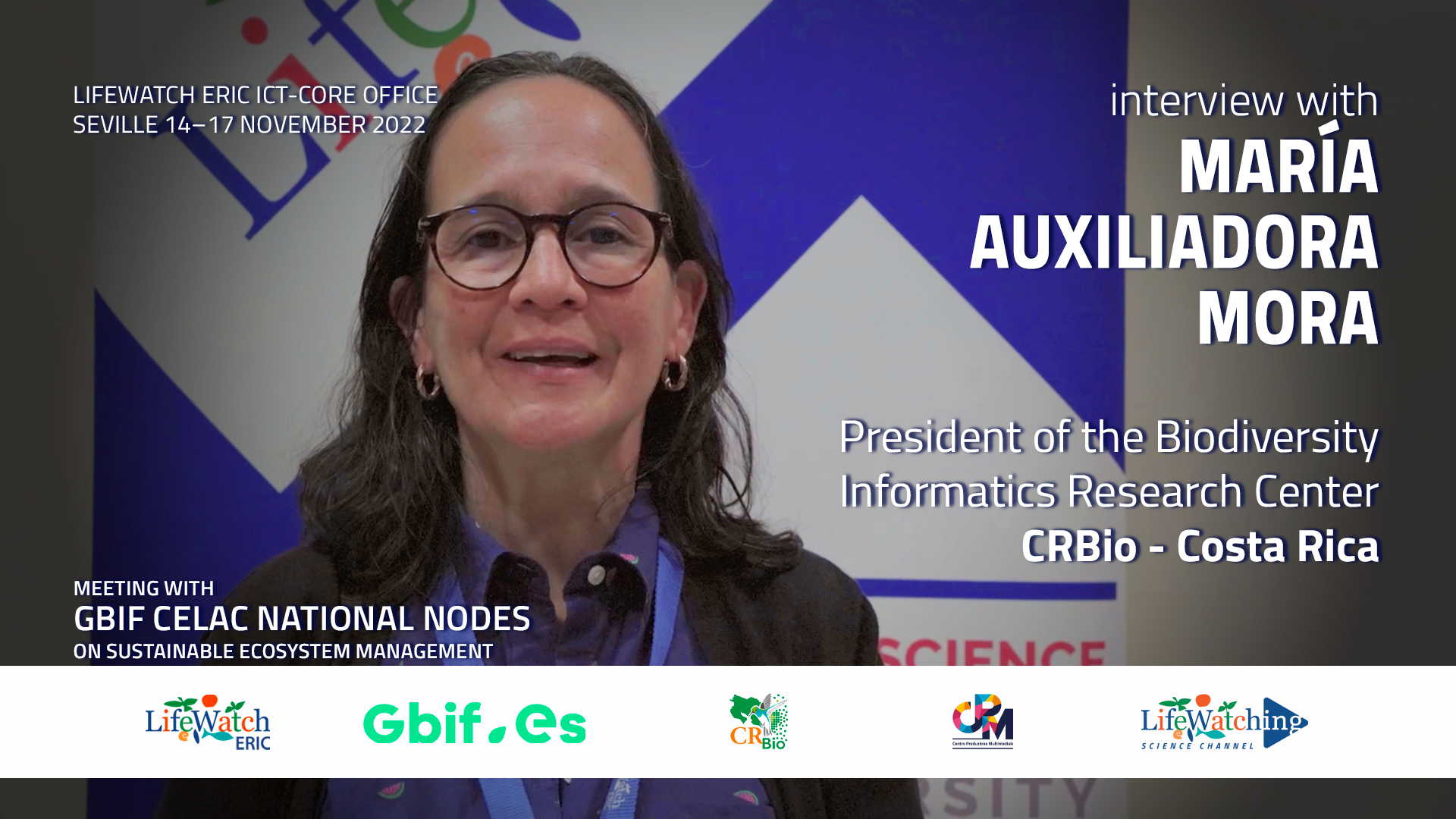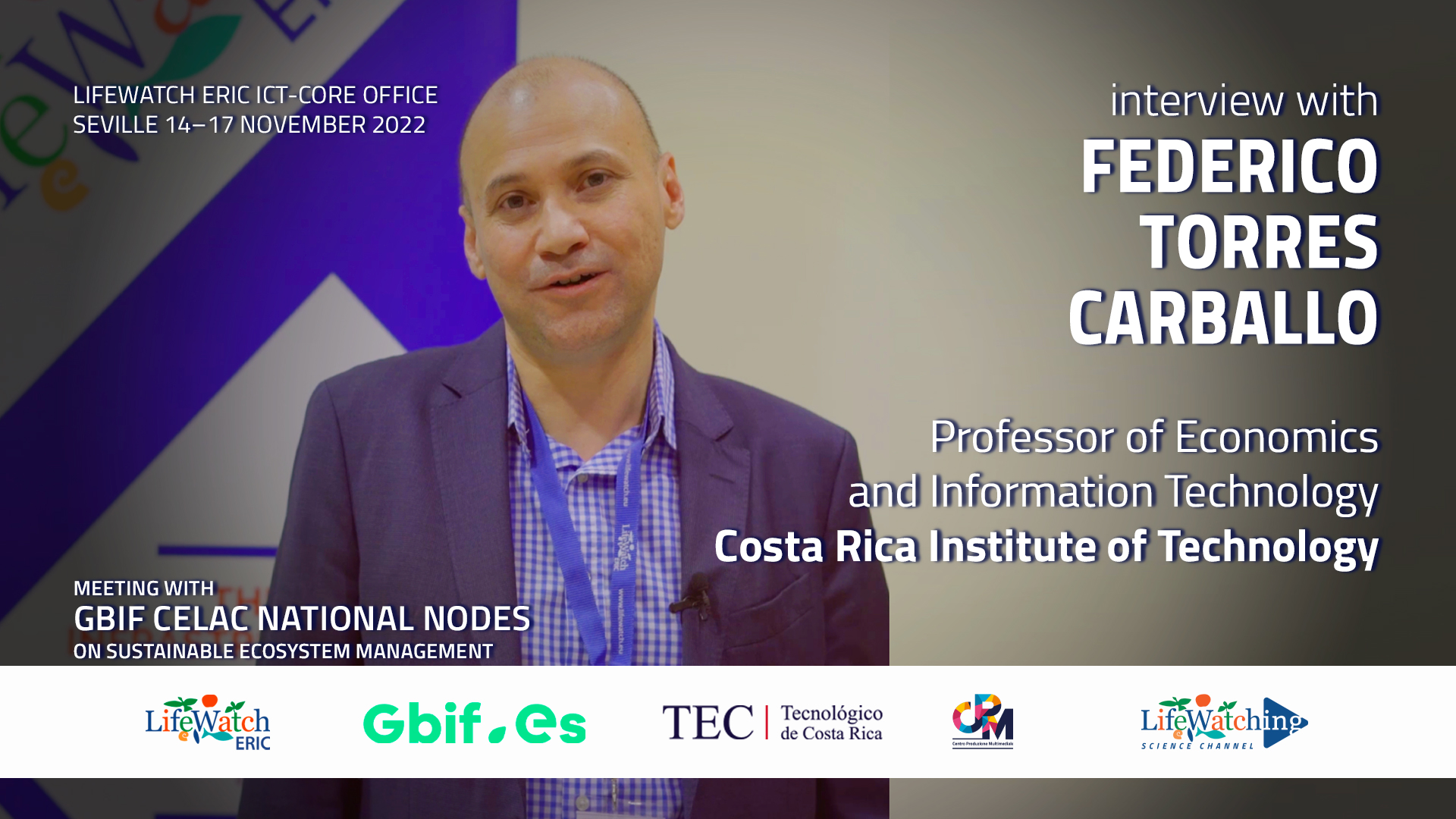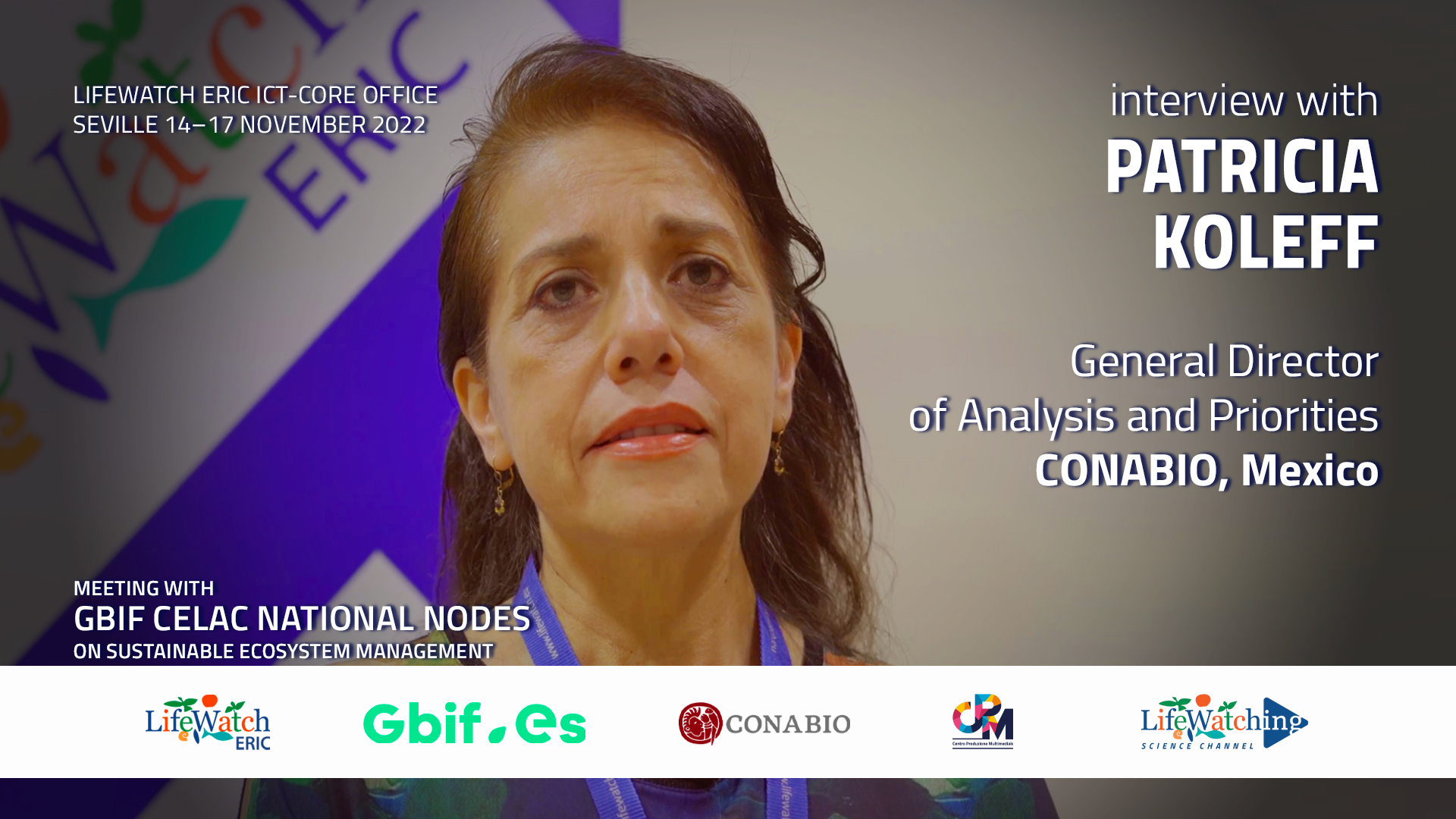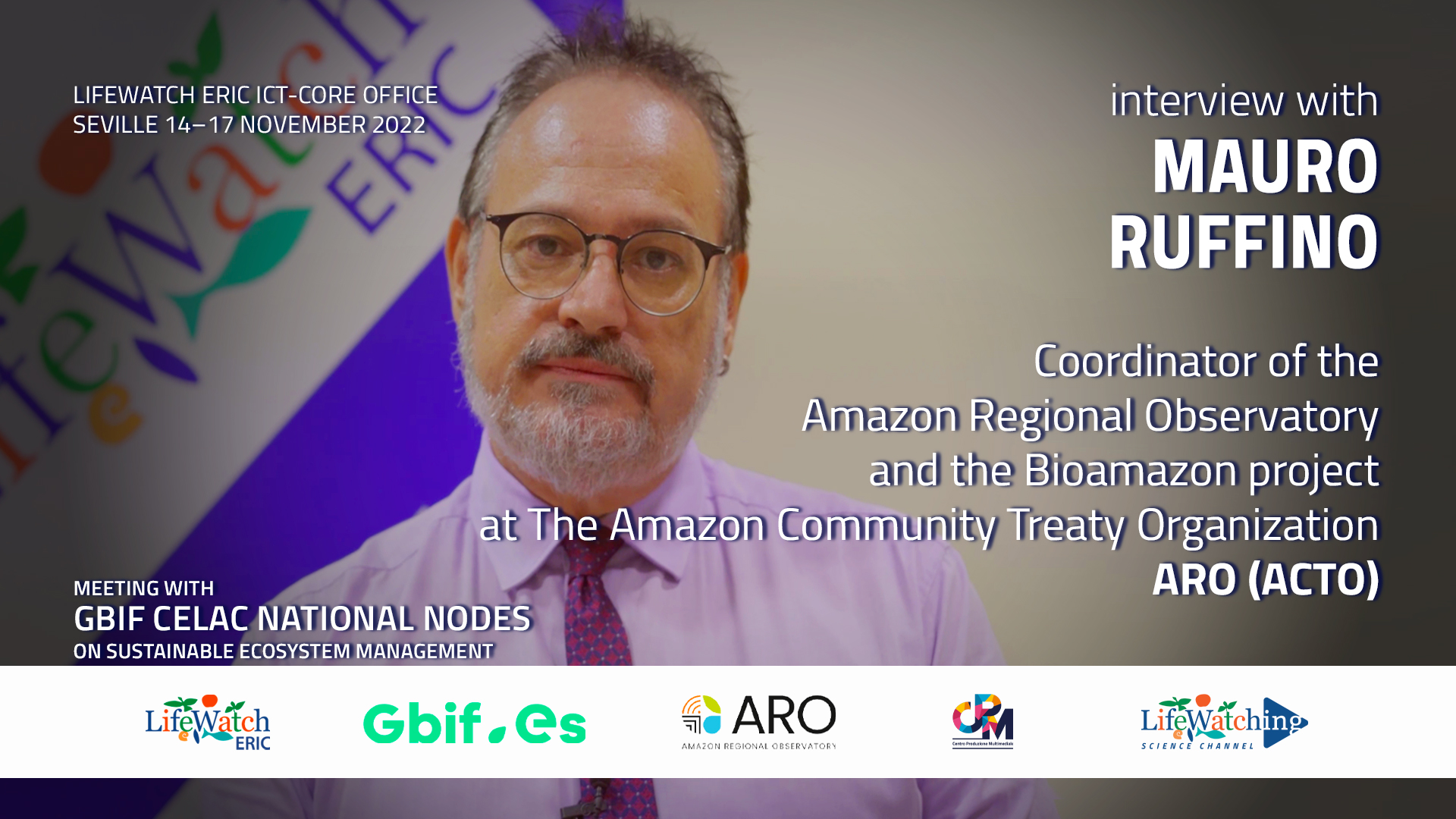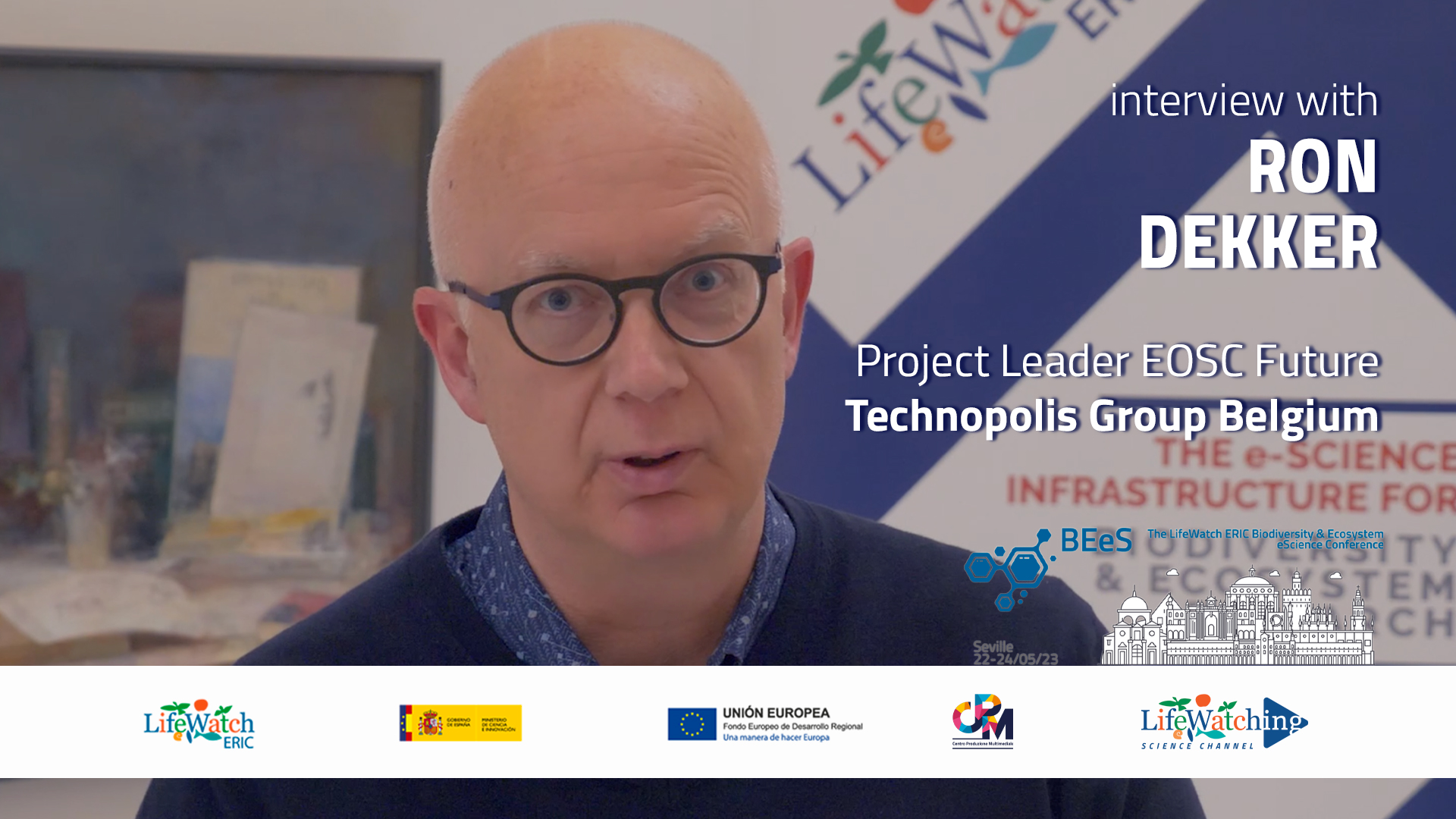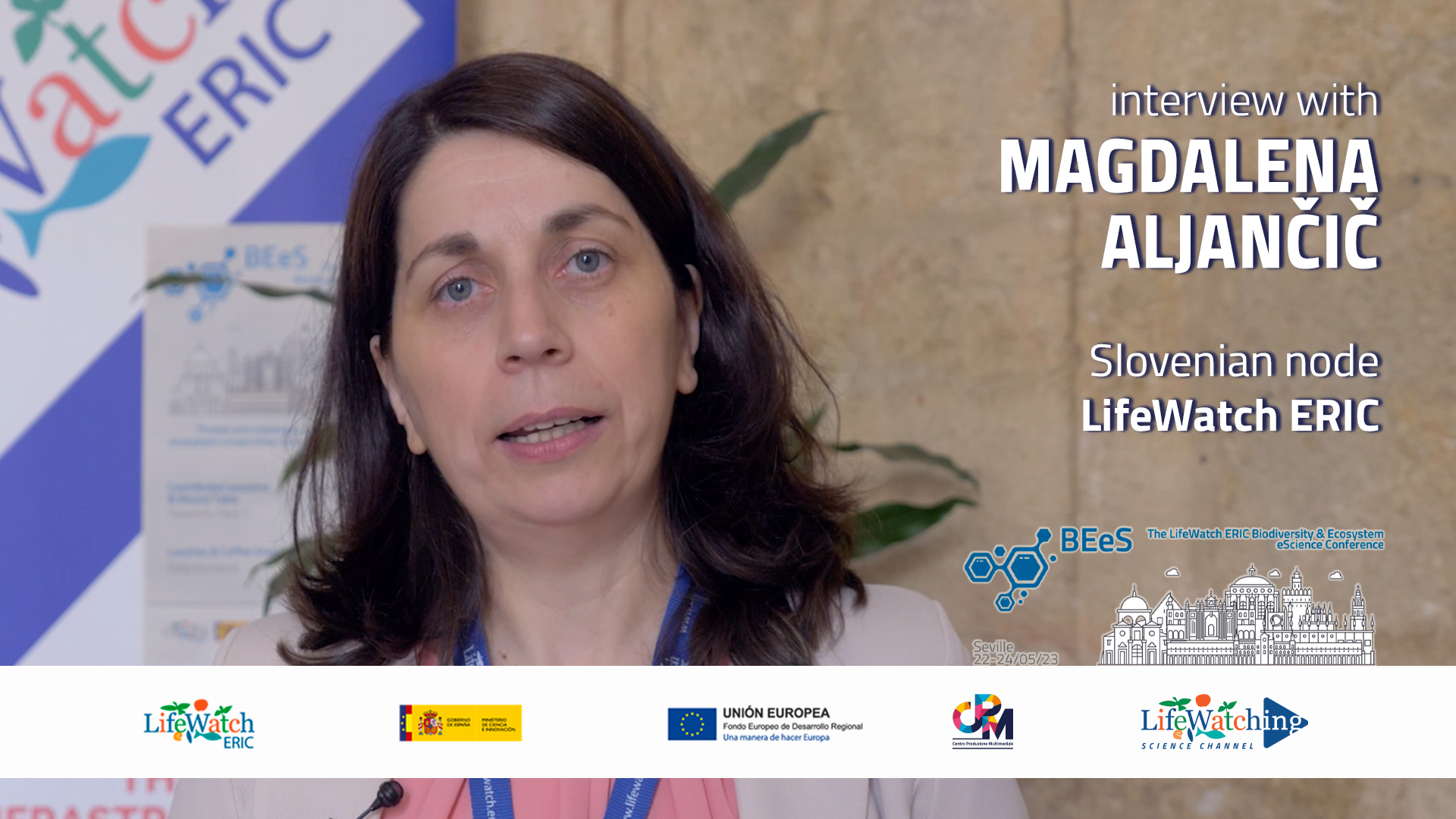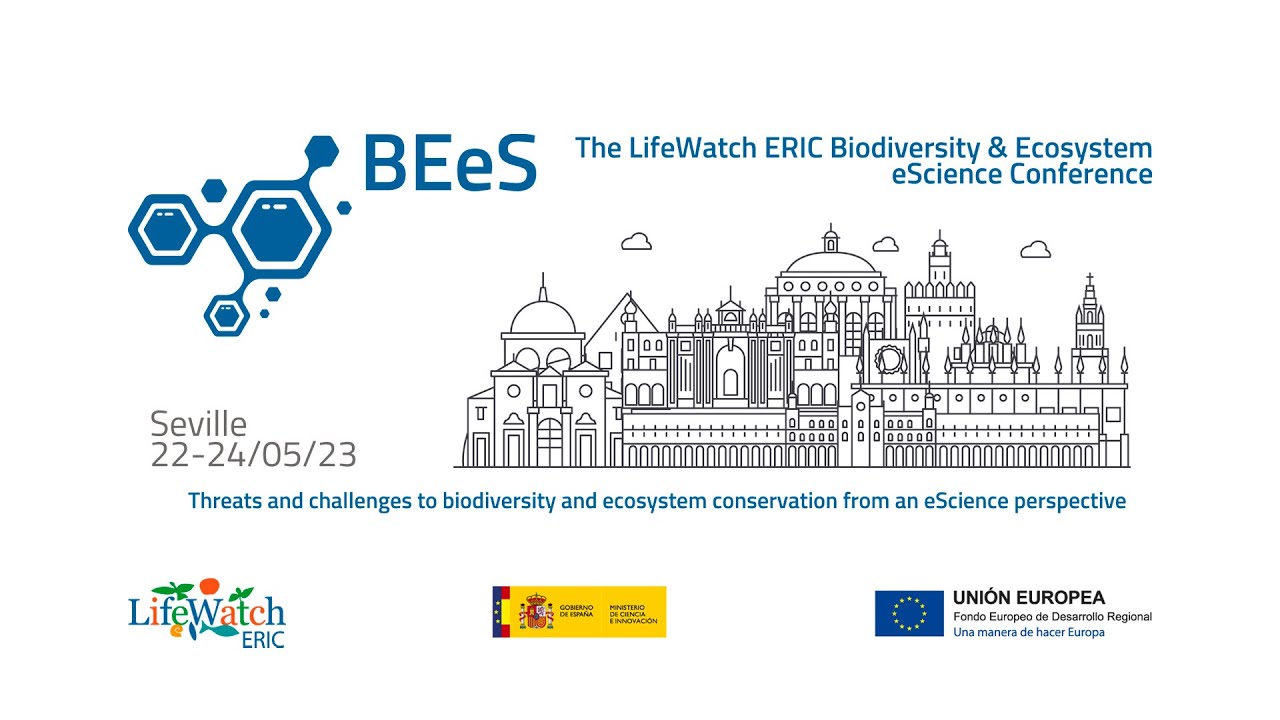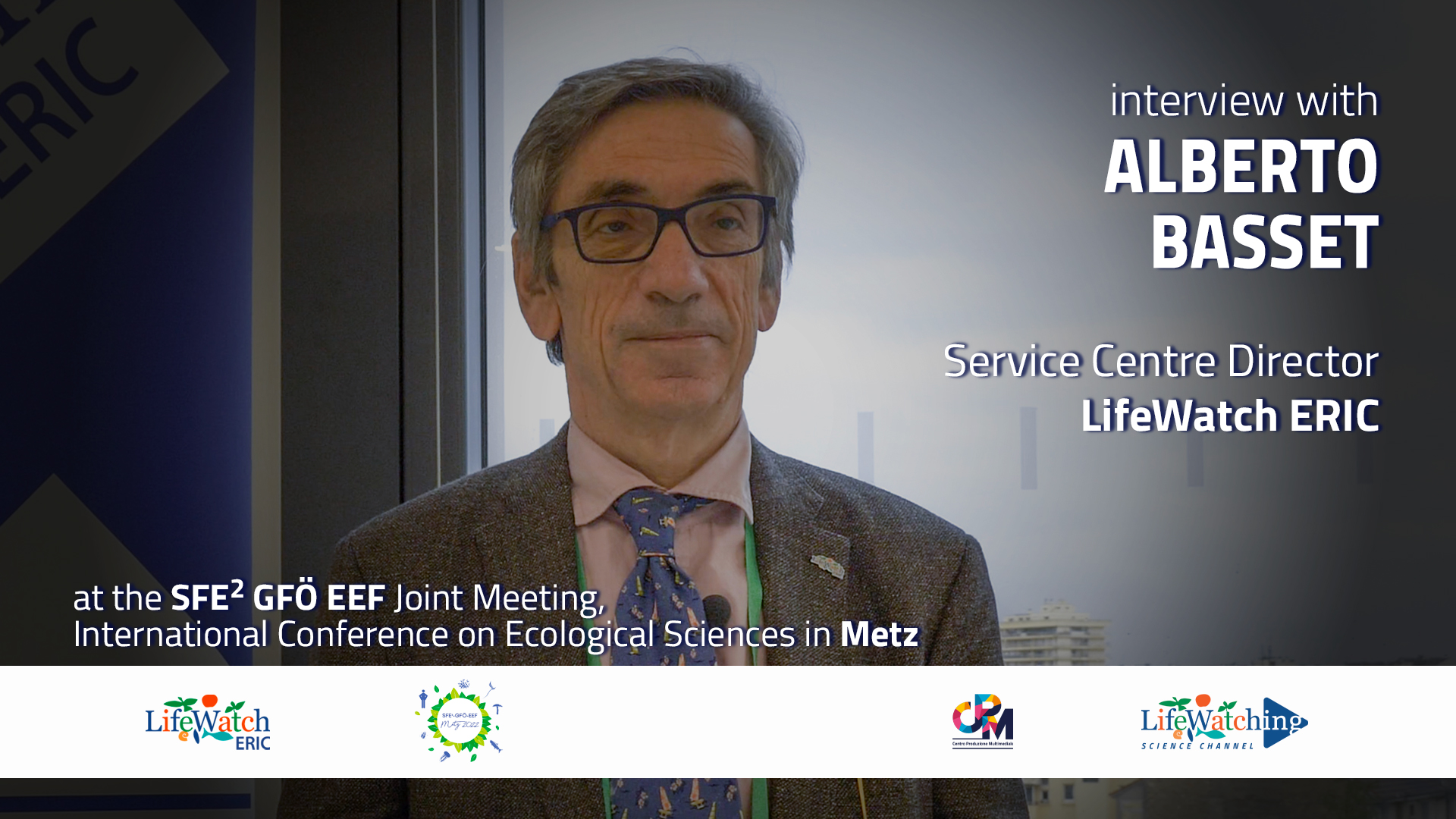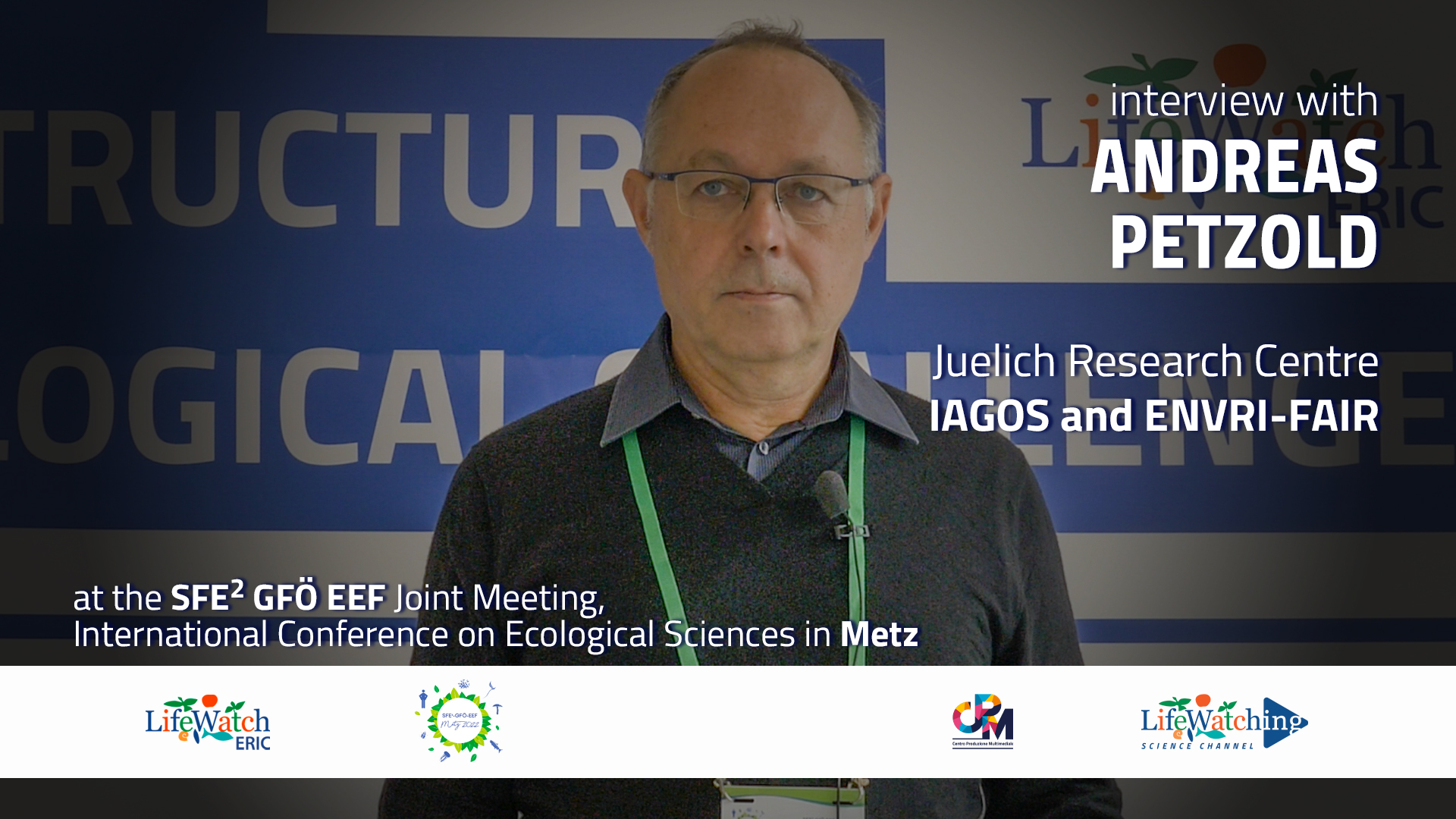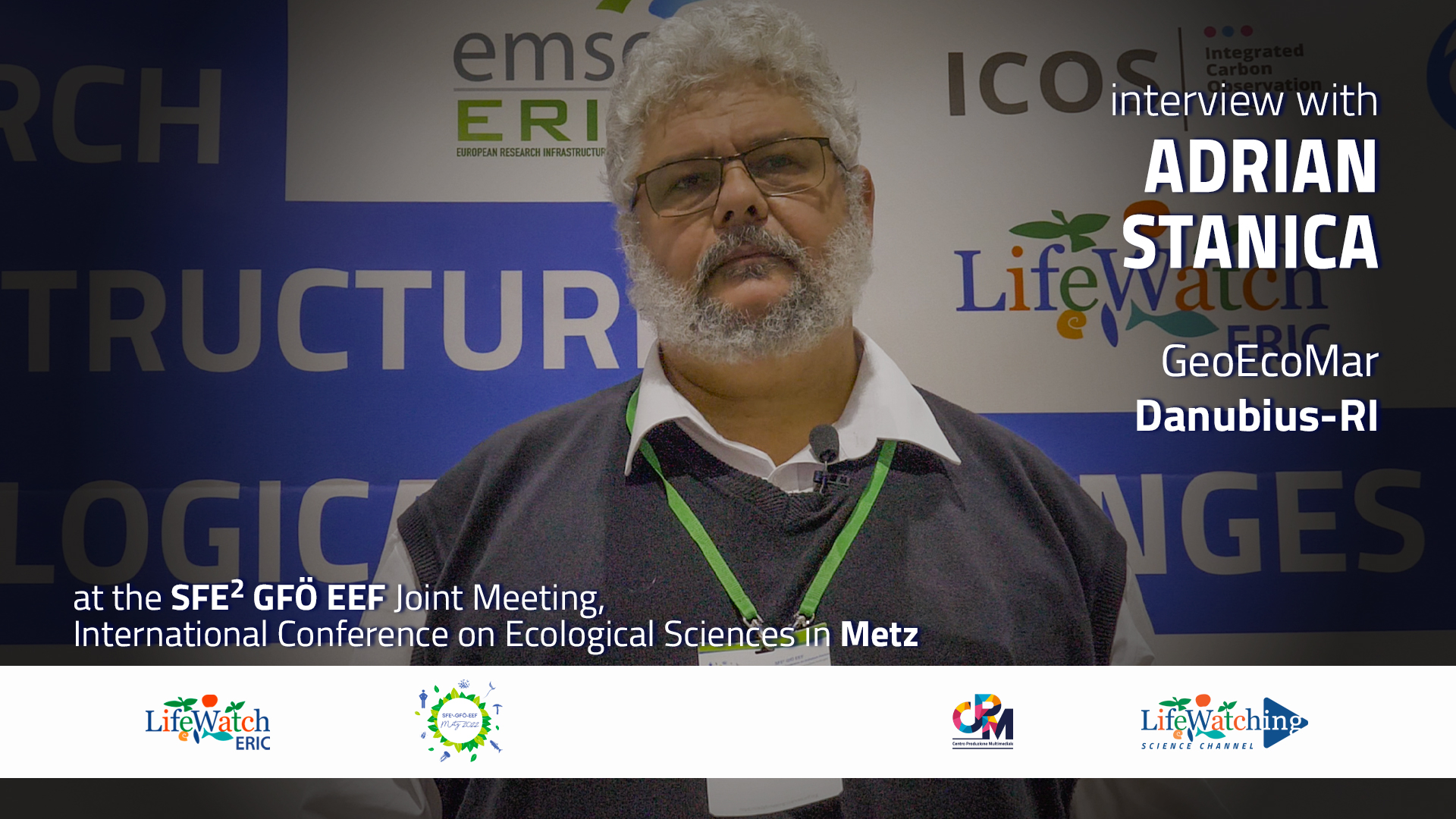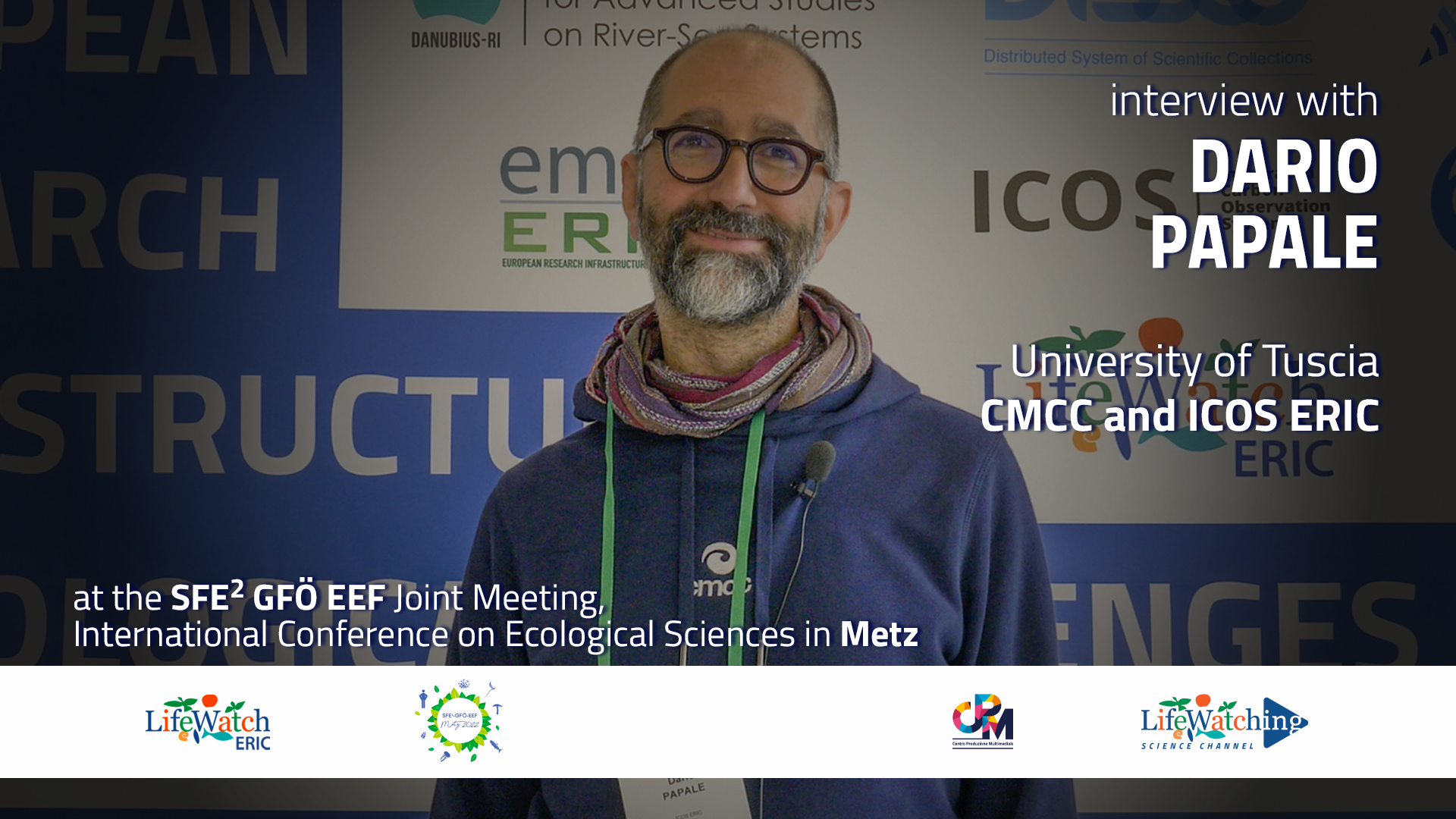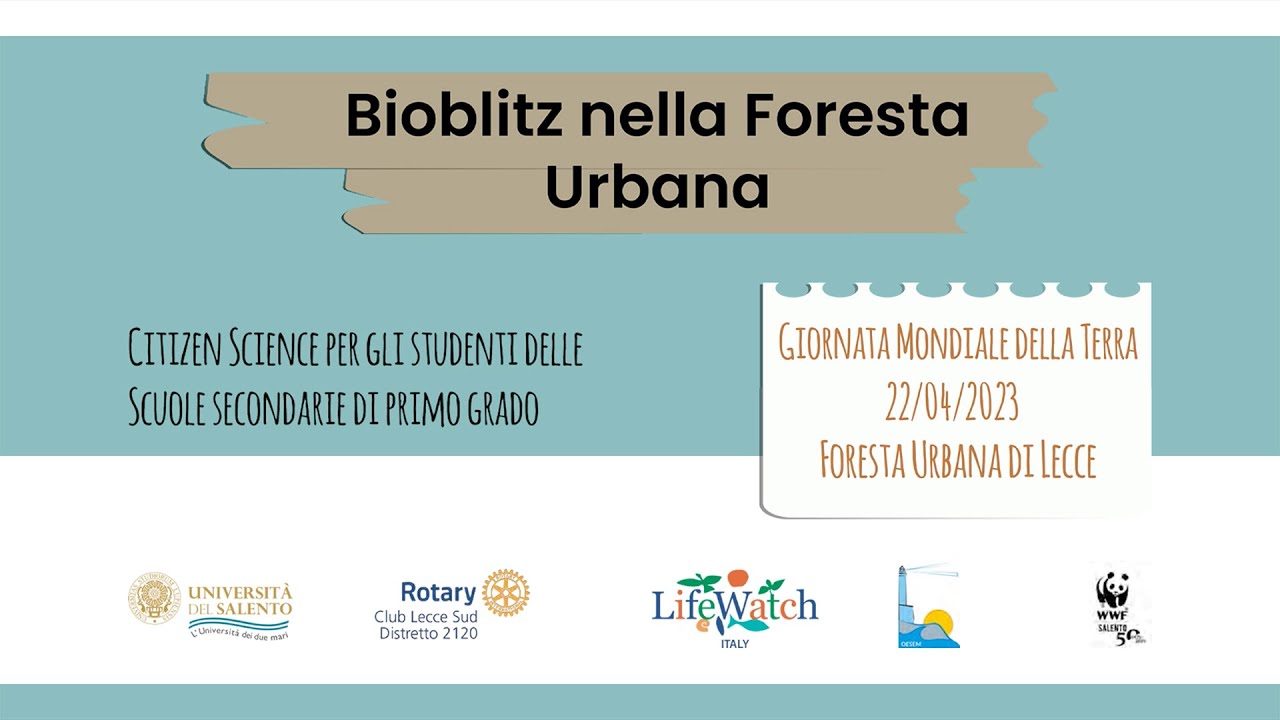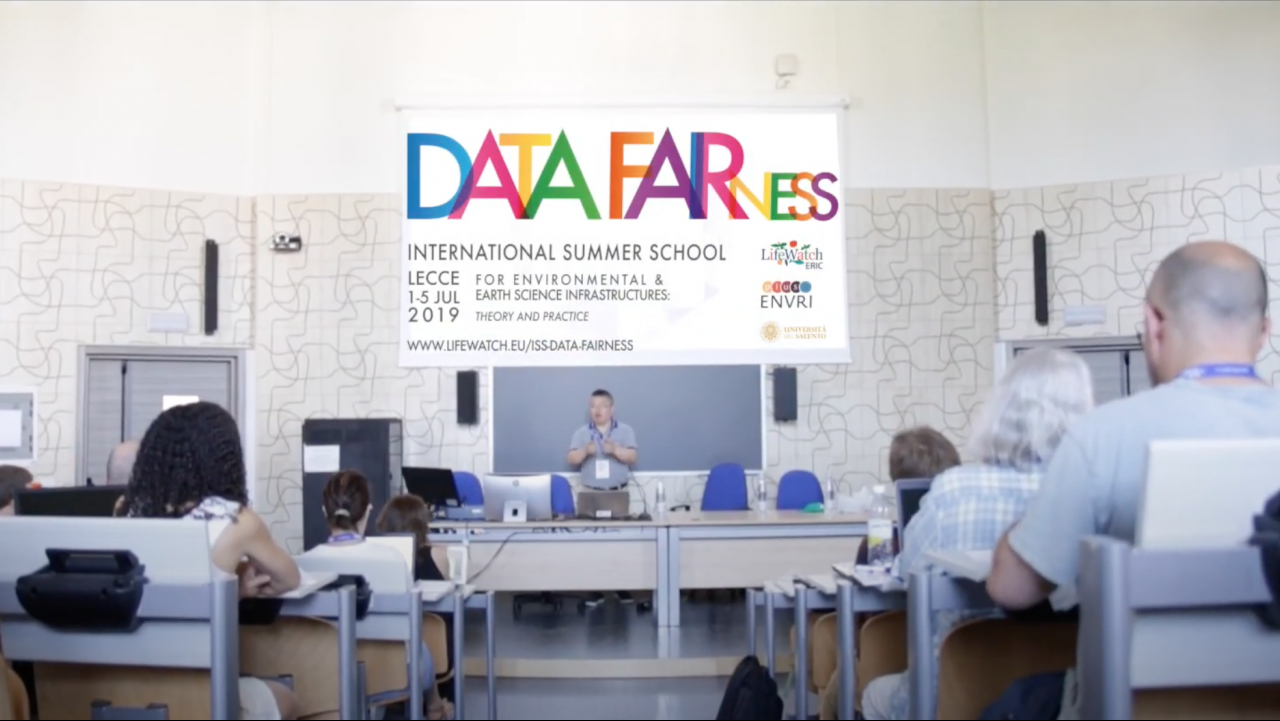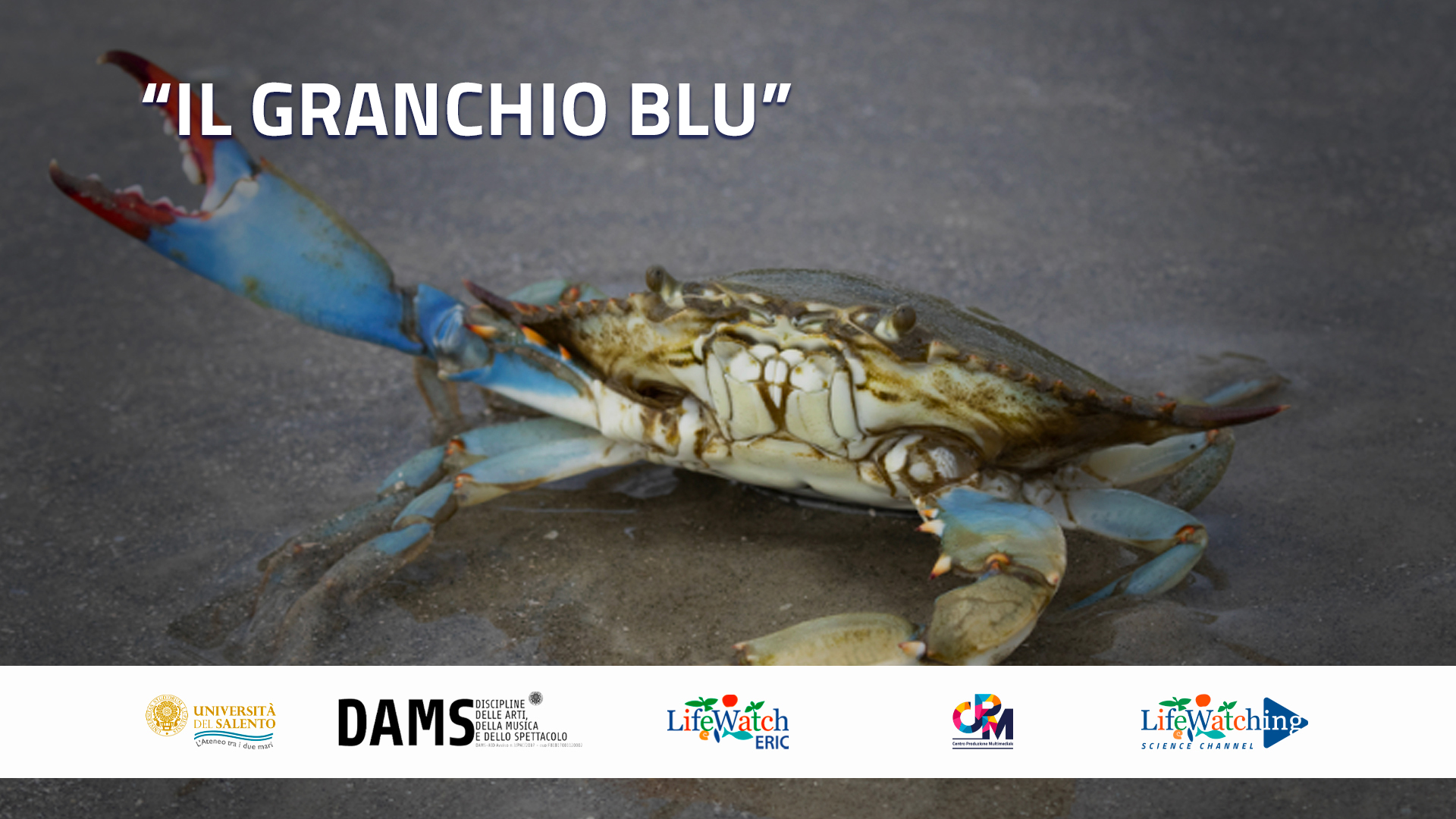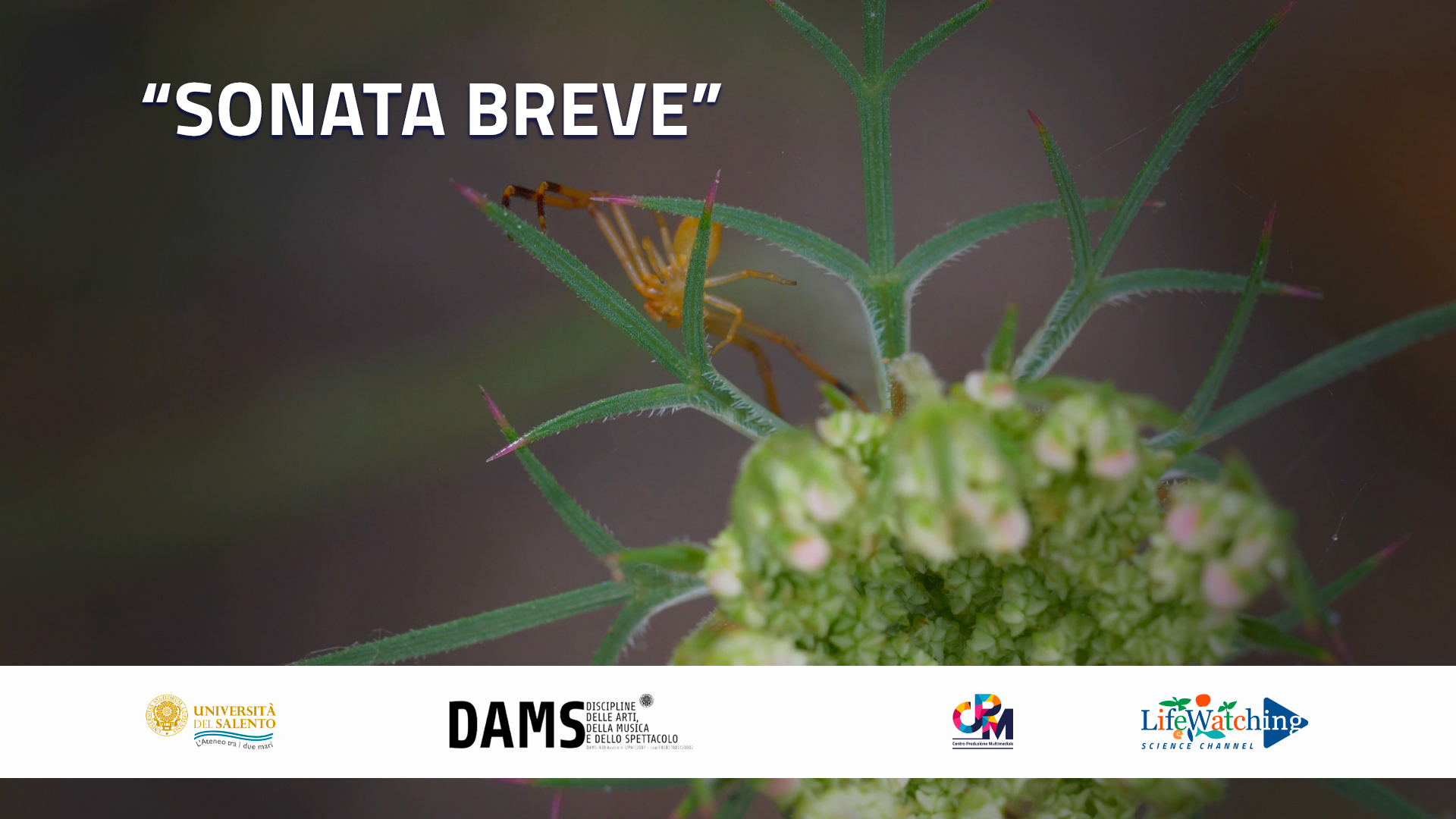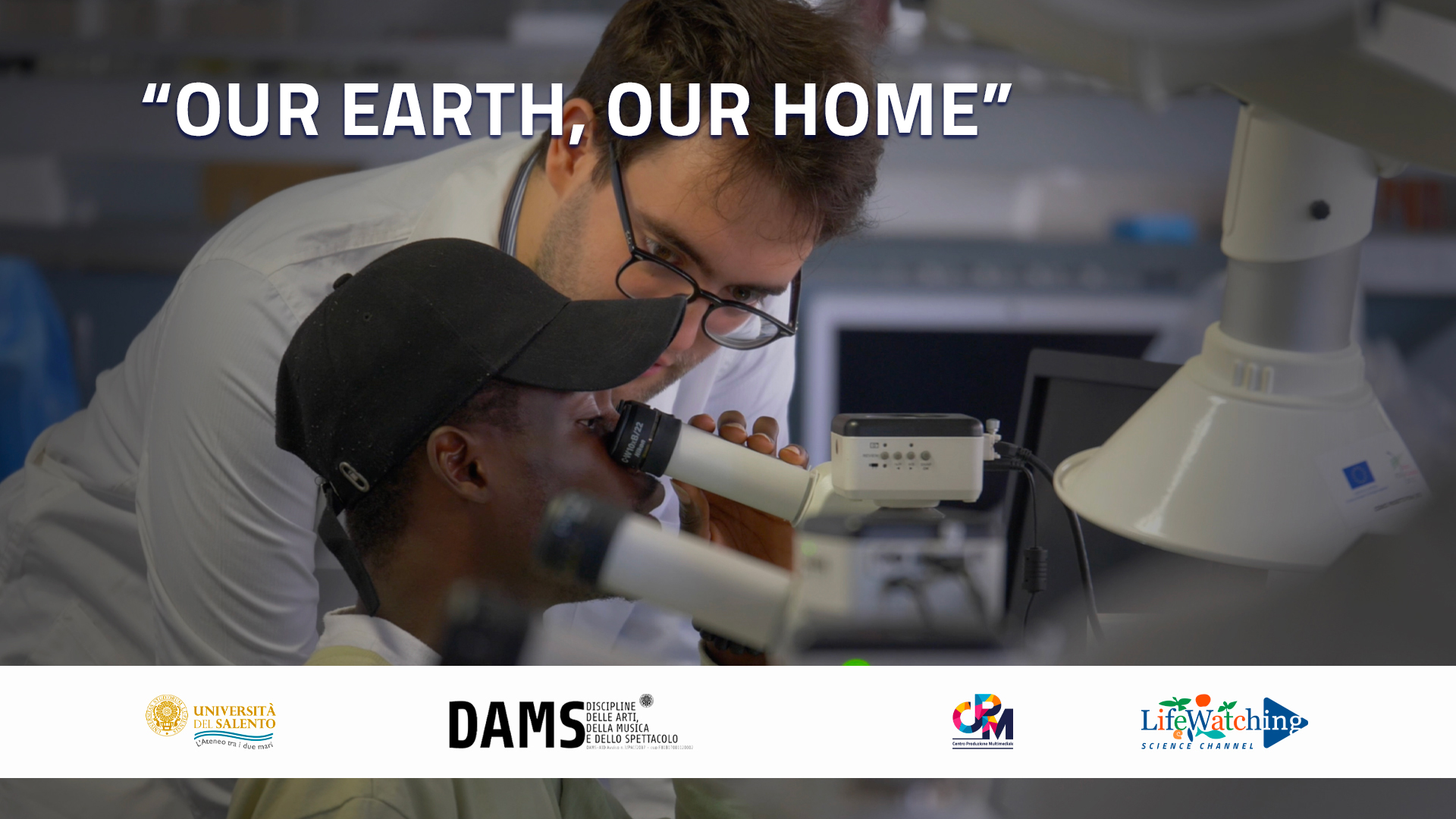Ecological systems: new insights from ecoinformatics
- 56 anni
- BioDT Talks
- 126 Views
Imagine standing on the edge of a vast forest, its canopy alive with the chatter of birds, the rustle of leaves, and the occasional flash of colour from a darting butterfly. Now picture all of a sudden, everything stops. Envision that biodiversity fading. Trees cut one by one, all this diversity replaced by silence. What would we lose? What might we gain? This scene isn’t a distant possibility—it’s unfolding now. From the peaks of the highest mountains to the depths of the oceans, life thrives. Yet, the biodiversity that sustains humanity is in steep decline. The benefits we once relied upon—clean air, fertile soil, food, and protection—are increasingly uncertain.
Alejandro Ordonez Gloria, Associate Professor, Department of Biology, Center for Ecological Dynamics in a Novel Biosphere (ECONOVO), shares in this first video of the BioDT Talks how science and technology are transforming our ability to forecast the future of biodiversity—and, in turn, the future of humanity’s well-being. His mission is to inspire hope and action, showing how data, computational tools, and innovative approaches can guide us toward a thriving planet where both people and nature flourish. This is a story of crisis but also one of possibility. It’s about harnessing the power of science and technology to craft a better future, shifting from being passive participants of the change to active drivers of that change.
Alejandro Ordonez Gloria explains to us why it’s essential to predict biodiversity changes in both the short and long term in order to guide conservation priorities, policy decisions, and proactive environmental management. Then, he introduces Ecoinformatics, the science of using data and computation to unravel the complexity of ecological systems, a powerful bridge between traditional natural history data and computational science, being able to generating insights into biodiversity patterns over time and space. By illustrating the current, different approaches of Ecoinformatics, he discusses how computational models generate plausible scenarios of biodiversity change, integrating environmental shifts with biodiversity narratives, while highlighting the role of computational approaches in assessing and prioritising conservation actions, allowing policymakers to focus on the most impactful strategies.
“The ecoinformatics toolbox is transforming science from a reactive perspective of change to a proactive perspective of change, one in which we can think about which actions do we need to take to get us to the future where we want to be in. And by doing this, we will be able to model where do we want nature to be into the future”, he concludes.
BioDT is a research project funded by the European Union that aims to develop a digital twin prototype for the study and analysis of biodiversity, in support of the EU Biodiversity Strategy for 2030. The Biodiversity Digital Twin prototype provides advanced models for simulation and prediction capabilities, through practical use cases addressing critical issues related to global biodiversity dynamics. The BioDT Talks is the new 6-part series exploring how data, science, and technology are reshaping our response to the biodiversity crisis.
Follow BioDT:
- LinkedIn BioDT: https://www.linkedin.com/company/biodt
- Twitter @BiodiversityDT: https://x.com/BiodiversityDT
- YouTube @BiodiversityDT: https://www.youtube.com/channel/UCqKjtPwy2Tu9lg2sAx1piIA
Learn more about the project and our aims at www.biodt.eu
The webpage dedicated to the project on LifeWatching WebTV: https://www.lifewatching.tv/tv-show/biodt-biodiversity-digital-twin/
Upscaling biodiversity
- 56 anni
- BioDT Talks
- 78 Views
“Biodiversity is intrinsically scale-dependent”. Bill Kunin, University of Leeds, in this second BioDT Talks tackles one of spatial ecology’s biggest challenges: how do we accurately upscale biodiversity data?
One of the reason that makes upscaling biodiversity challenging is that biodiversity is an unusual variable. Unlike simple additive variables, biodiversity is subadditive – two areas with 6 and 4 species don’t necessarily contain 10 species together due to overlap. This makes scaling from local observations to regional or global assessments particularly complex.
Why does upscaling matter? Prof. Kunin explains that there are various reasons researchers might want to upscale biodiversity: to estimate biodiversity in little-know areas or taxa; to extrapolate results of fine-scale experiments to predict larger-scale effects (e.g. the effects of different management schemes); to monitor biodiversity changes across multiple scales; to model spatially realistic futures (e.g. developing more accurate digital twins for biodiversity and ecosystems, linking local and coarser scale patterns). Moreover, upscaling biodiversity allows to assess scale-specific biodiversity impacts, as in case of habitat fragmentation, alien species, and climate change that may affect biodiversity differently at different scales.
Watch the video now to discover how data science and technology are transforming our approach to the biodiversity crisis!
BioDT is a research project funded by the European Union that aims to develop a digital twin prototype for the study and analysis of biodiversity, in support of the EU Biodiversity Strategy for 2030. The Biodiversity Digital Twin prototype provides advanced models for simulation and prediction capabilities, through practical use cases addressing critical issues related to global biodiversity dynamics. The BioDT Talks is the new 6-part series exploring how data, science, and technology are reshaping our response to the biodiversity crisis.
Follow BioDT:
- LinkedIn BioDT: https://www.linkedin.com/company/biodt
- Twitter @BiodiversityDT: https://x.com/BiodiversityDT
- YouTube @BiodiversityDT: https://www.youtube.com/channel/UCqKjtPwy2Tu9lg2sAx1piIA
Learn more about the project and our aims at www.biodt.eu
The webpage dedicated to the project on LifeWatching WebTV: https://www.lifewatching.tv/tv-show/biodt-biodiversity-digital-twin/
Transforming data into new knowledge: data pipelines for biodiversity research
- 56 anni
- BioDT Talks
- 107 Views
“As a little girl, I was roaming around in the forest in spring, enjoying the fact that the snow had melted. I grew up in Norway; we have long winters and looking for the spring flower was one of the favourite activities for kids…And looking for Epatica nobilis (Liver leaf) was one of the most important things we did because we got to get in the local newspaper if you were the first ones. We knew about specific places where the snow melted first and we had some hints of leaves etc that indicated that this is the place where we could find this precious flower”. Bente Lilja Bye, founder of the research and consulting company BLB, told us her first experience collecting data; her mother used to make notes in her diary, e.g. on when the lake melted in spring. These observations, the information about the first Epatica nobilis of the year and the “metadata” around these spring flowers, carefully handwritten in her mother’s diary, were her first repository of her life. An important channel for her to get involved in her current job.
In this third video of the BioDT Talks series, Bente Lilja Bye explains why is worth learning about data pipelines and to build Digital Twins for biodiversity.
So, first of all, what is a Digital Twin? A Digital Twin for biodiversity is a sophisticated digital representation of ecosystems, species, and their interactions with the environment. This technology integrates various data sources to create a dynamic simulation that mirrors real-world biological systems. “A simple representation of a Digital Twin is that you have a physical system and a virtual system”, Bente Lilja Bye says. “Data or observations of the physical system are used to create the virtual system. Now, the virtual system is running models etc giving feedback into the physical system and in this way we have a loop called Digital Twin”.
The data is the core of a Digital Twin, we would not have Digital Twins without data. There are currently many sources and many types of data, and the challenge is to collect, harmonise, standardise, processing all this amount of information to put all these different types of data together. Data pipelines are essential for efficiently processing vast amounts of data and providing real-time insights for Digital Twins. In simpler words, they are systems leading from the collection and acquisition of data, to their final transformation into new knowledge or possible decisions. Moreover, data pipelines enable industry, academia, and the public sector to more efficiently share data, facilitating interdisciplinary collaboration.
“By being a foundational component of a Digital Twin, a data pipeline represents a transformative approach to biodiversity conservation, offering enhanced monitoring capabilities, improved decision-making processes, predictive insights, and fostering collaboration among stakeholders. And these benefits are instrumental in addressing the pressing challenges facing global biodiversity today”. Watch the video to find out more!
BioDT is a research project funded by the European Union that aims to develop a digital twin prototype for the study and analysis of biodiversity, in support of the EU Biodiversity Strategy for 2030. The Biodiversity Digital Twin prototype provides advanced models for simulation and prediction capabilities, through practical use cases addressing critical issues related to global biodiversity dynamics. The BioDT Talks is the new 6-part series exploring how data, science, and technology are reshaping our response to the biodiversity crisis.
Follow BioDT:
- LinkedIn BioDT: https://www.linkedin.com/company/biodt
- Twitter @BiodiversityDT: https://x.com/BiodiversityDT
- YouTube @BiodiversityDT: https://www.youtube.com/channel/UCqKjtPwy2Tu9lg2sAx1piIA
Learn more about the project and our aims at www.biodt.eu
The webpage dedicated to the project on LifeWatching WebTV: https://www.lifewatching.tv/tv-show/biodt-biodiversity-digital-twin/
Top 3 video contents of the month
Browse by topic
Biodiversity & ecosystems
Climate change & human pressures
- 29 November 2023
- Teaser
- 29 November 2023
- Interviews
- 11 November 2022
- Interviews
- 12 October 2022
- Field research
- 25 May 2022
- Alien species
Conservation & restoration
- 01 December 2023
- Interviews
- 01 December 2023
- Interviews
- 01 December 2023
- Interviews
- 01 December 2023
- Interviews
Sustainable development
- 29 November 2023
- Interviews
- 29 November 2023
- Interviews
- 29 November 2023
- Interviews
- 29 November 2023
- Interviews
- 29 November 2023
- Interviews
- 29 November 2023
- Interviews
- 20 June 2023
- Interviews
- 17 February 2023
- Interviews
LifeWatch ERIC advancements
Education
- 05 March 2024
Awards
What's new on the LifeWatch ERIC National TV channels
EcologicaCup 2024: la cerimonia di premiazione delle scuole vincitrici
Il 21 maggio 2024, nel corso della Settimana della Biodiversità Pugliese, si è svolta la cerimonia di premiazione di EcoLogicaCup 2024, la competizione nazionale di Ecologia e Sostenibilità per le scuole primarie e secondarie. L’edizione di quest’anno s’inseriva tra le iniziative del Festival dello Sviluppo Sostenibile ed era patrocinata dalla RUS – Rete delle Università per lo Sviluppo Sostenibile.
Coordinato dal Prof. Alberto Basset e dalla dott.ssa Franca Sangiorgio, il progetto EcoLogicaCup è promosso e organizzato dal Laboratorio di Ecologia e dal Museo su Ecologia degli Ecosistemi Mediterranei del Dipartimento di Scienze e Tecnologie Biologiche e Ambientali UniSalento, in collaborazione con LifeWatch Italia.
EcoLogicaCup, la gara nazionale di ecologia per le scuole | Spot
EcoLogicaCup è una gara nazionale a squadre, completamente online, per approfondire tematiche di ecologia, educazione ambientale e sostenibilità con gli studenti della scuola primaria e secondaria. La partecipazione alla competizione prevede la registrazione gratuita delle squadre su una piattaforma, approfondimenti di ecologia consultabili e scaricabili, sessioni di allenamento e gara finale. Sotto la guida di un docente tutor, le squadre partecipano alla gara finale, dopo aver superato le selezioni attraverso una serie di allenamenti online con quiz a risposta multipla sulle tematiche di gara. Le migliori squadre degli allenamenti e i vincitori assoluti della competizione finale ricevono dei premi nel corso di una cerimonia ufficiale.
EcoLogicaCup riconosce nei giovani la componente sociale maggiormente ricettiva ai valori ambientali, pronta a modificare i propri comportamenti e a promuovere un cambiamento dei comportamenti anche delle altre fasce generazionali. EcoLogicaCup vuole contribuire allo sviluppo di una cultura sempre più orientata verso la sostenibilità, con l’auspicio di formare futuri cittadini più consapevoli rispetto alle tematiche ambientali.
Le attività si collocano nel panorama definito dall’Agenda 2030 per lo Sviluppo Sostenibile, in particolare in riferimento agli Obiettivi 13, 14 e 15. Incentrata sull’uso del web, EcoLogicaCup promuove un’Educazione 3.0 dove gli studenti sono creatori di artefatti di conoscenza che condividono tra loro, rendendo il processo d’insegnamento-apprendimento un’esperienza più stimolante.
Per iscriversi e partecipare visita la piattaforma dedicata a EcologicaCup
Contatti: Dott.ssa Franca Sangiorgio
ecologicacup@unisalento.it
+39 0832 298606
Transizioni ecologiche: i Cammini di LTER Italia
Dal Mar Piccolo ad Acquatina, il cammino in bicicletta di LTER Italia collega, in tre giorni, due importanti siti della ricerca ecologica di lungo termine. La natura degli ambienti di transizione del Mar Piccolo di Taranto e di Acquatina di Leccce ispira un percorso che si snoda attraverso un territorio che passa dal mare alla terra.
L’iniziativa rientra tra gli obiettivi del National Biodiversity Future Center (NBFC) di conservare, ripristinare, monitorare e valorizzare la biodiversità italiana e mediterranea. Per maggiori informazioni, visita il sito ufficiale LTER-IT
“La foresta invisibile” finalista al concorso Rai “Prix Italia 2023”
“La foresta invisibile” è il documentario realizzato dagli studenti del laboratorio di film-making del corso di laurea in Discipline delle Arti, della Musica e dello Spettacolo (DAMS) dell’Università del Salento, condotto dal Prof. Luca Bandirali e coordinato dal dott. Emiliano Carico e dal dott. Fabrizio Lecce. Il progetto, realizzato in collaborazione con LifeWatch ERIC, il consorzio per un’infrastruttura europea di e-Science e Tecnologia per la ricerca su biodiversità ed ecosistemi, è stato presentato al Prix Italia 2023 Concorso internazionale per Radio, TV e Web della Rai.
Protagonista del video è il Phytoplankton, elemento invisibile a occhio nudo, fonte essenziale di energia per gli ecosistemi marini e non solo.
Il progetto è frutto di una collaborazione tra dipartimenti (Beni Culturali, DAMS e DiSTeBA), e nasce con l’obiettivo di sensibilizzare l’opinione pubblica sul tema della ricerca scientifica e delle energie rinnovabili.
EcologicaCup 2023: la premiazione al Festival dello Sviluppo Sostenibile
Cerimonia di premiazione di EcoLogicaCup 2023, Competizione nazionale di Ecologia e Sostenibilità per le scuole primarie e secondarie.
EcoLogicaCup è promossa e organizzata dal Laboratorio di Ecologia e dal Museo su Ecologia degli Ecosistemi Mediterranei del Dipartimento di Scienze e Tecnologie Biologiche e Ambientali, in collaborazione con LifeWatch Italia.
L’edizione di quest’anno è tra le iniziative del Festival dello Sviluppo Sostenibile ed è patrocinata dalla RUS – Rete delle Università per lo Sviluppo Sostenibile. Progetto coordinato da Alberto Basset e Franca Sangiorgio.
A better science to address the challenges in front of us
“Biodiversity is the most important natural resource that we have on our planet, the only one that actually can protect ourselves, can give us food, sustain the economy for us and give us a future […] How can we combat the loss of biodiversity and the loss of overall standing biomass that we are expected to have in the next 20-100 years? That is the great question that we have in front of us and we need to find a solution. No chance to go any different way. Clearly LifeWatch has a role in this game: as an e-Science Research Infrastructure, LifeWatch can support all the scientists, can support all the components in the game to do a better science, to do a faster science, to improve our development in the shortest possible term, and that is going to be crucial to address the challenge that we have in front of us with climate change and with all the other challenges that could be minor when compared to climate change, but they actually occur.”
The video message of Alberto Basset, Director of the Service Centre of LifeWatch ERIC, at BEeS 2023, the LifeWatch ERIC Biodiversity and Ecosystem eScience Conference.
More information here: https://www.lifewatch.eu/bees-2023/
Supporting the Science for the Future
Christos Arvanitidis, Chief Executive Officer of LifeWatch ERIC, presents the vision of LifeWatch ERIC and the exciting challenges ahead in the coming year during the the LifeWatch ERIC Biodiversity and Ecosystem eScience Conference “BEeS 2023”, on May 22-24, 2023, in Seville. “This conference was instrumental in aligning all the members of our community, in giving us the opportunity to develop synergies with the main projects and other types of stakeholders in the field of biodiversity and ecosystem research, and we did that within these three days by exchanging information”, he says.
More information here: https://www.lifewatch.eu/bees-2023/
Scenarios and interventions to solve the world’s problems of today
Peter van Tienderen, Director of the Virtual Laboratory and Innovations Centre of LifeWatch ERIC, explains the great challenge we face to solve the world’s problems of today while highlighting how LifeWatch ERIC supports biodiversity and ecosystem research.
“It’s not only biodiversity that we want to conserve” he says, “but it’s also dealing with climate change, or water shortage, or human activities, like recreation or agriculture. Biodiversity is one aspect of this total picture; so, what is important, in my view, is that we want to find the optimal solutions to combine these different functions in a way that is good for biodiversity, but it’s also good for many other functions that we want at the same time.”
Watch the video and find out more!
More information here: https://www.lifewatch.eu/bees-2023/
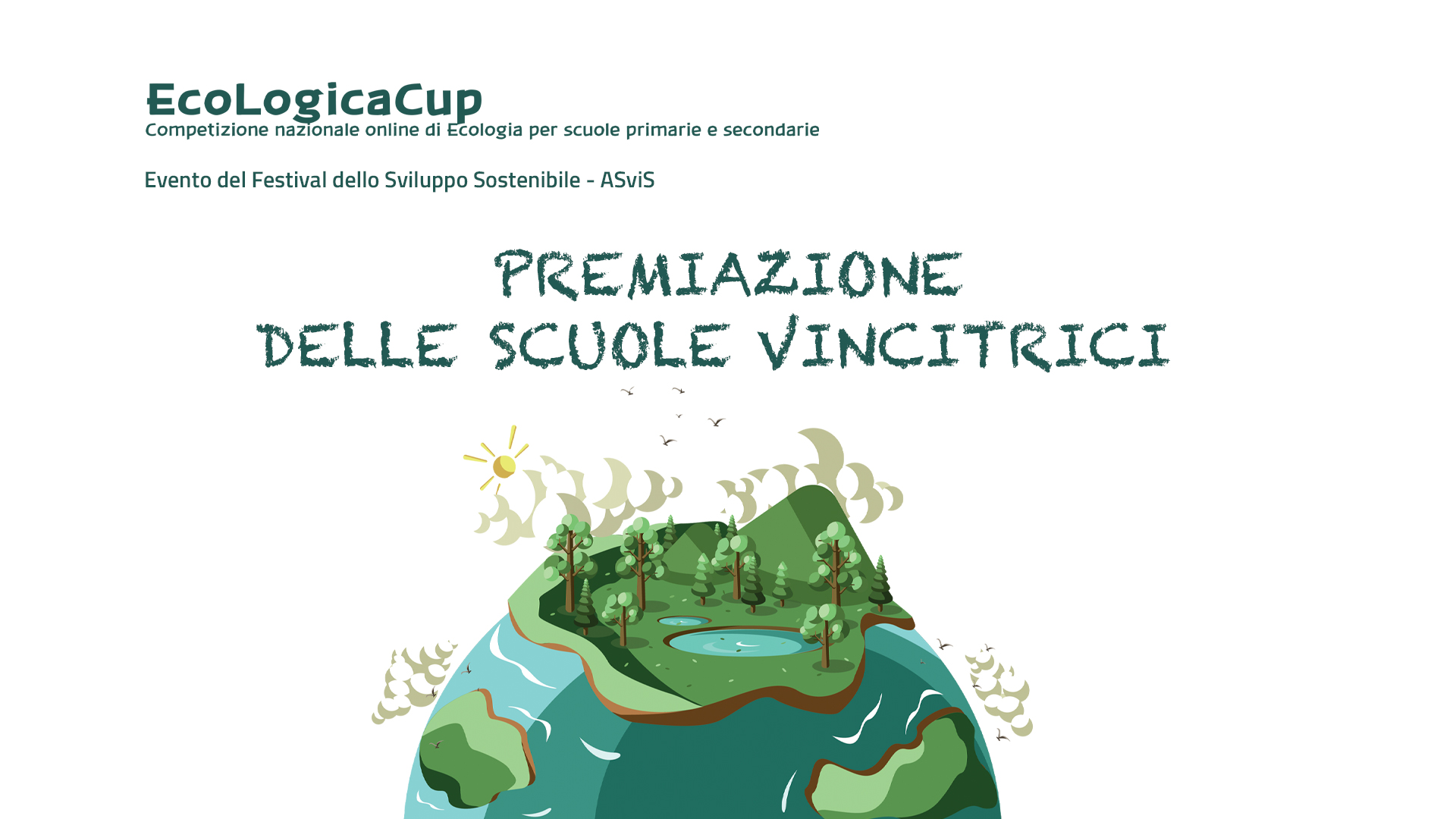
EcologicaCup 2024: la cerimonia di premiazione delle scuole vincitrici
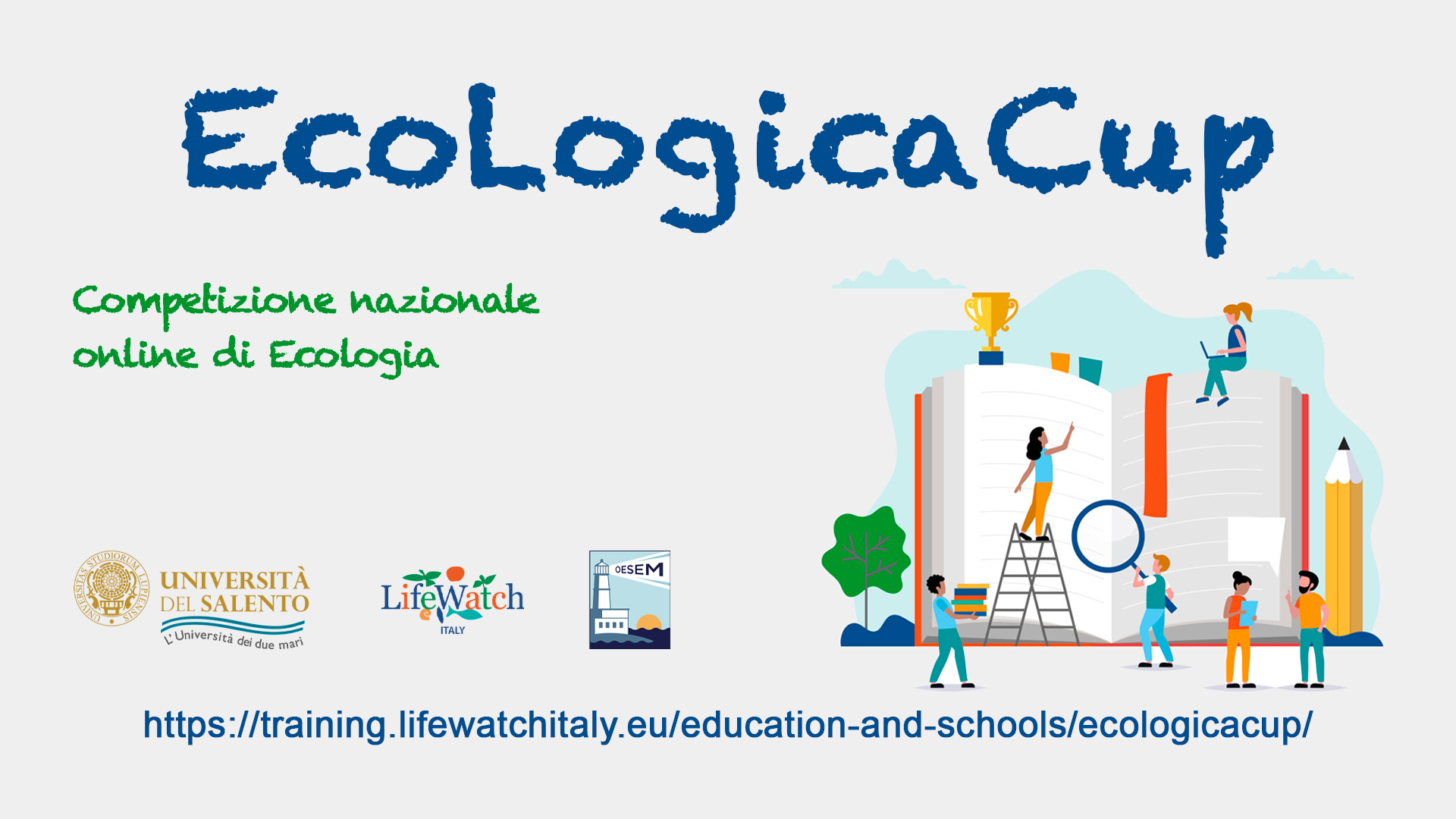
EcoLogicaCup, la gara nazionale di ecologia per le scuole | Spot
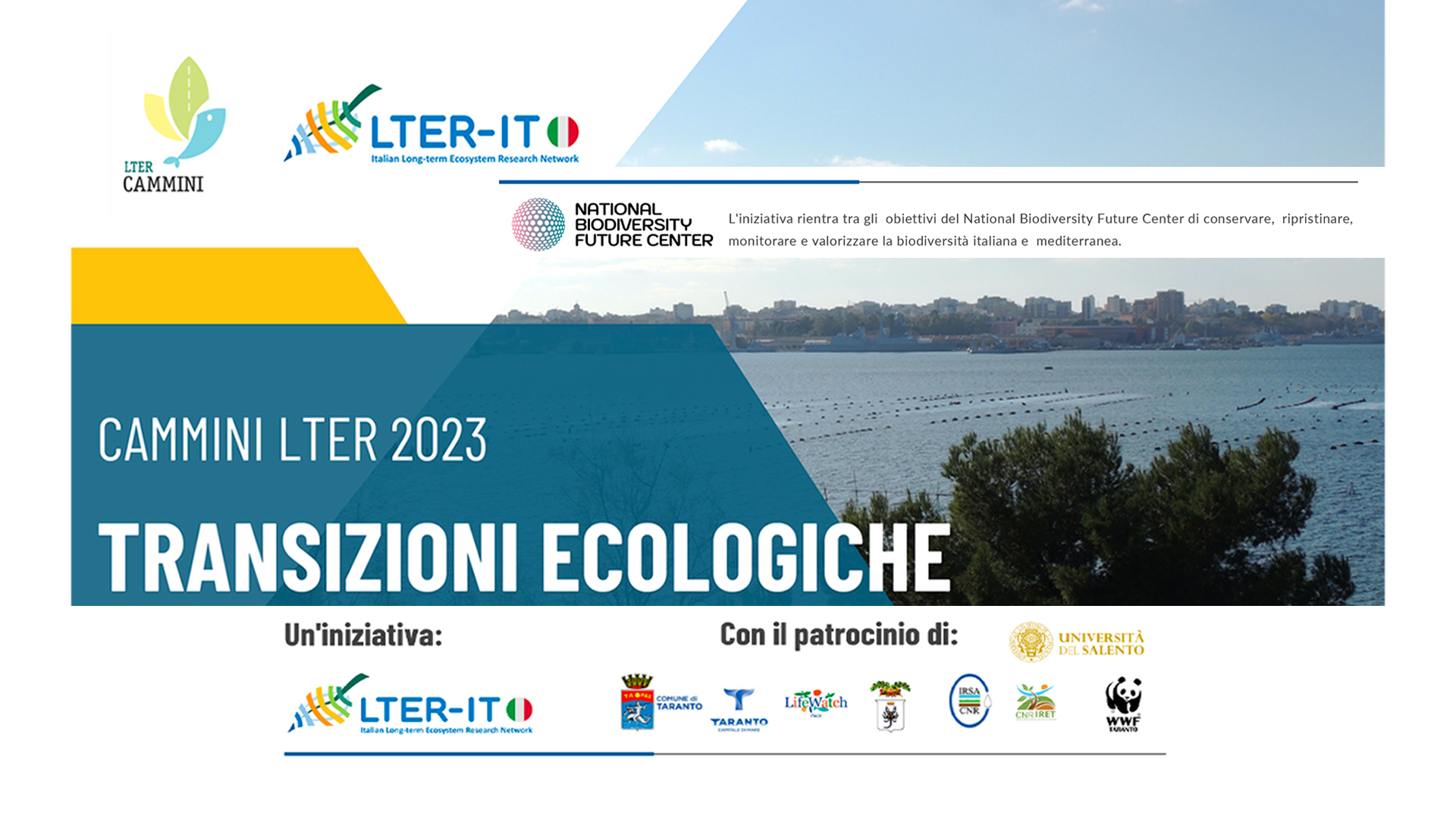
Transizioni ecologiche: i Cammini di LTER Italia
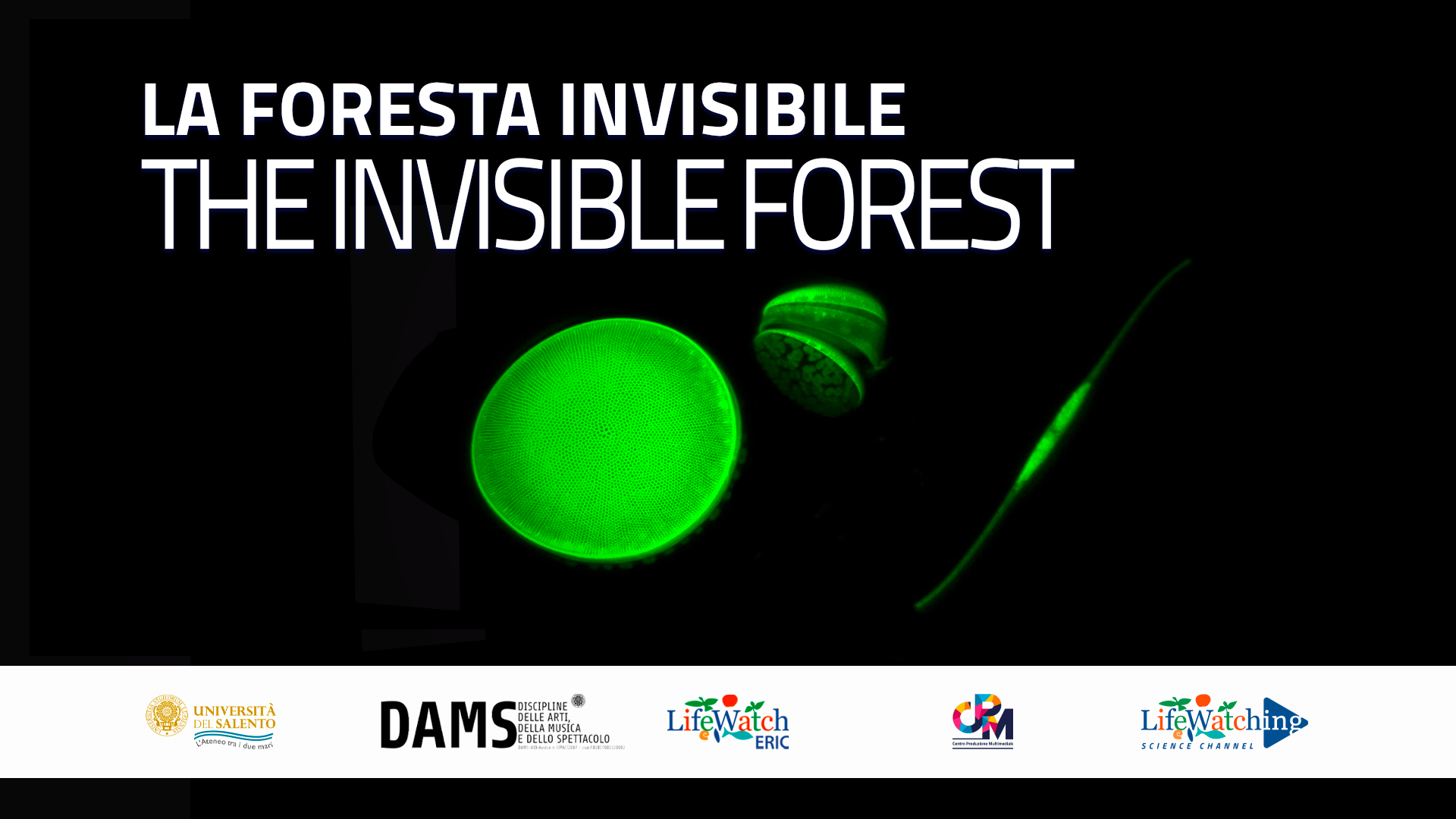
“La foresta invisibile” finalista al concorso Rai “Prix Italia 2023”

EcologicaCup 2023: la premiazione al Festival dello Sviluppo Sostenibile
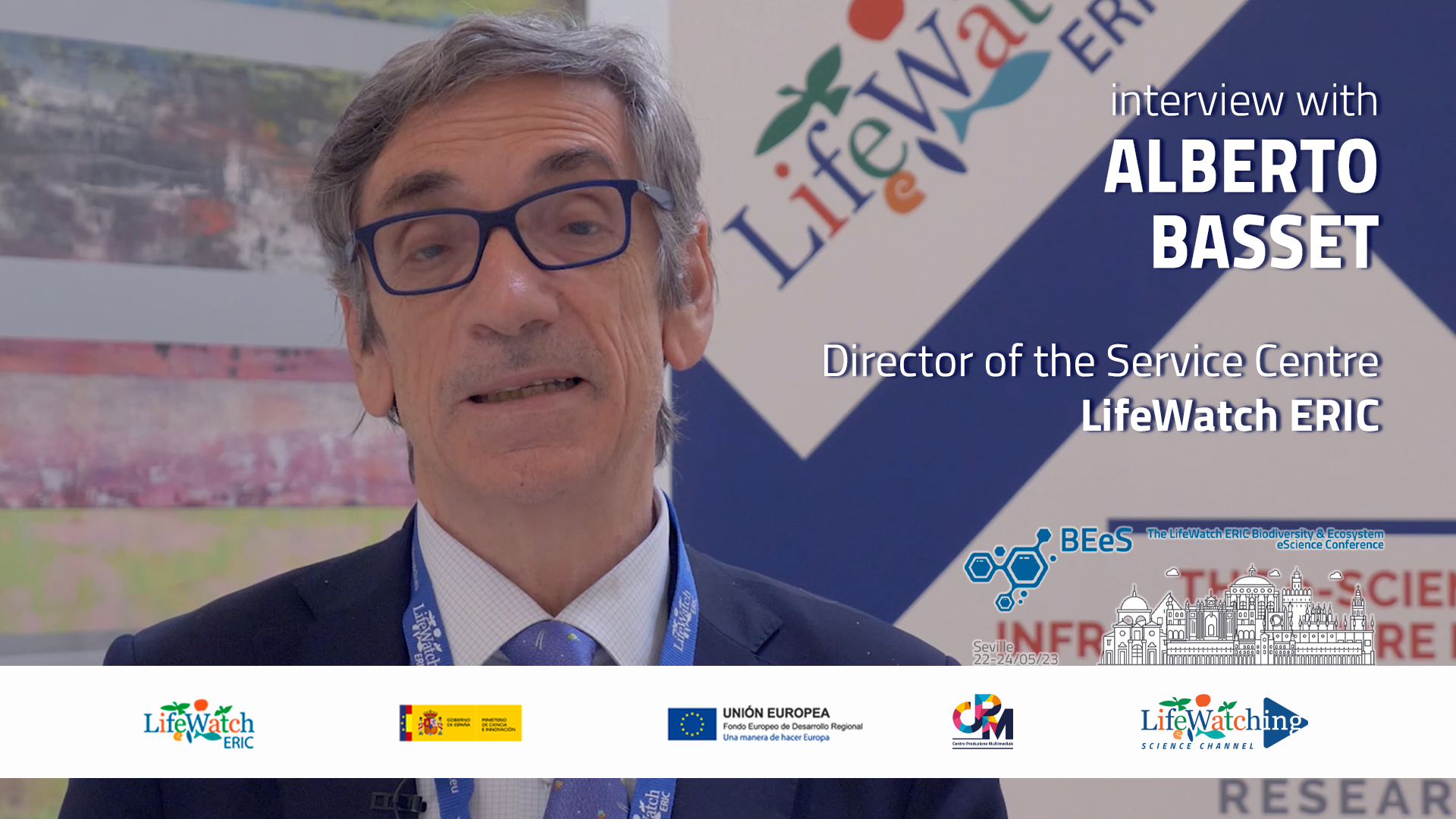
A better science to address the challenges in front of us
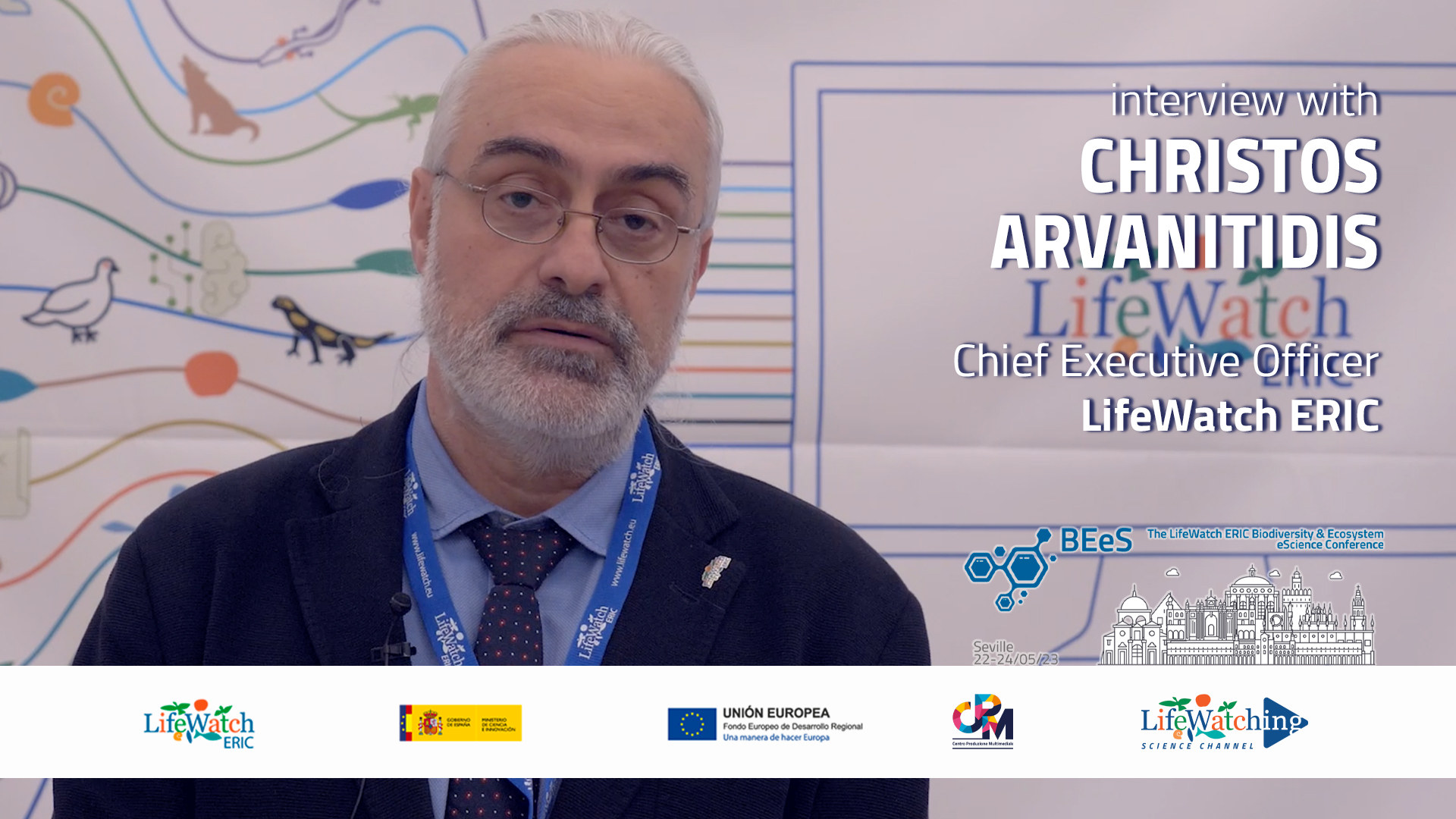
Supporting the Science for the Future
